I’m back in Nederland for a housesit (promo link, btw), and I felt like I needed to explore Boulder more this time. So I set up a day to explore all the museums in Boulder that I could find. And it was a great day! I saw fantastic art, learned more about Boulder’s history, and had some really exciting experiences.
This wasn’t an expensive day – in the end, I only paid $10 for the first museum. The rest are free (or were free that day.) The museums I found to visit are the Museum of Boulder, the Art, Natural History, and Heritage Center museums at the University, the Boulder Museum of Contemporary Art, the National Center for Atmospheric Research, and the Longmont Museum. Let’s take a look at each one. These are in no particular order, except that they’re the order in which I visited them.
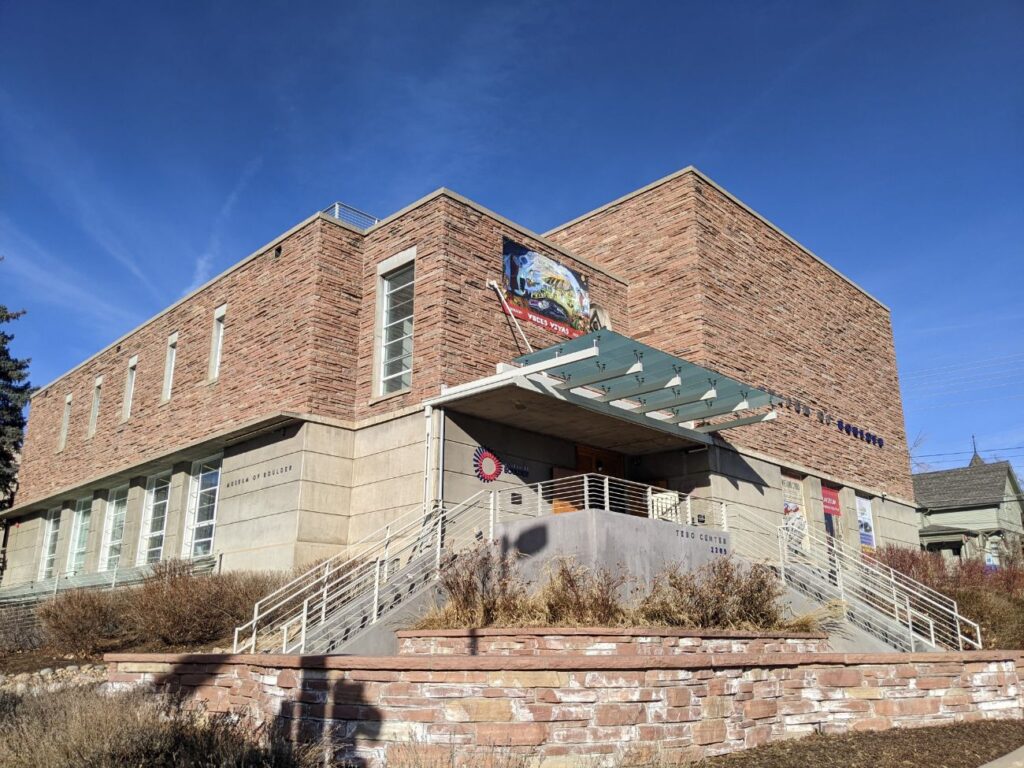
Museum of Boulder
I figured I should start with THE Boulder Museum, now called the Museum of Boulder. It’s Boulder’s local history museum with high-tech play areas for kids and a lovely roof terrace. There are three (and a half) floors to explore.
Voces Vives
On the first floor is the admissions desk, a gift shop, and a room with changing exhibits. Don’t miss a corner shelf with items from all of Boulder’s sister cities. Right now, the special exhibit is “Voces Vives,” the stories of the Spanish-speaking residents of Boulder County. Make sure to sit down in the living room area and push the button on the radio for an immersive storytelling experience. The rest of the room contains art, tributes, and stories of the men who worked in the mines.
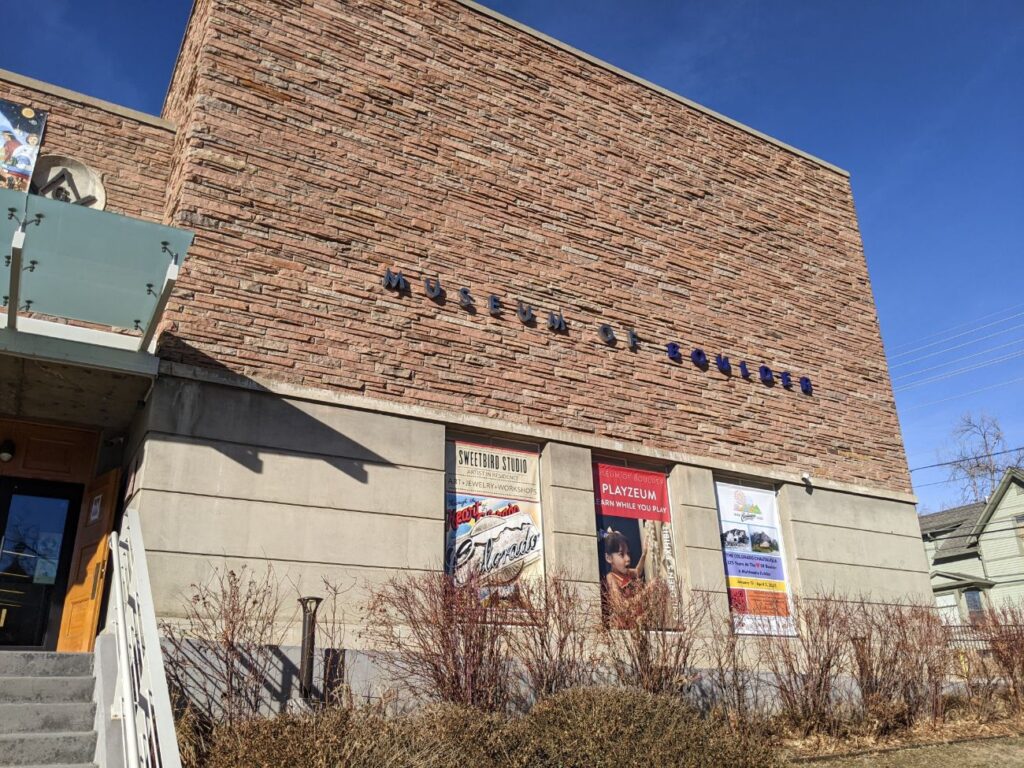
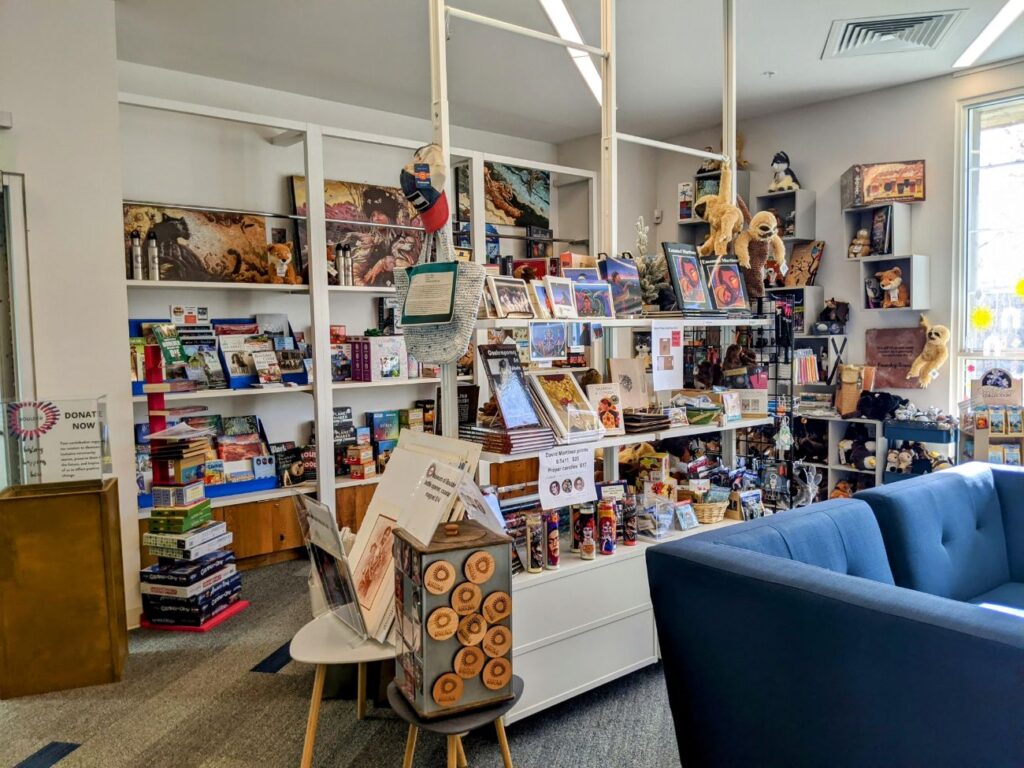
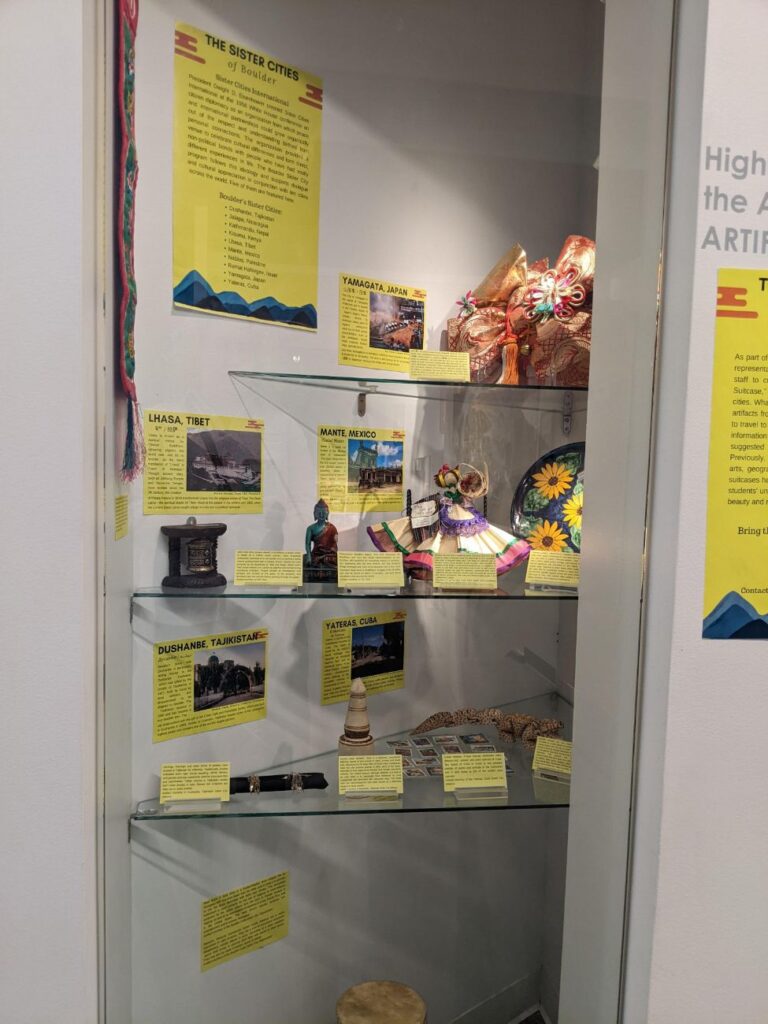
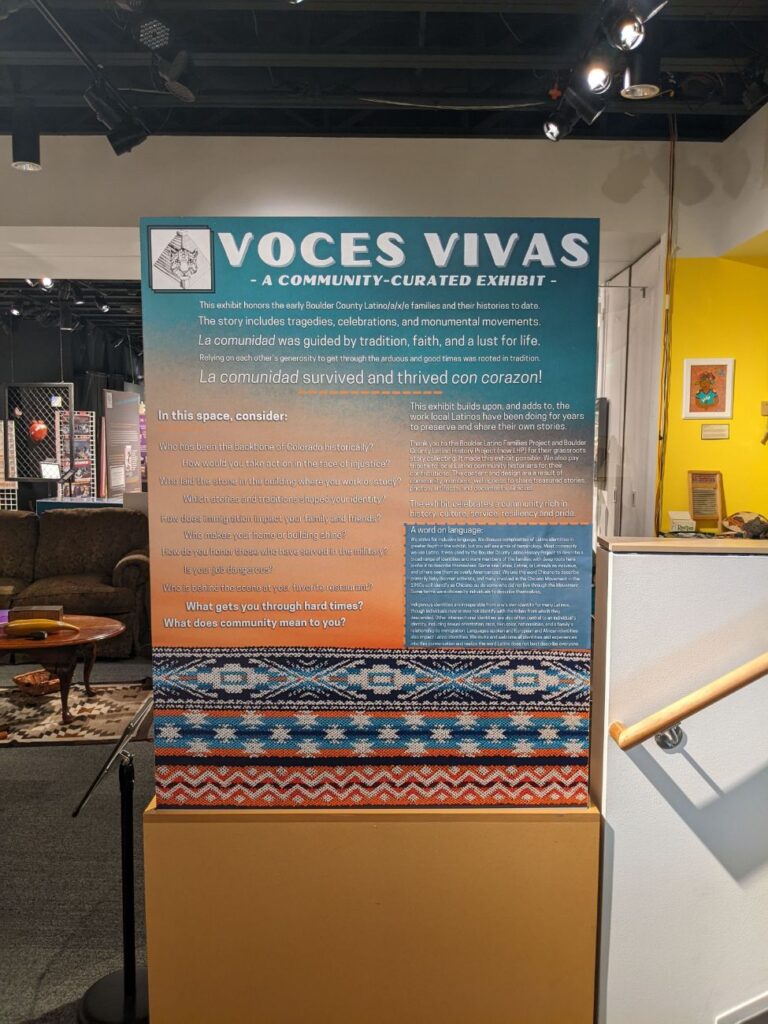
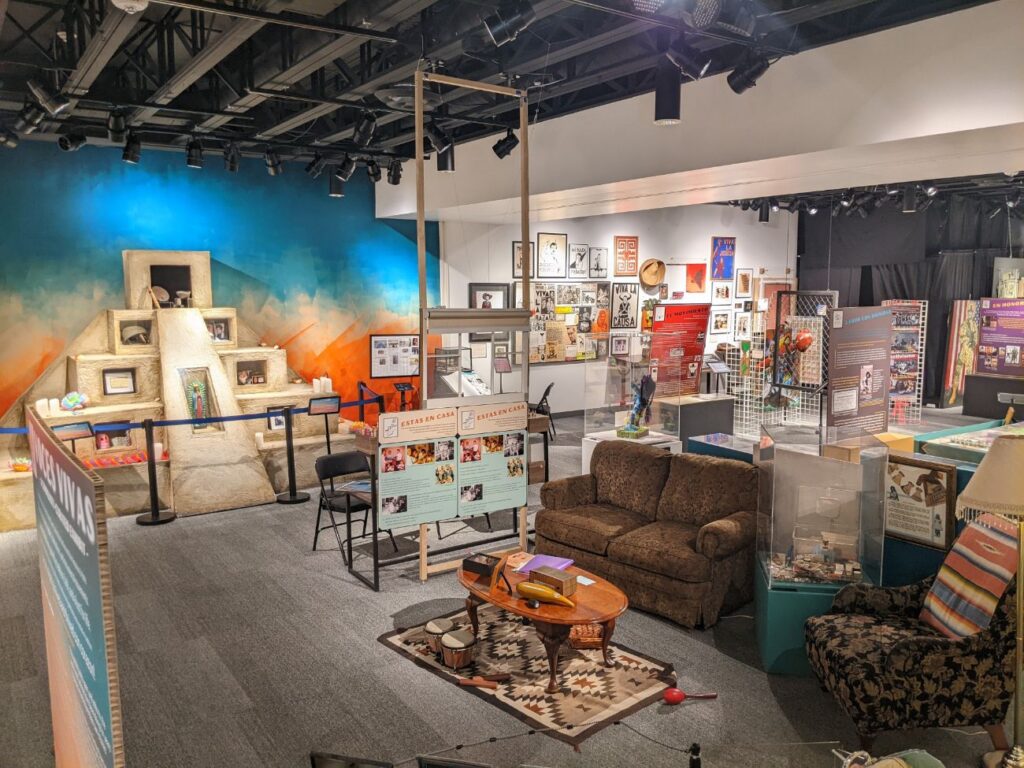
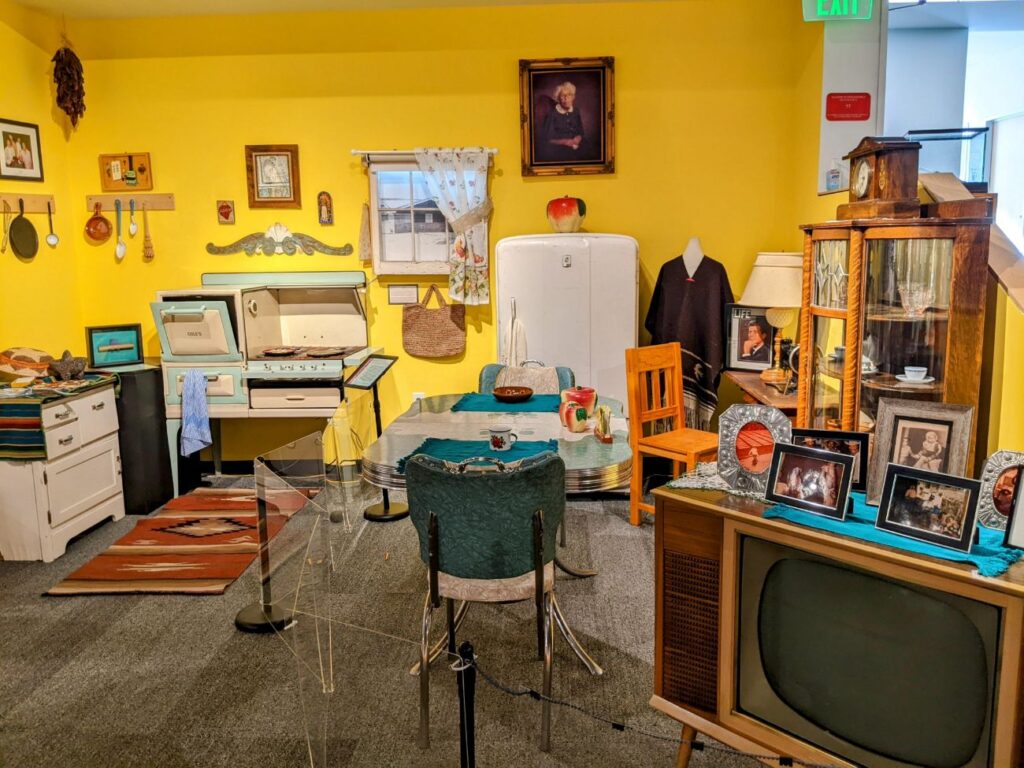

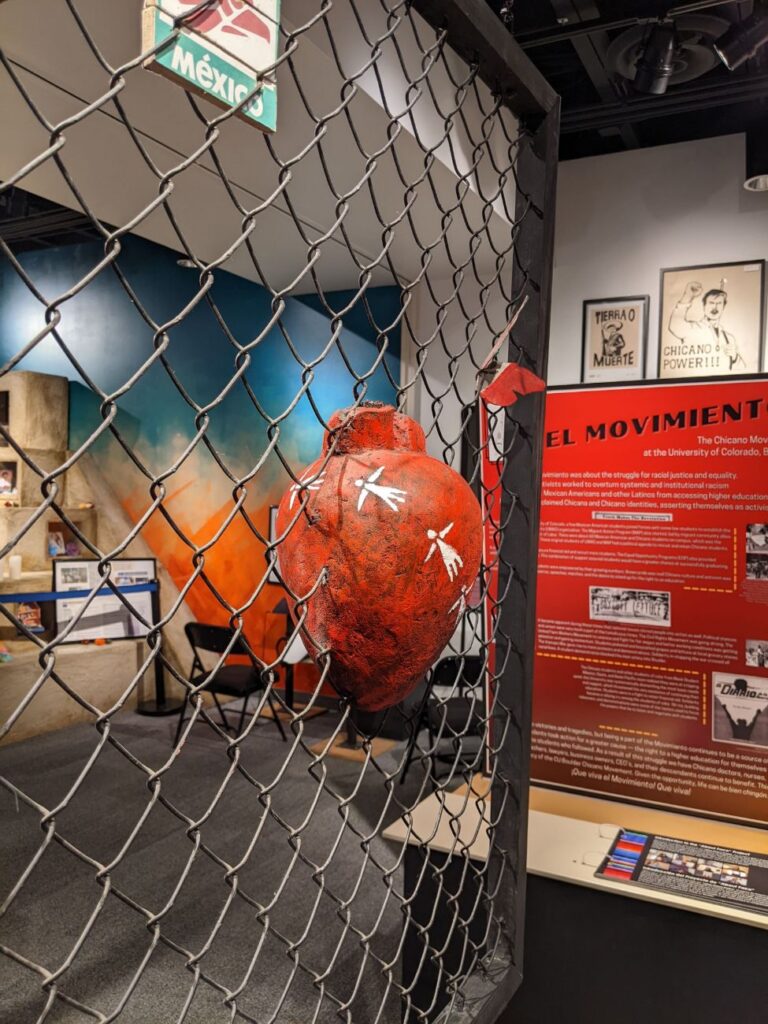
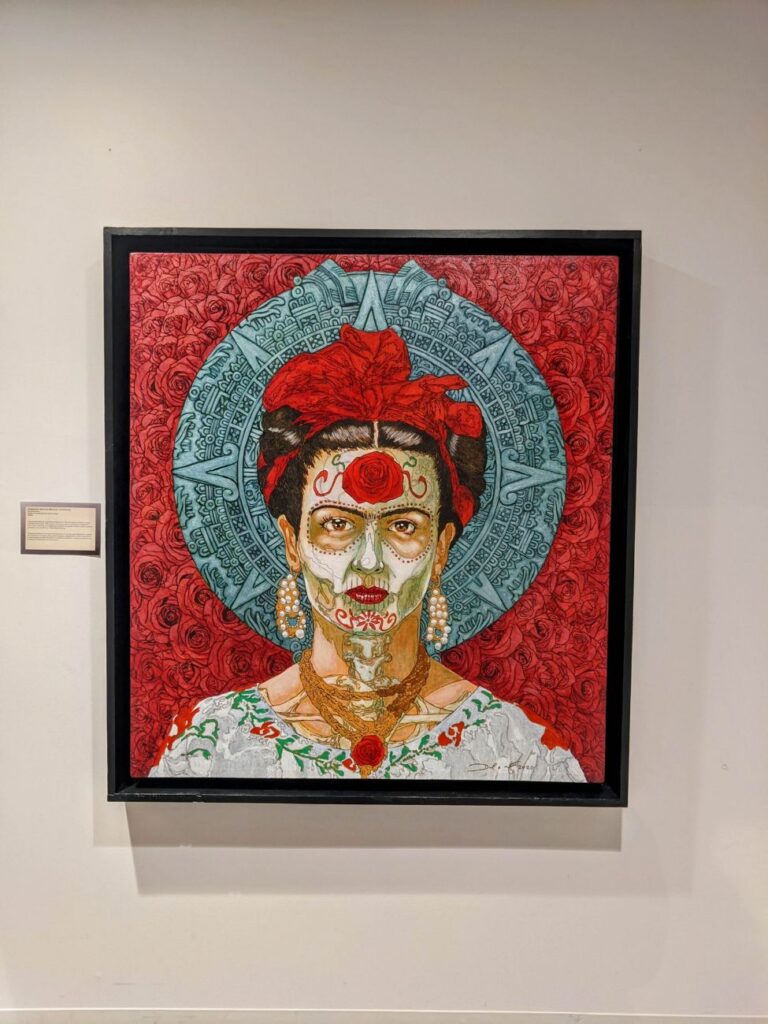
Local History
The second floor is the main museum space. There’s a small theater about the Arapahoe people and history, the original population of the area. A wall on the left is a timeline of European settlers in the area. On the right is a wall dedicated to all the outdoor sports Boulderites enjoy, like climbing, cycling, running, kayaking, and skiing. At the far end is an alcove that shows a video about the Google campus in Boulder, and a larger area showcases technology in Boulder, like the space program and the atmospheric weather lab.
In the middle of the room are touch tables where you can interact with some of Boulder’s issues today, like diversity or homelessness. See pictures, watch videos, and even write comments about each topic. I also really enjoyed the touchscreen about Caribou Ranch, a recording studio in Nederland that I had no idea about! On the screen, you can slide images of records that were recorded there to a virtual turntable to listen to the music, or play a short documentary about the ranch. And they are absolutely artists and songs that you have heard before – Chicago, Billy Joel, U2, Phil Collins, Tom Petty, Elton John – so many!
Behind the “sports” wall is the cool-looking Google Garage where kids can use the 3D printer virtual reality, and more. An event space has photos on the walls about the 125-year history of Chautauqua in Boulder.
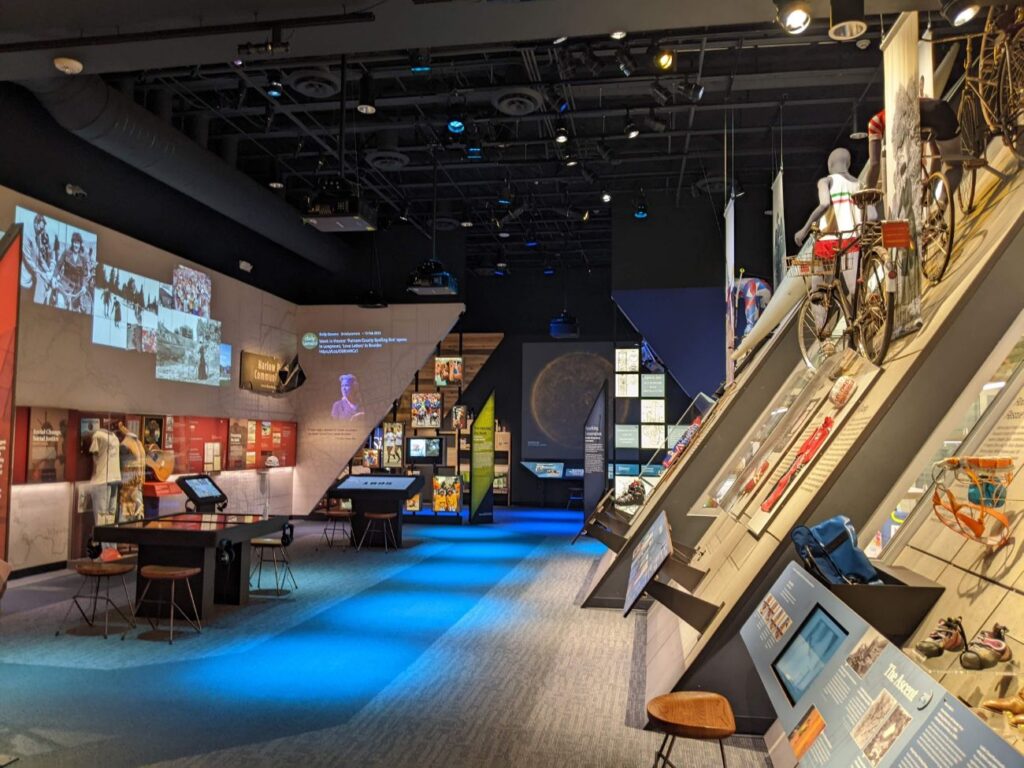
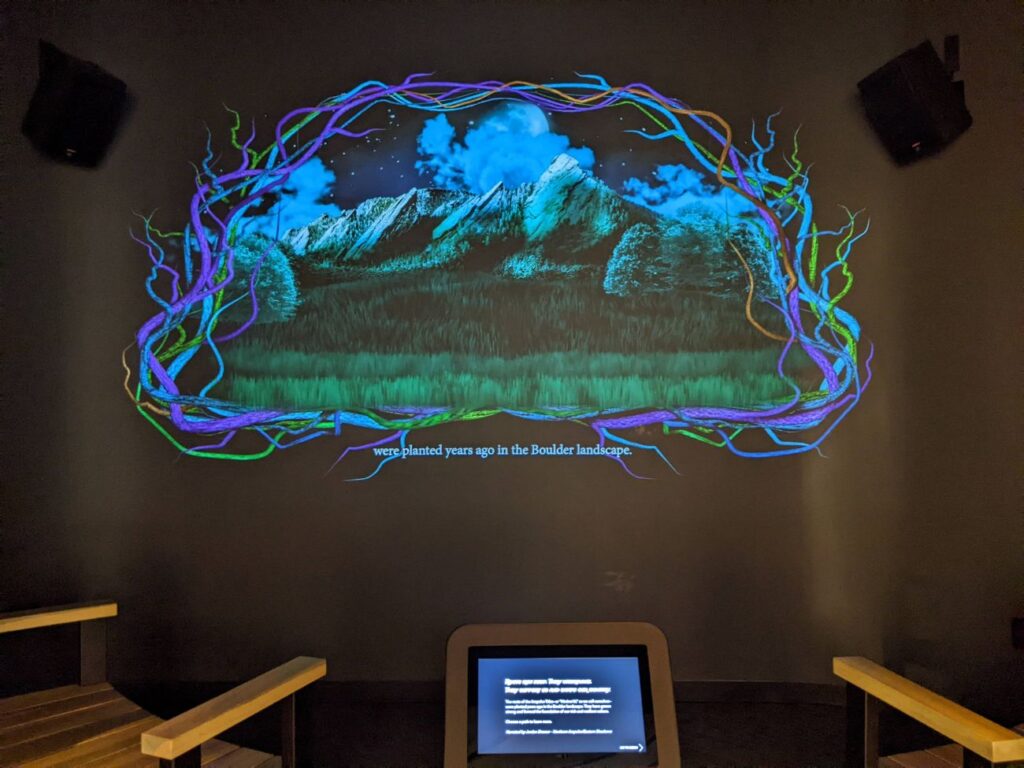
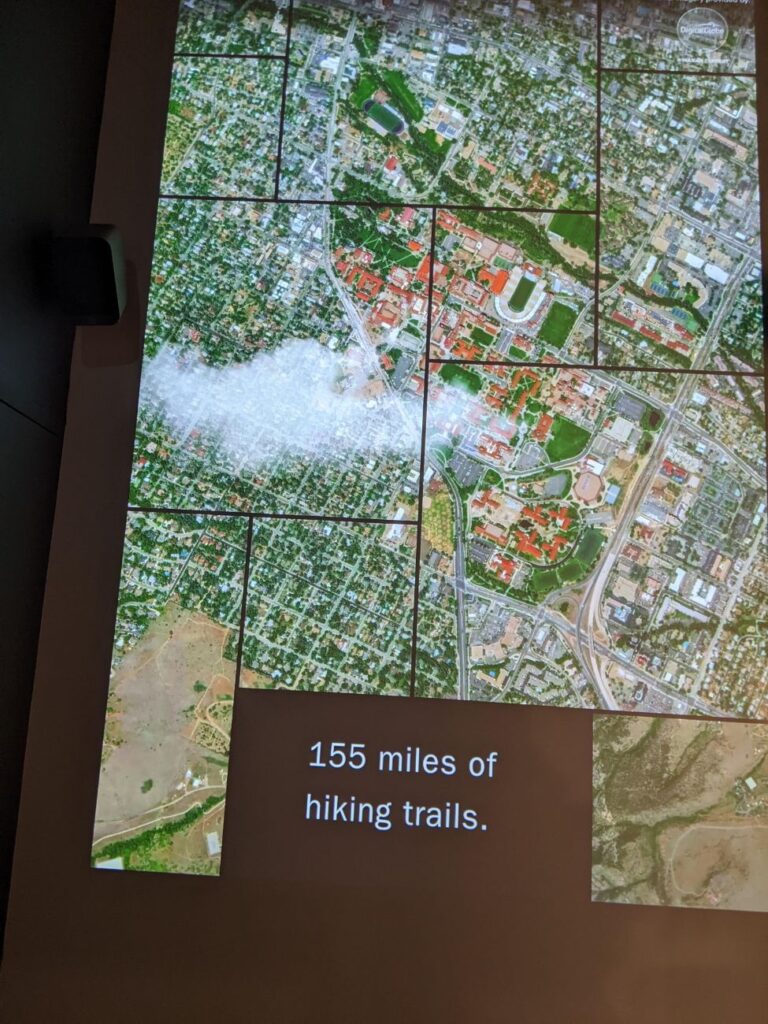
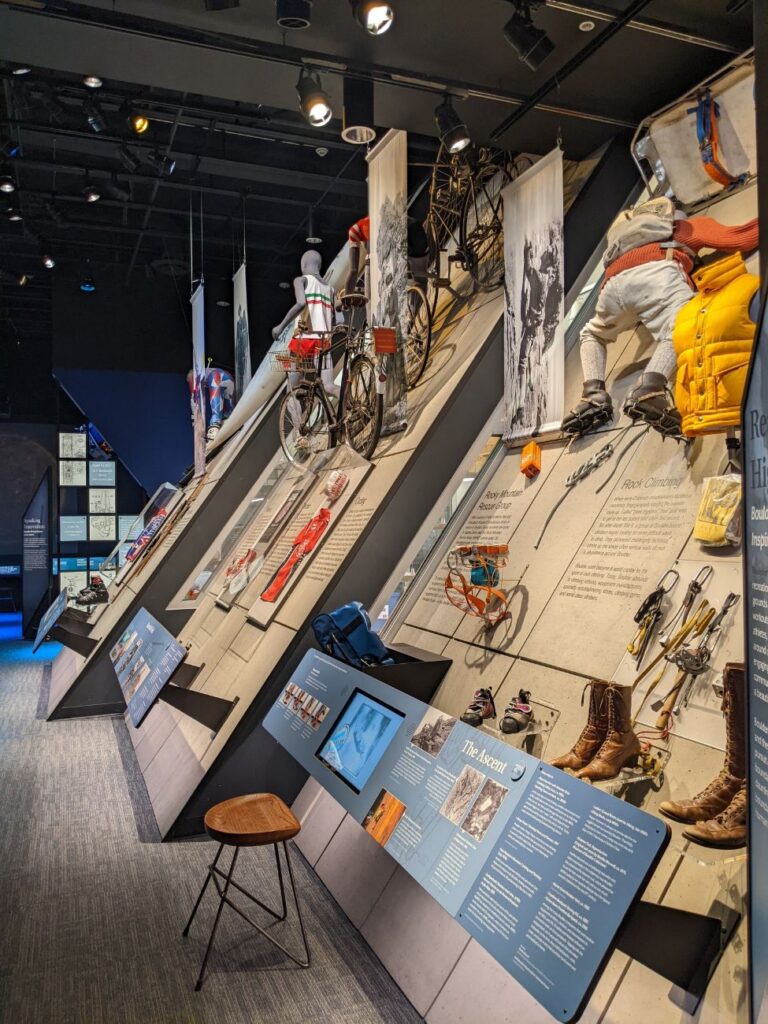
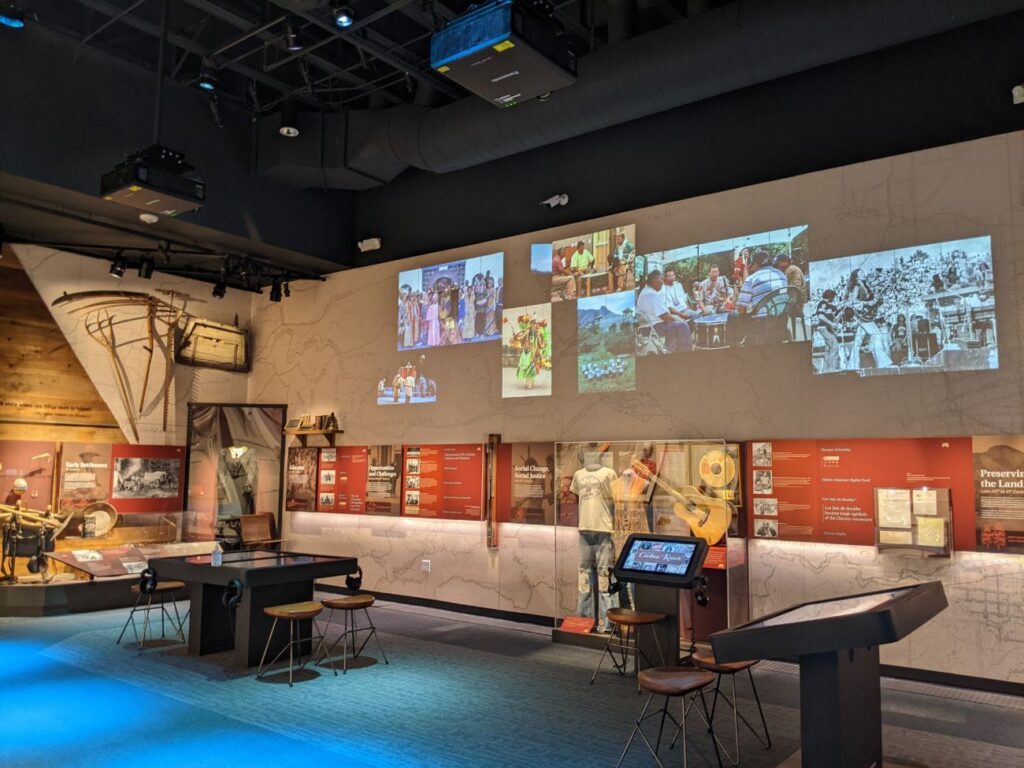
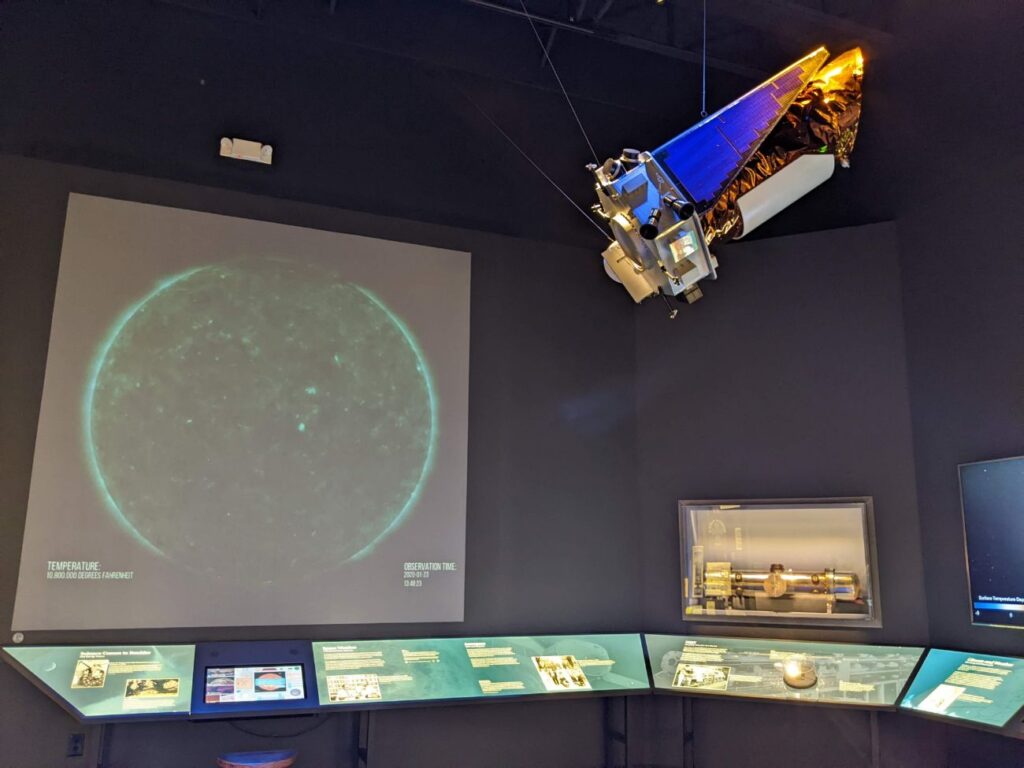
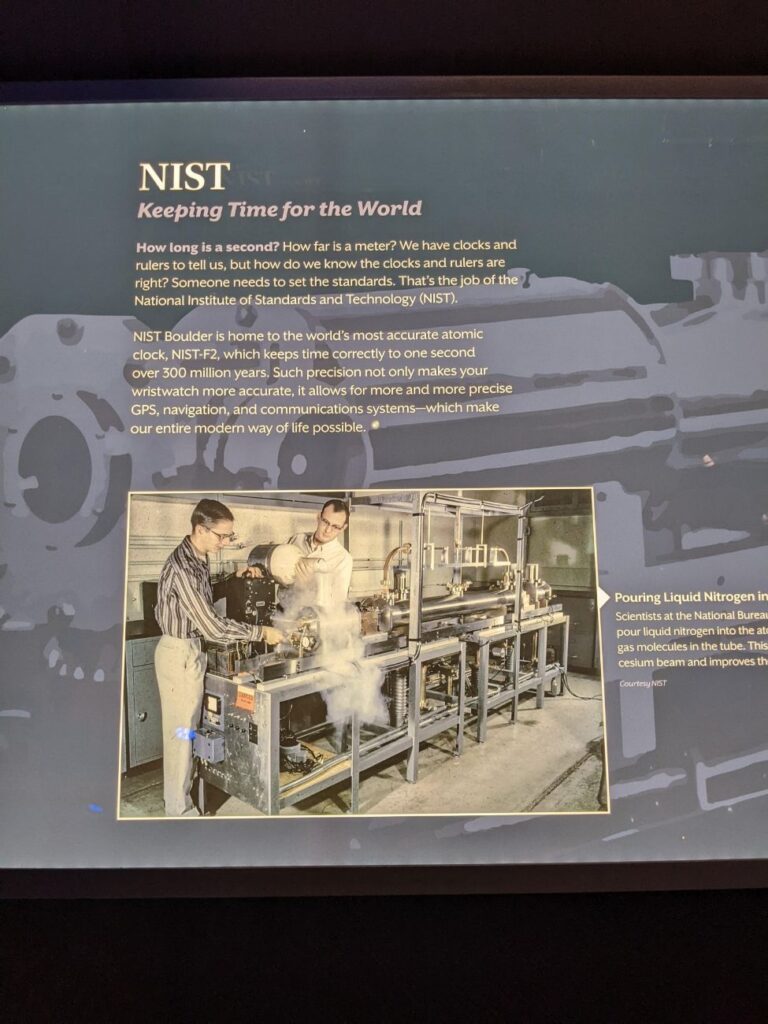
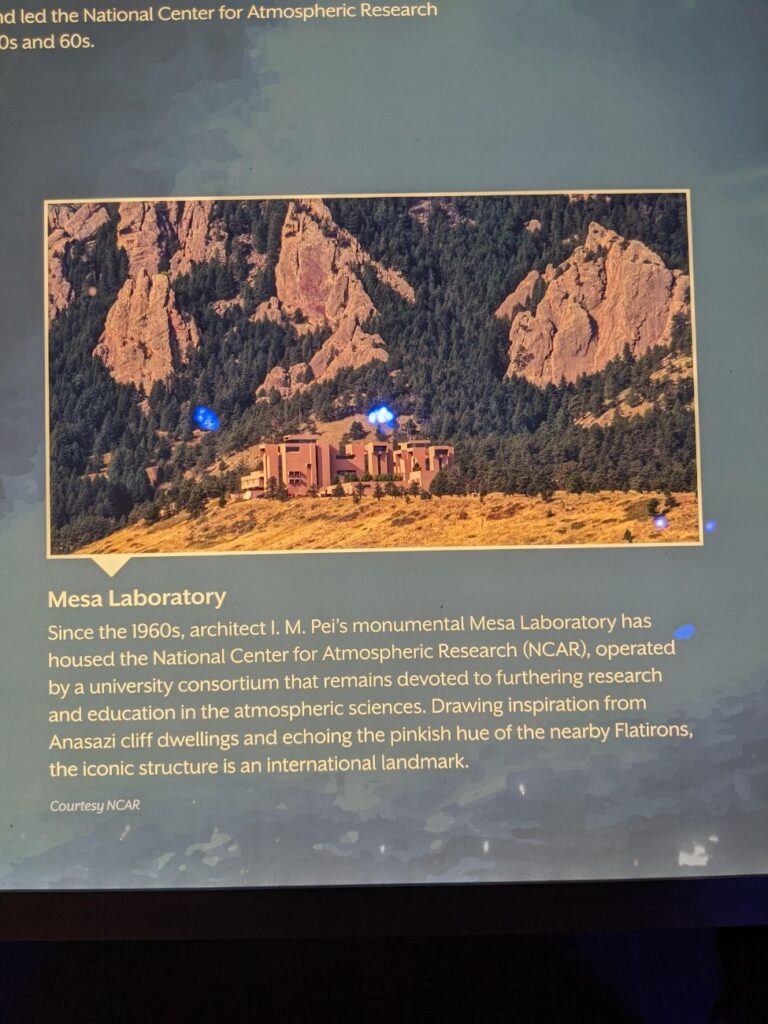
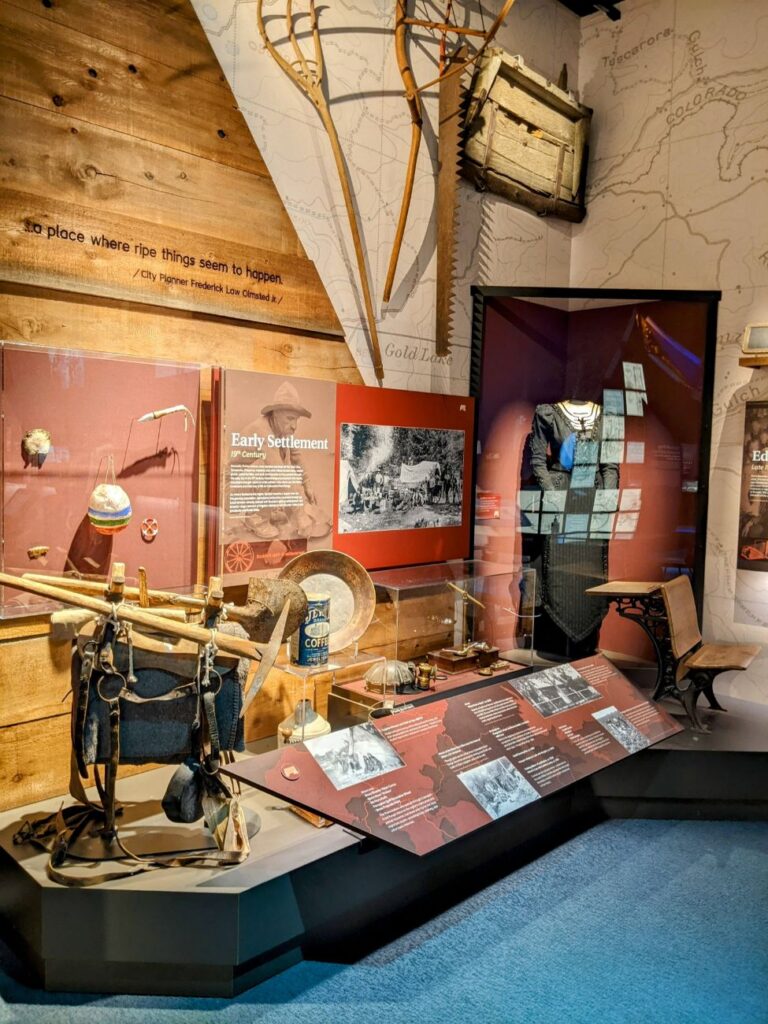
Roof & Basement
Up on the roof level (via elevator only), you can reach a pretty roof terrace with beautiful views of the surrounding neighborhood with the mountains in the background. Down in the basement level is the playzeum with creative stations to engage all ages. (I may have jumped on some stomp pads.)
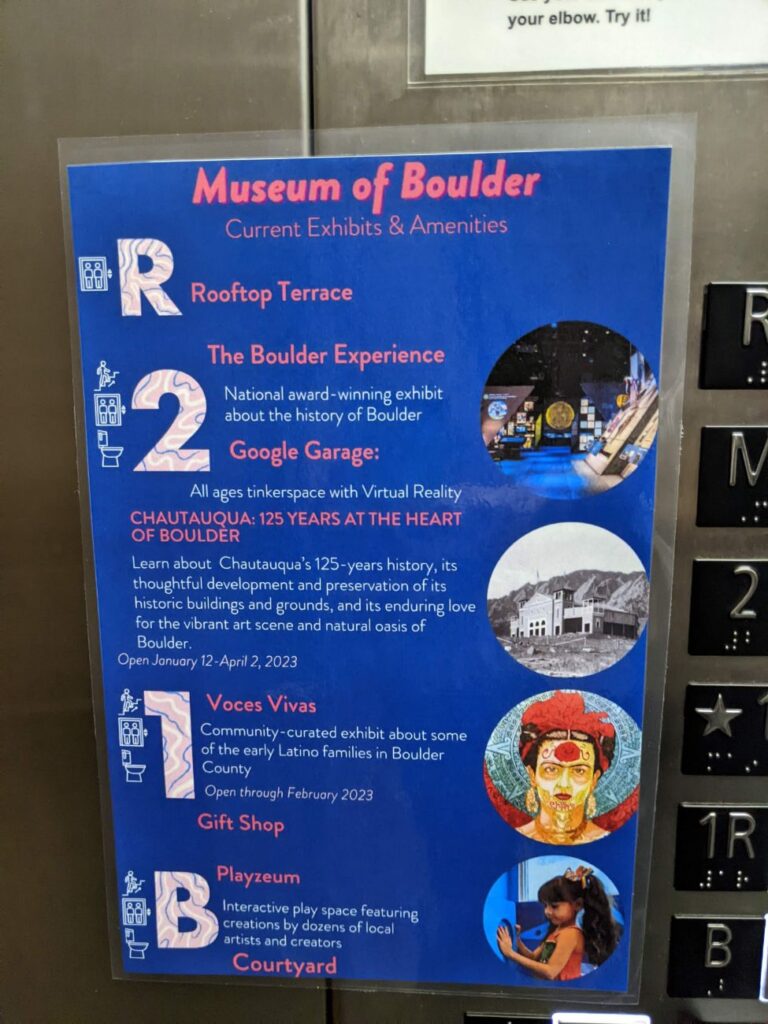
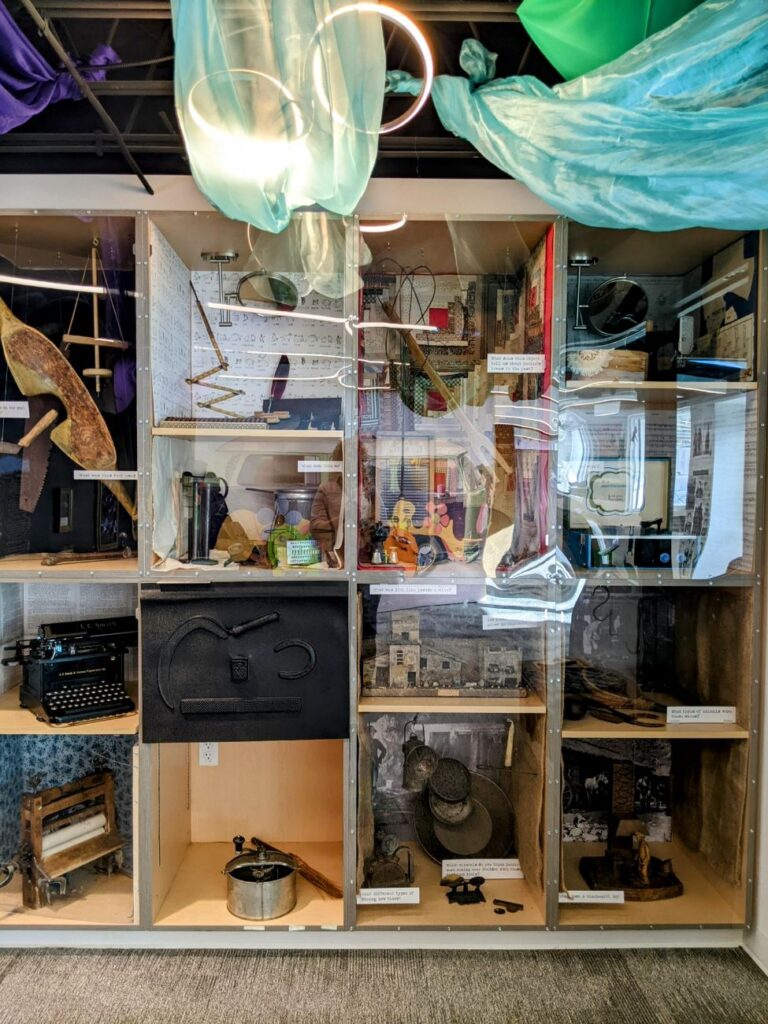
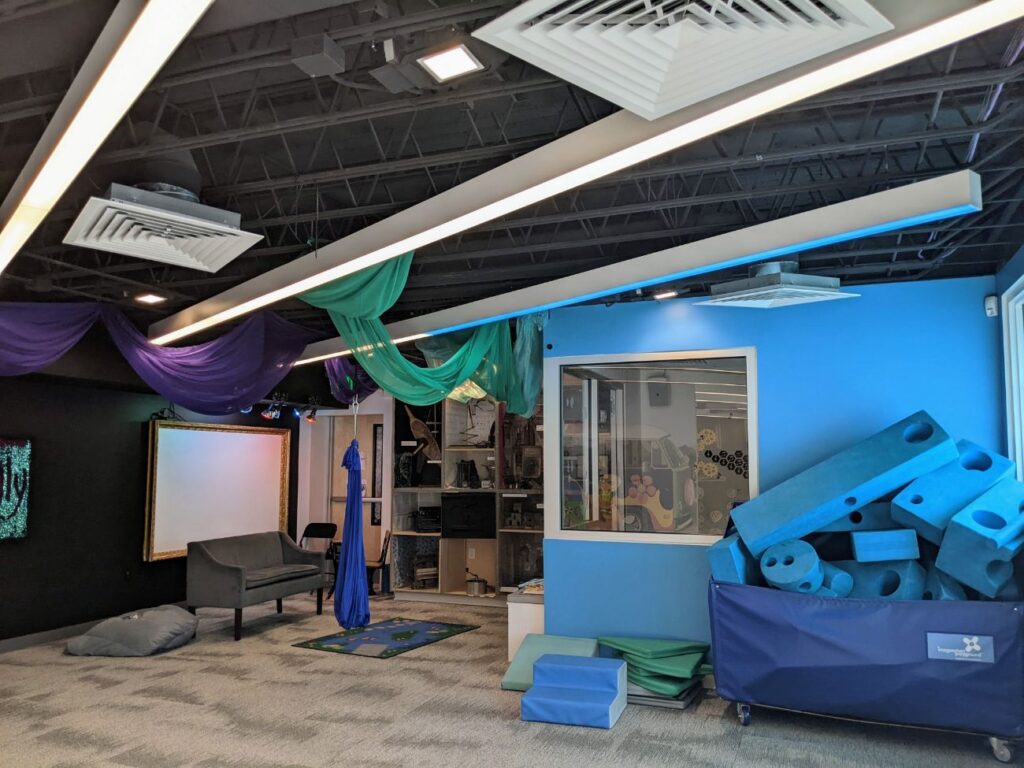
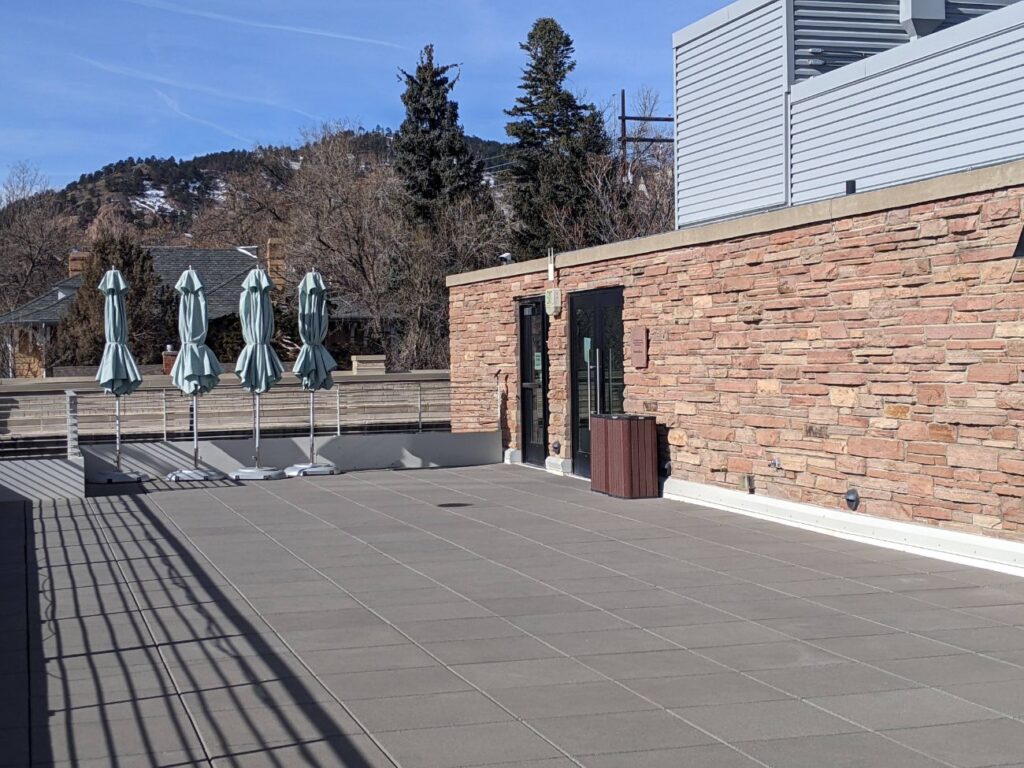
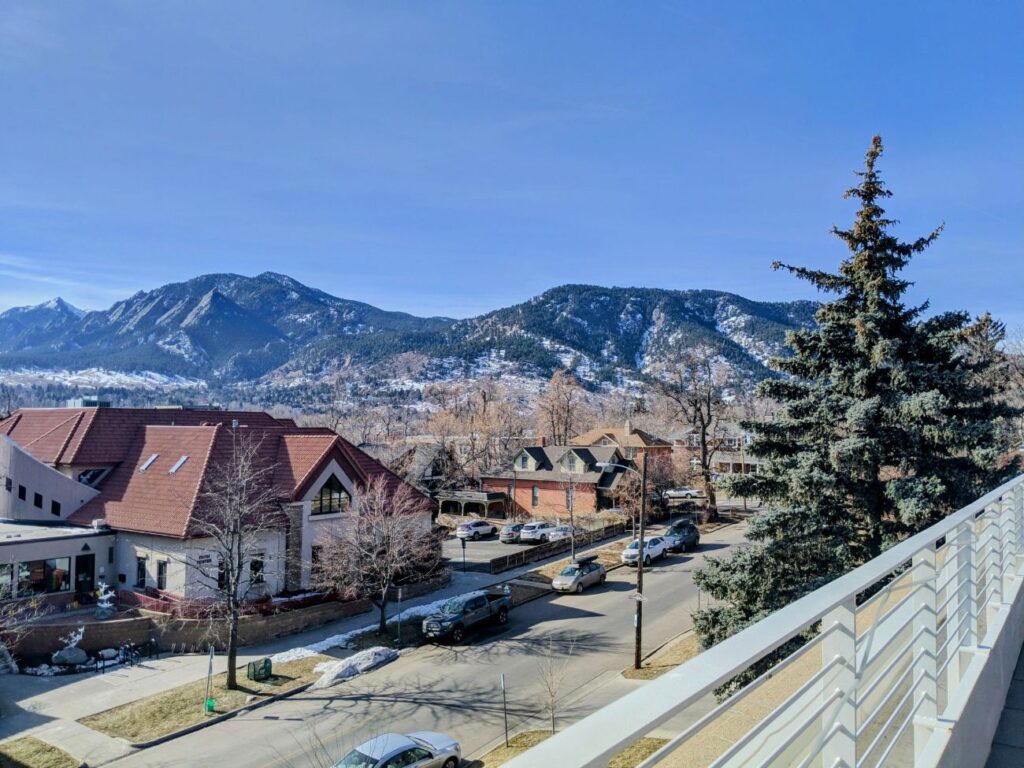
Hours & Admission
The Museum of Boulder is open 9-5 daily, except for Tuesdays when they are closed. Adults cost $10, seniors, college students, and kids 5-17 are $8, Kids under 5 are free and so are those on SNAP benefits.
There is a small parking lot behind the museum with an entrance on Pine Street. Plus, there is limited street parking that is free for two hours, which is more than enough time to tour the museum. It took me about an hour and a half, but it might not take everyone that long. It’s also worth noting that I arrived when they opened on Saturday and was the only person there the whole time.
The Museum of Boulder isn’t too far from Pearl Street. I used my extra half-hour of parking time to walk over and get a coffee and a pastry for “second breakfast.” It’s also nice to walk around Pearl Street when it isn’t quite so crowded.
Museums at the University of Colorado Boulder
There are three free museums at the University of Colorado Boulder. Plus, visiting them gives you a nice overview of the beautiful Spanish Renaissance Revival campus. To visit, I parked in the Euclid Parking Garage off of Broadway. Visiting all three museums plus a bit of a walk around campus on my way back took about an hour and forty-five minutes. You could probably get by with an hour and a half of parking for all three if you don’t wander around as much as I did.
CU Art Museum
The Art Museum on campus is just behind the Euclid Parking Garage. It features four galleries that you can walk through horseshoe-style. Most of the space is currently devoted to a collection of contemporary art prints made by Shark’s Ink in nearby Lyons, Colorado. There are the prints themselves, plus videos of the printing process. One gallery is reserved for some more ancient artifacts – it mostly looked like Asian art and some smaller-scale sculptures to me.
The CU Art Museum is always free to visit. It’s open from 10-4, Tuesdays-Saturdays.
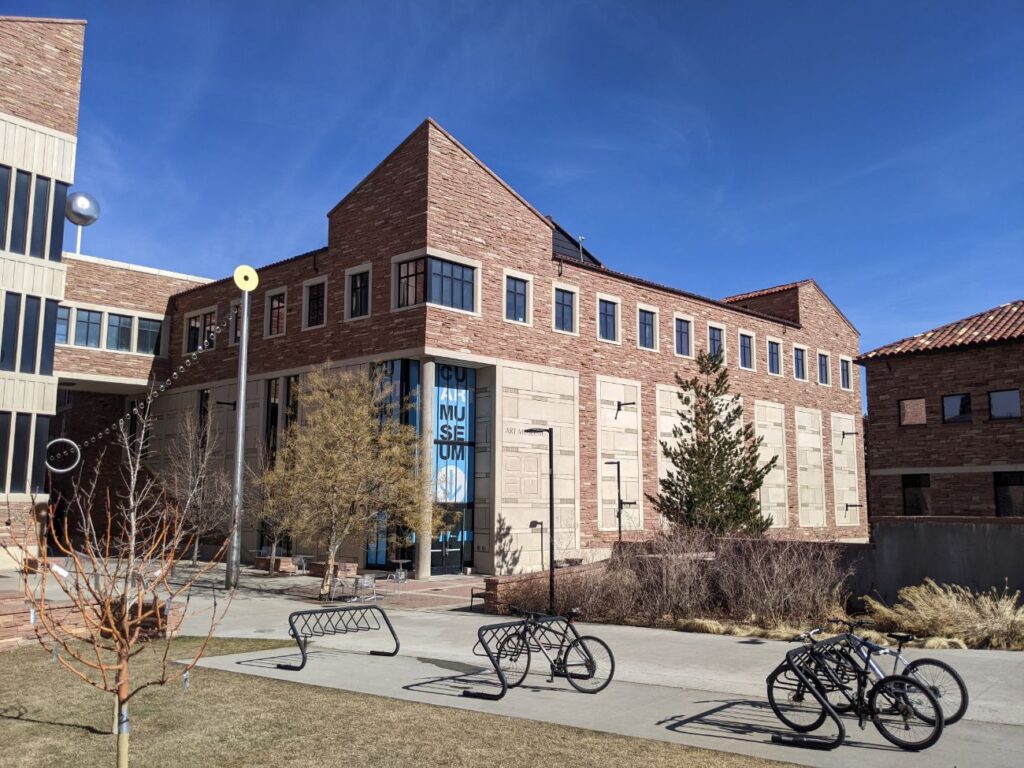
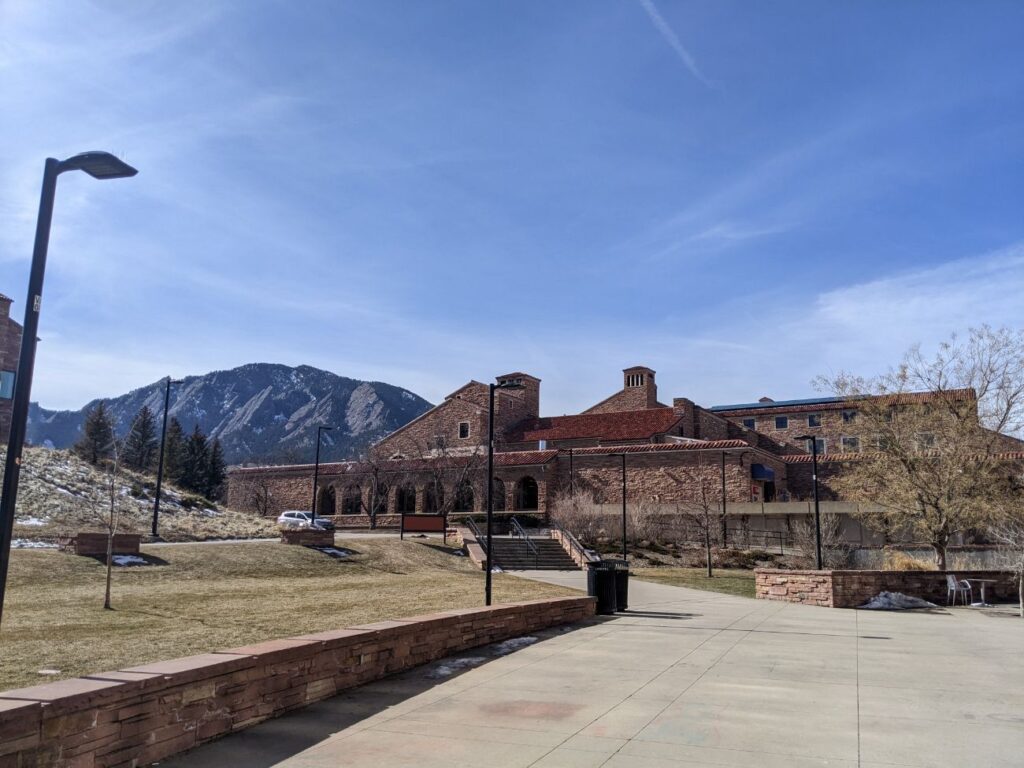
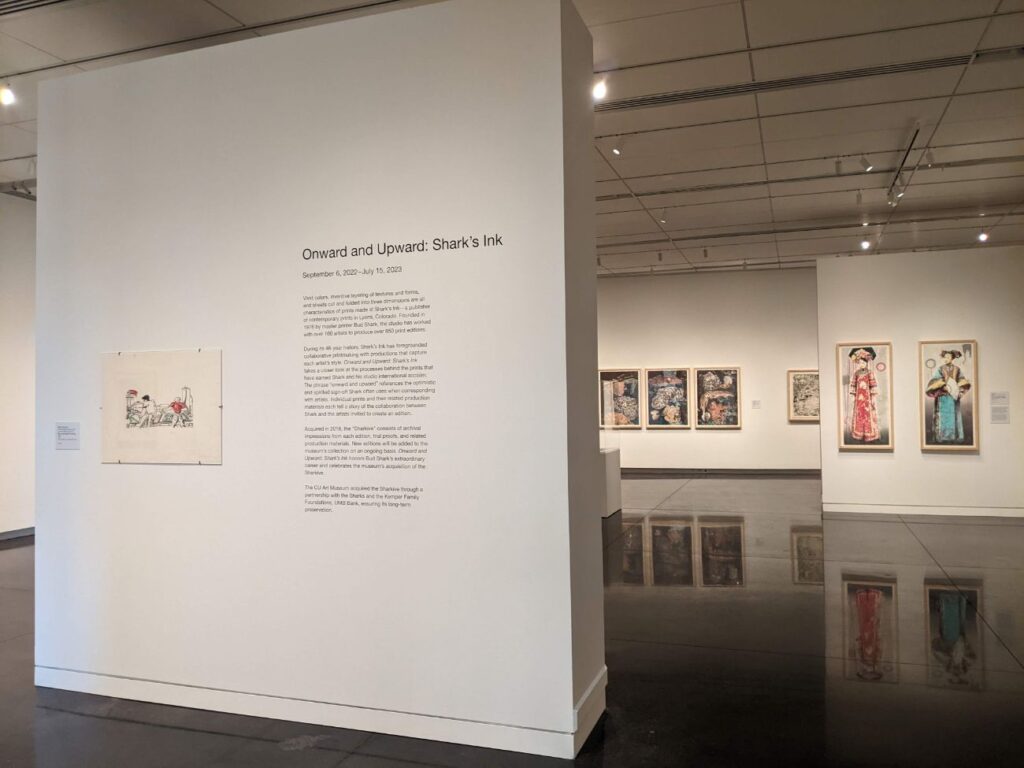
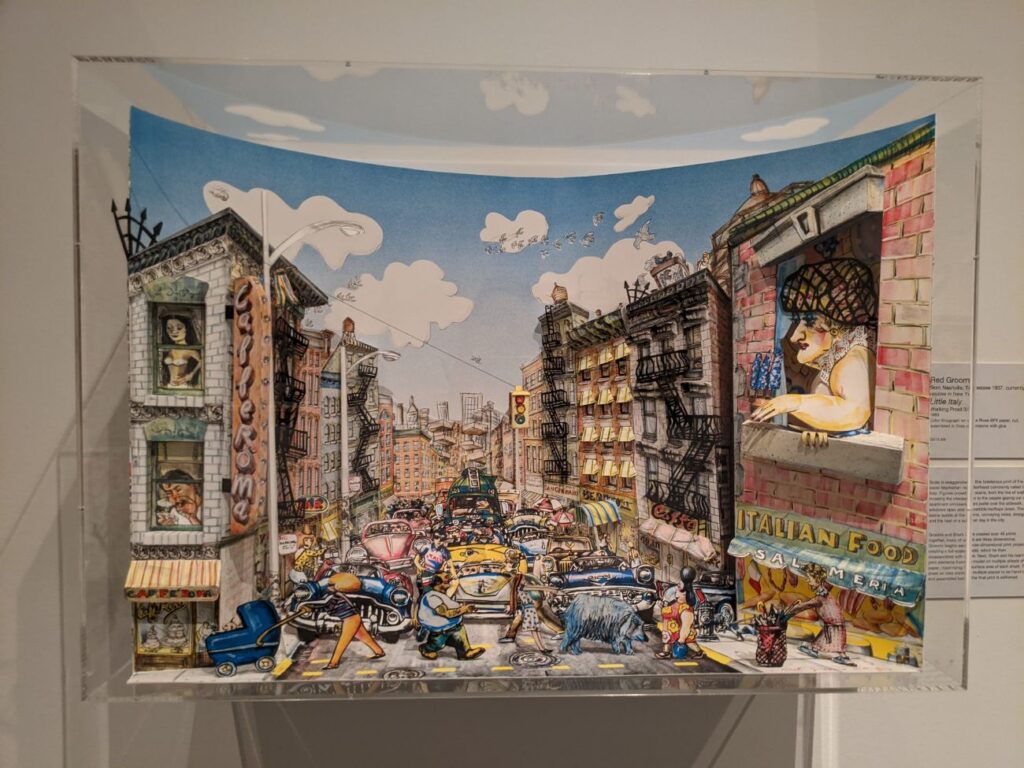
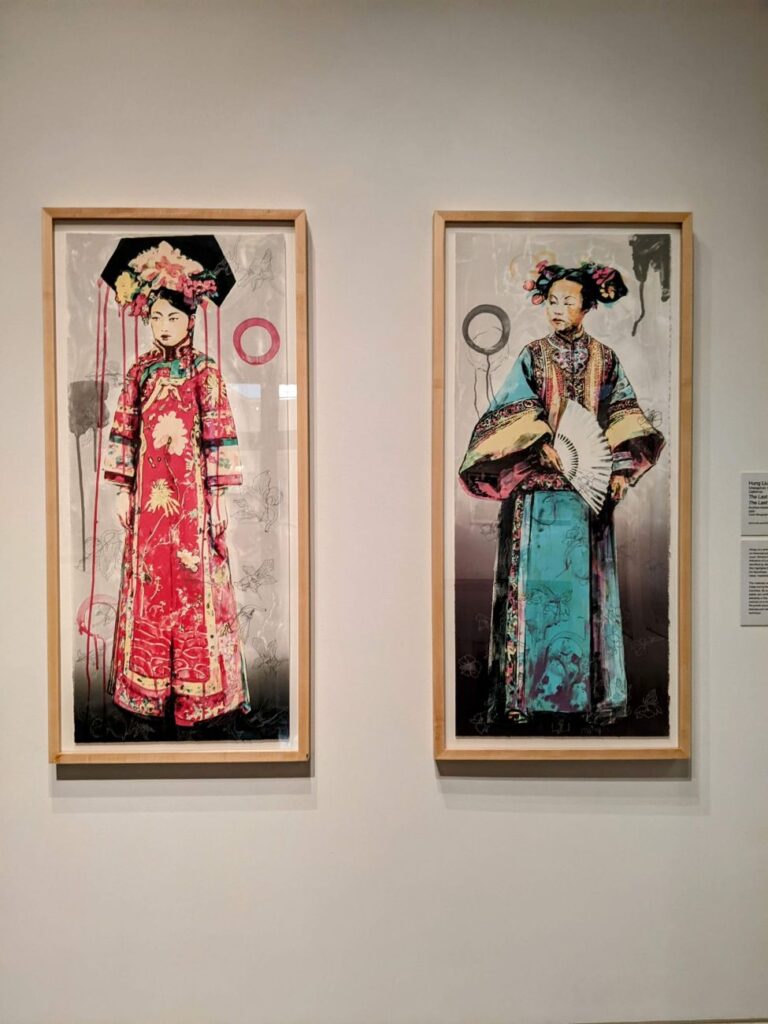
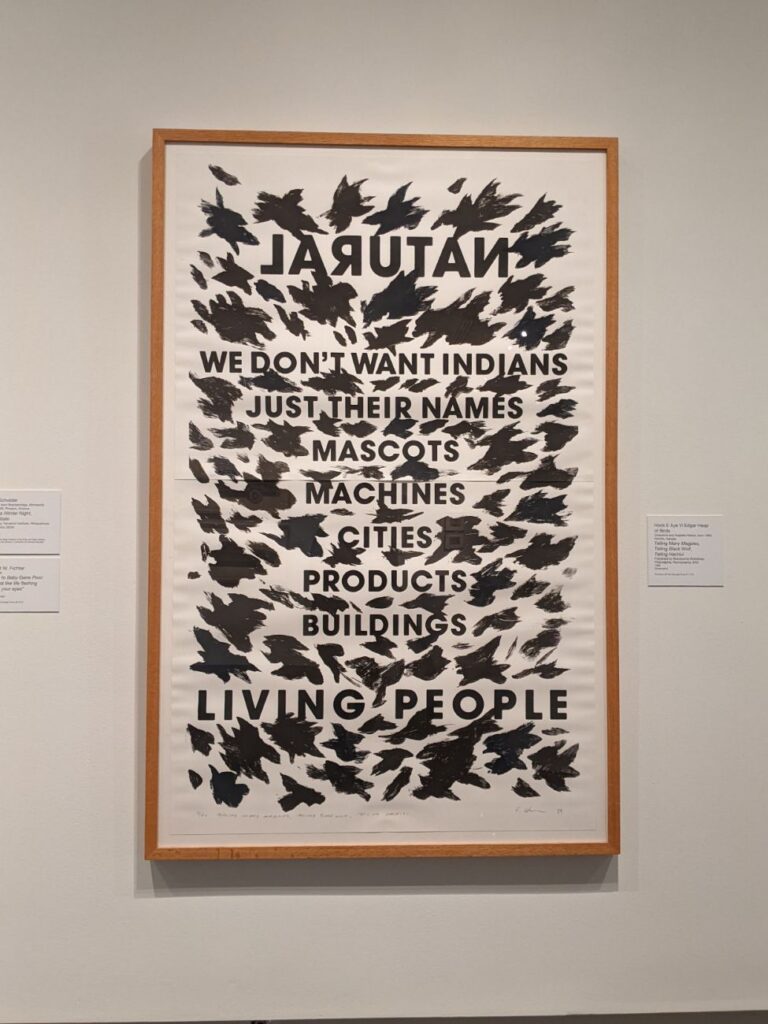
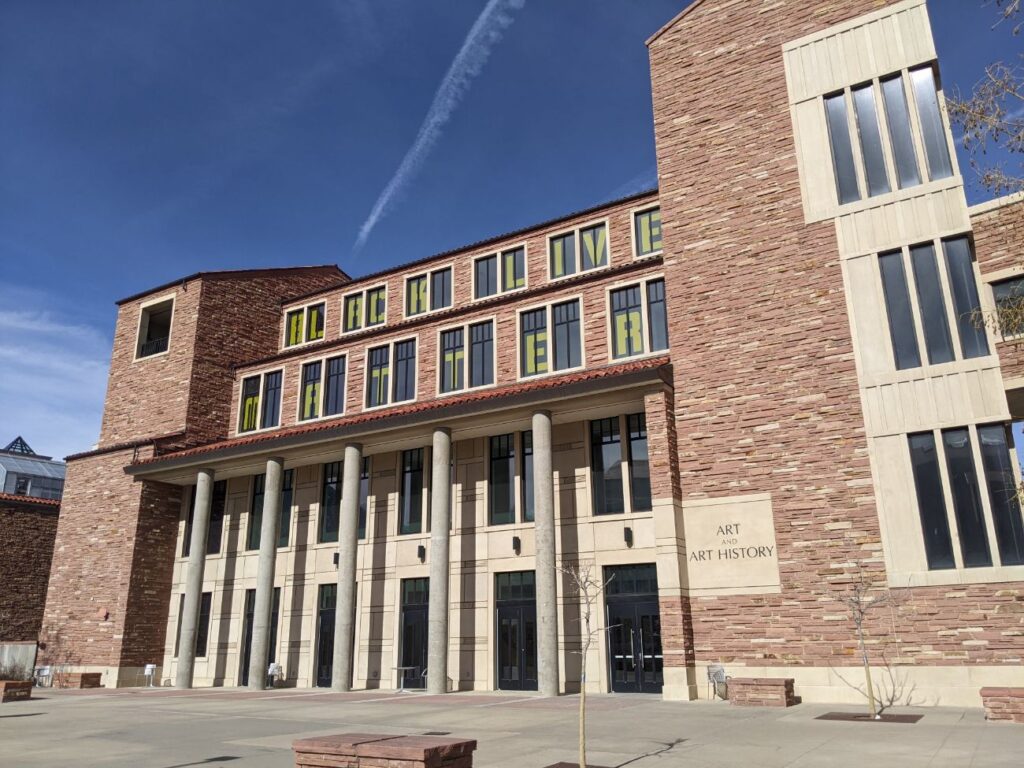
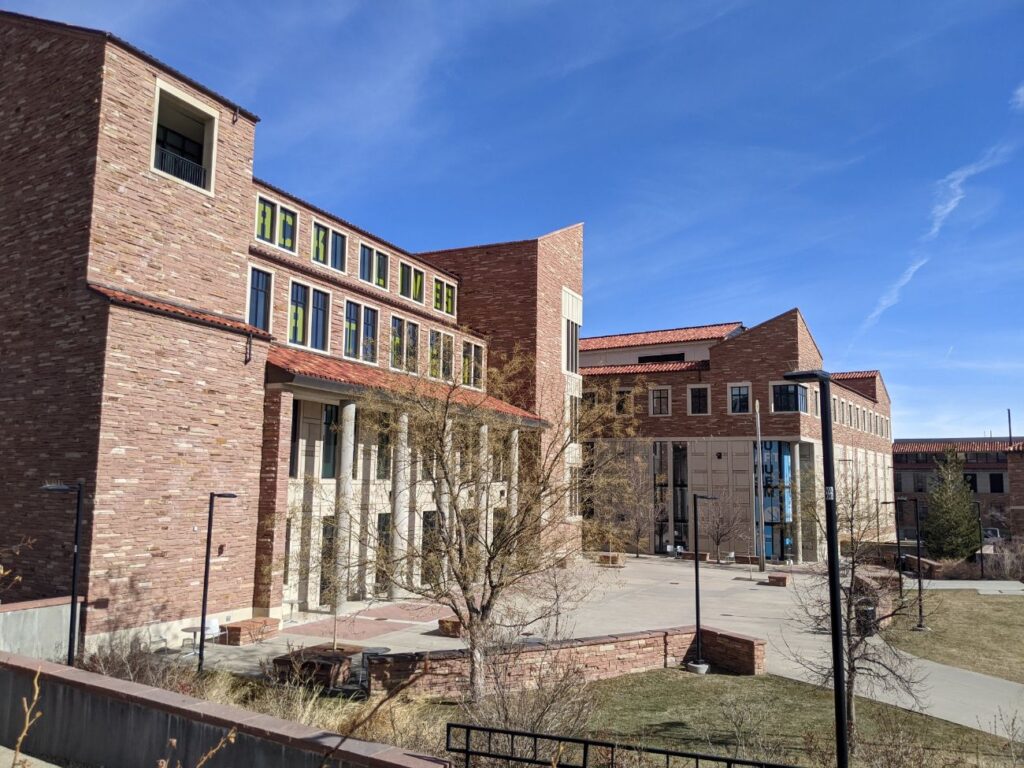
CU Museum of Natural History
About a 5-minute walk west is the Natural History Museum. This historic building houses four galleries, two on the main floor, two downstairs, and some bathrooms upstairs. The biggest draw is Paleontology Hall, with some amazing specimens. For decades, there was a huge triceratops skull on display, but that has sadly gone back to the Smithsonian. The rest of the collection is still very impressive.
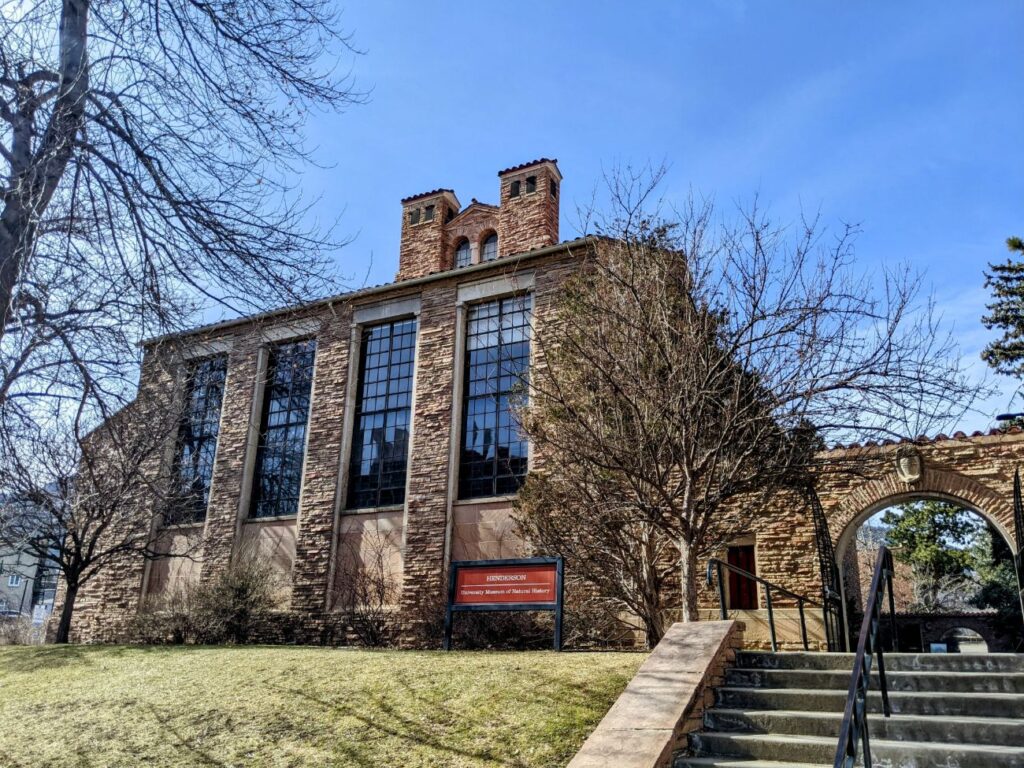
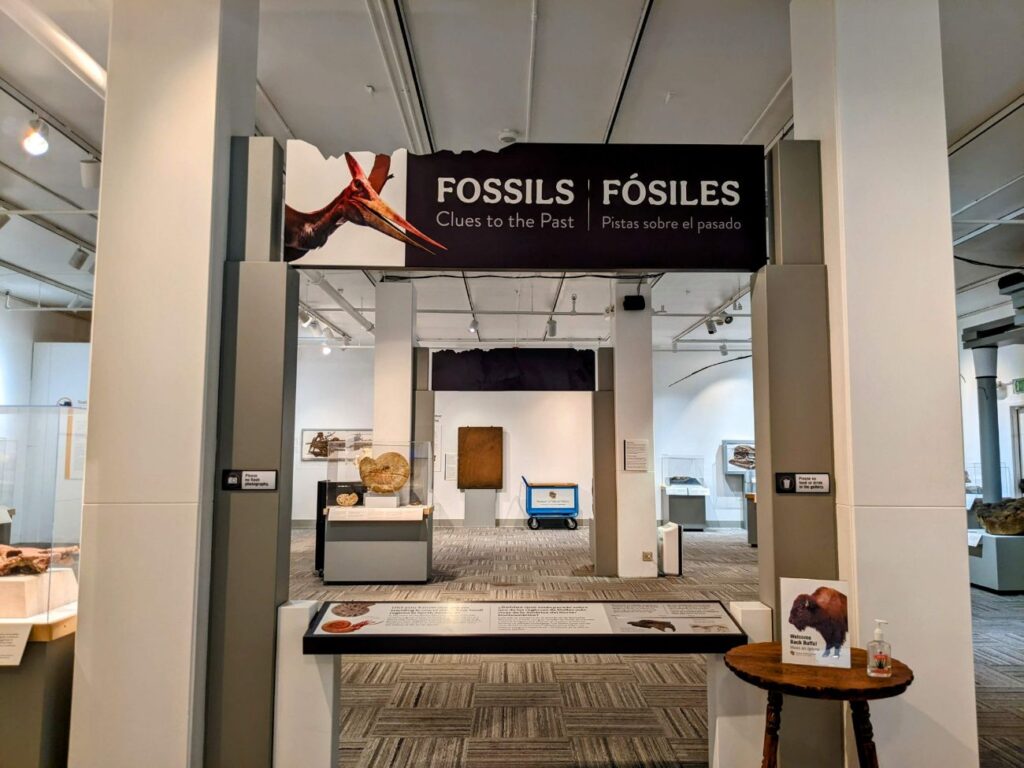
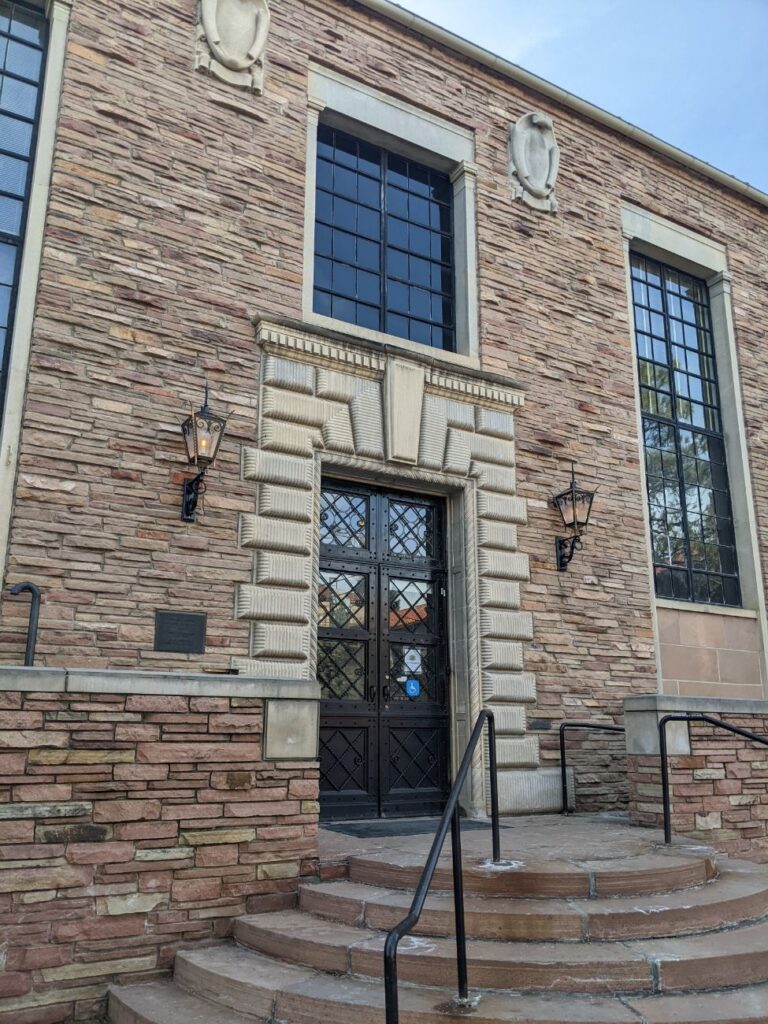
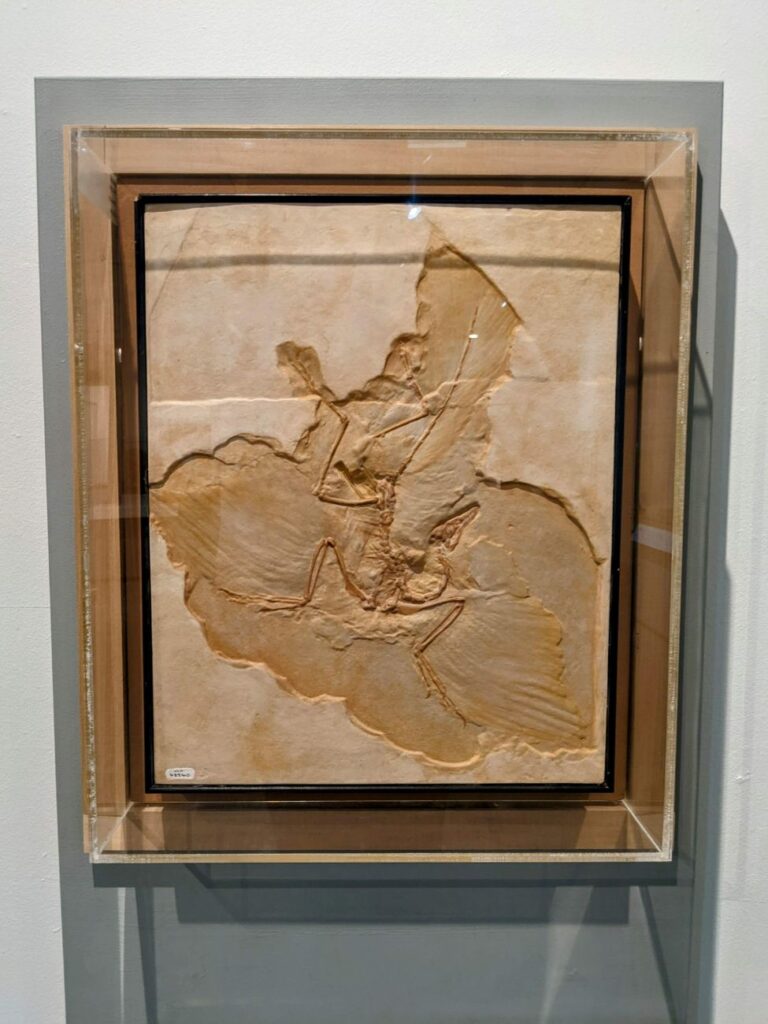
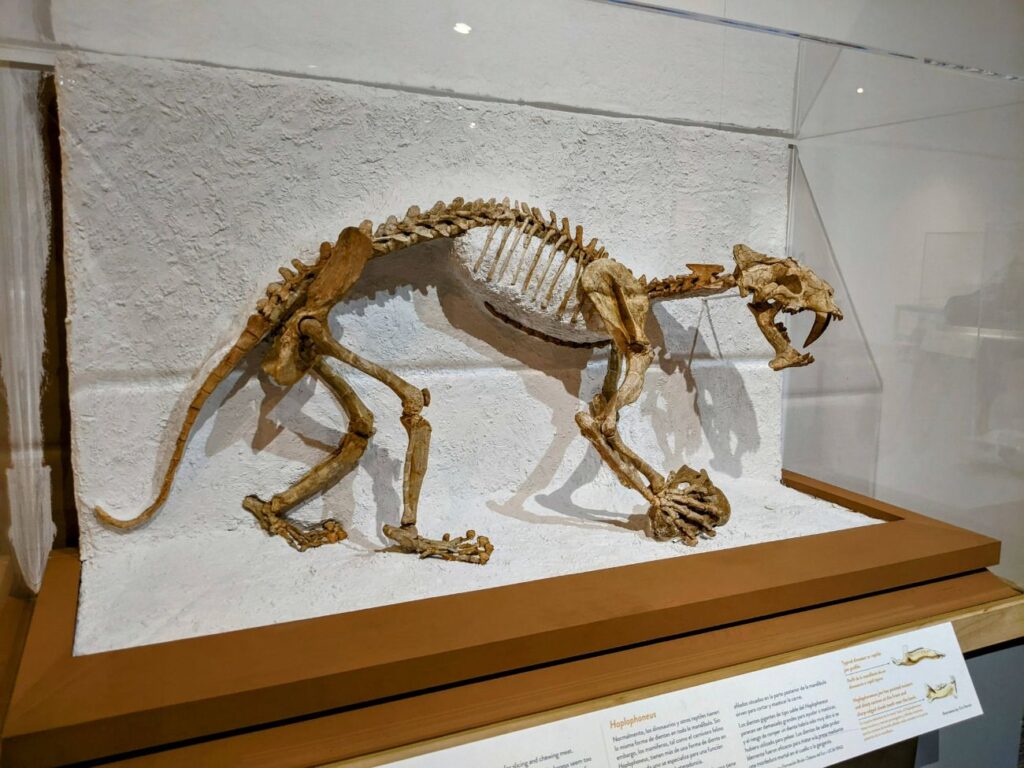
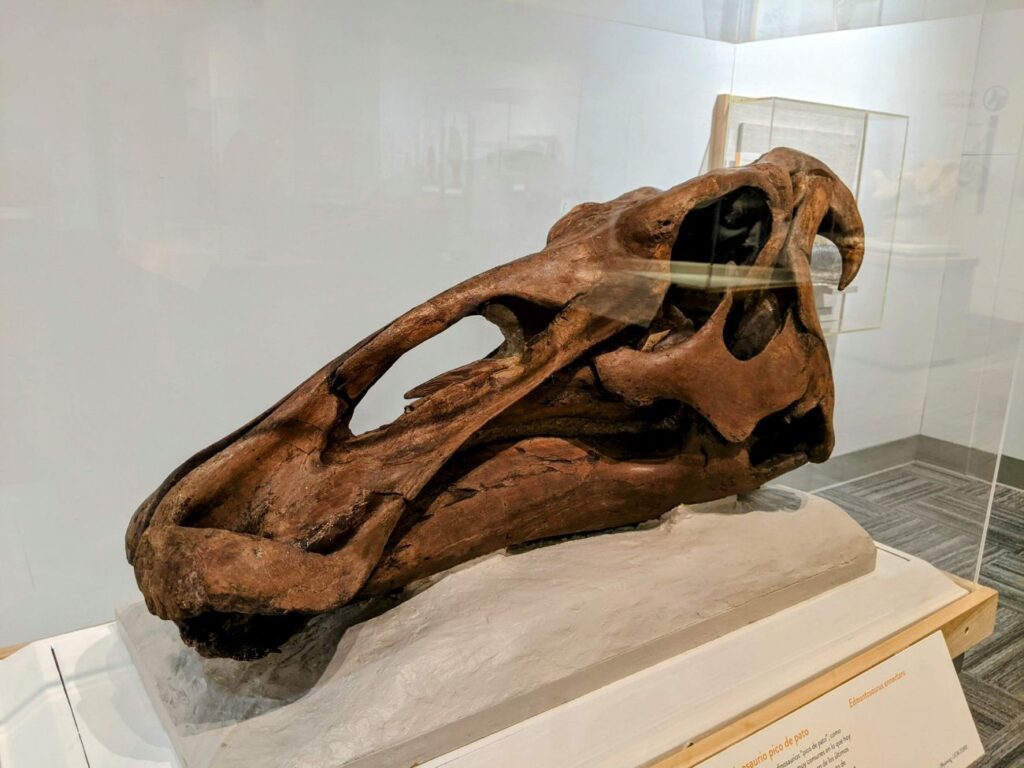

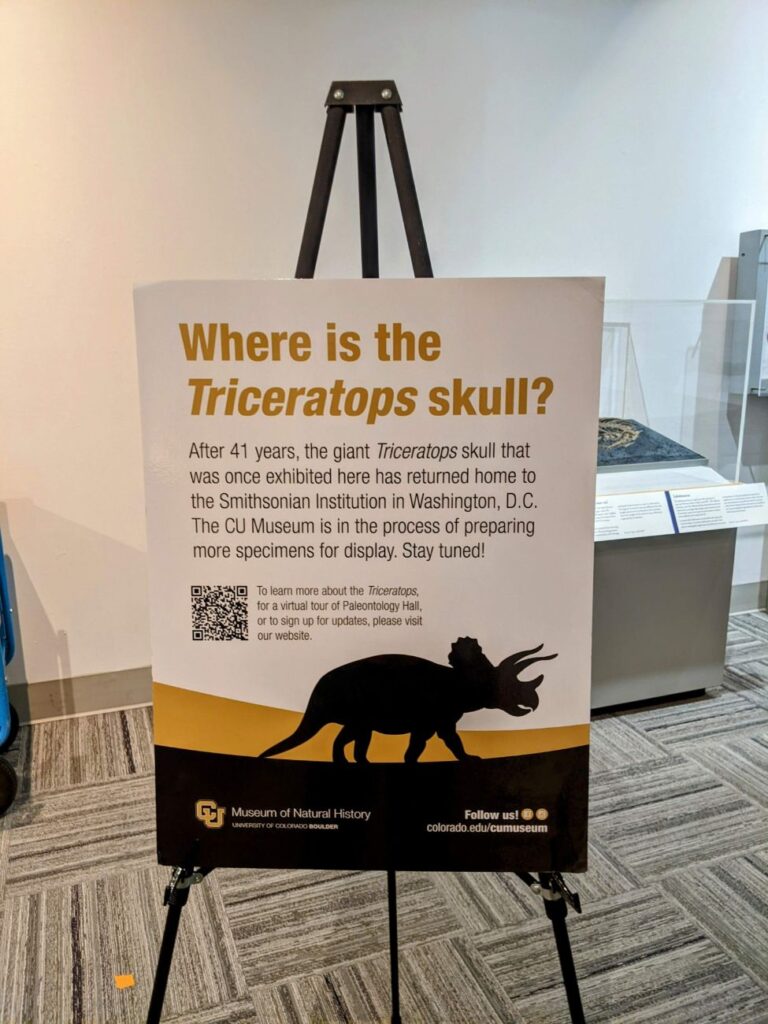
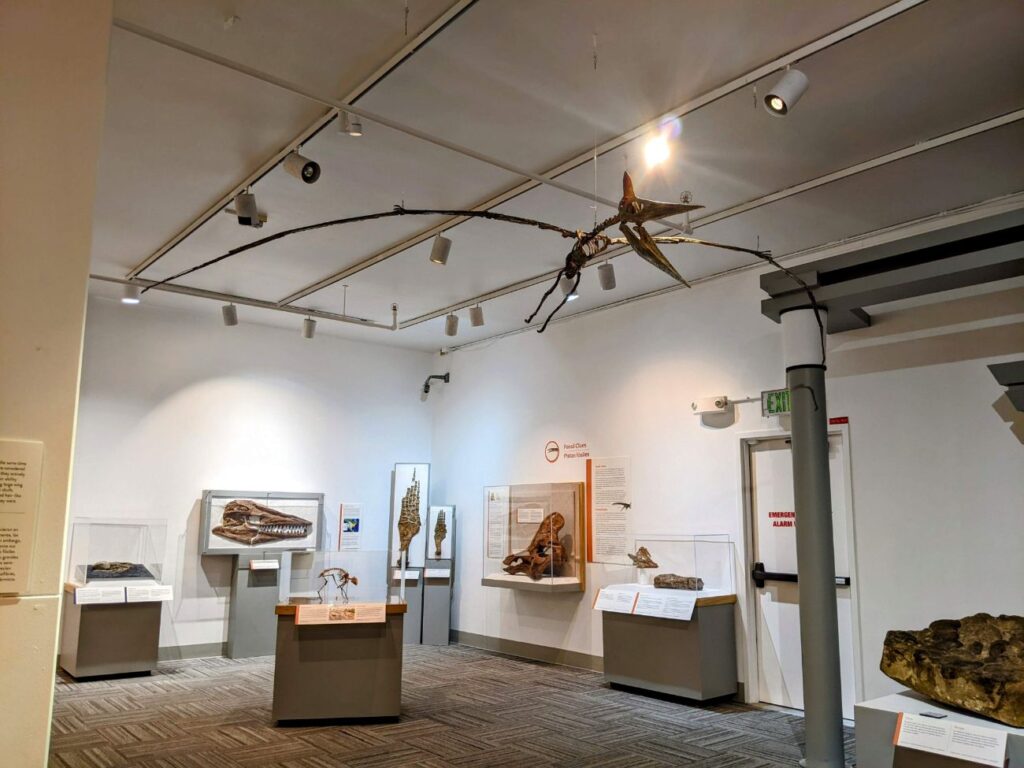
Across the hall is Treespace, part student lounge and part exhibit on the university’s efforts to replant apple trees. A fun display features pretty pottery apples and one corner is a soundscape where you can sit and feel like you’re in the forest.
Downstairs on one side is a bigger study area called Biolounge with retro diner tables and chairs, upholstered furniture, and an emphasis on Antarctica. Old-school specimens are found in cabinets, and a stunning gallery of the Antarctic Ross Sea by photographer John Weller lines one wall.
The last gallery is more archeology and anthropology related. An impressive collection of early hand tools called the Mahaffy Cache was found very close to the school. There’s also a Native American saddle and pottery here, which looks cool. Some of this section seems to be under construction.
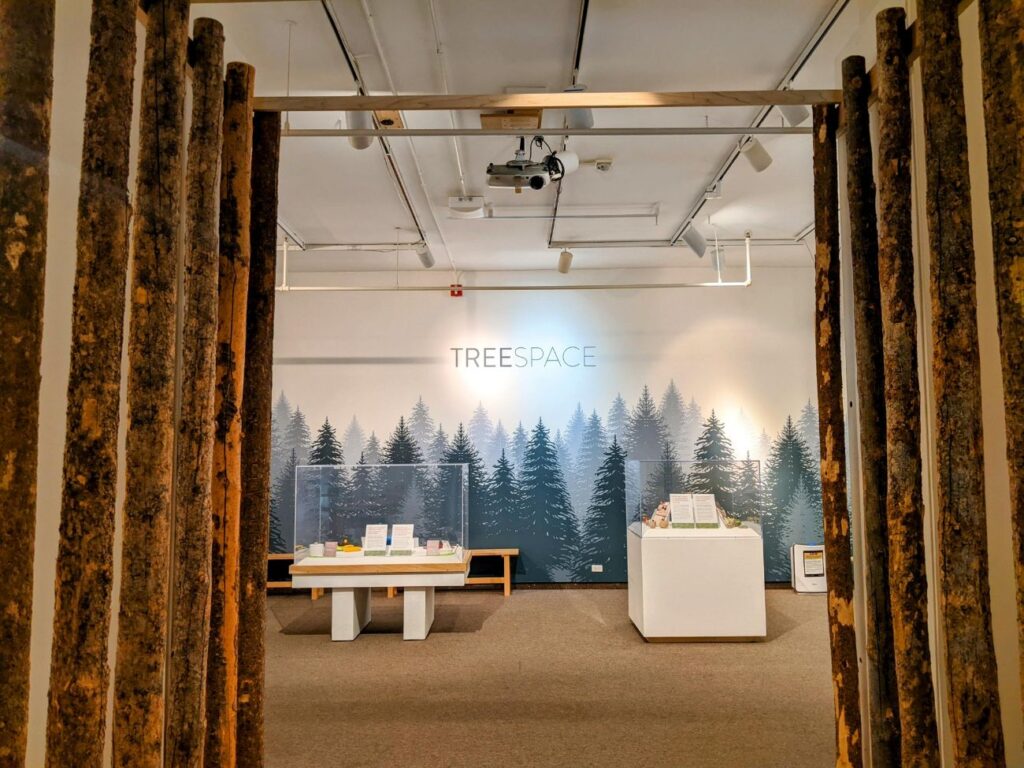
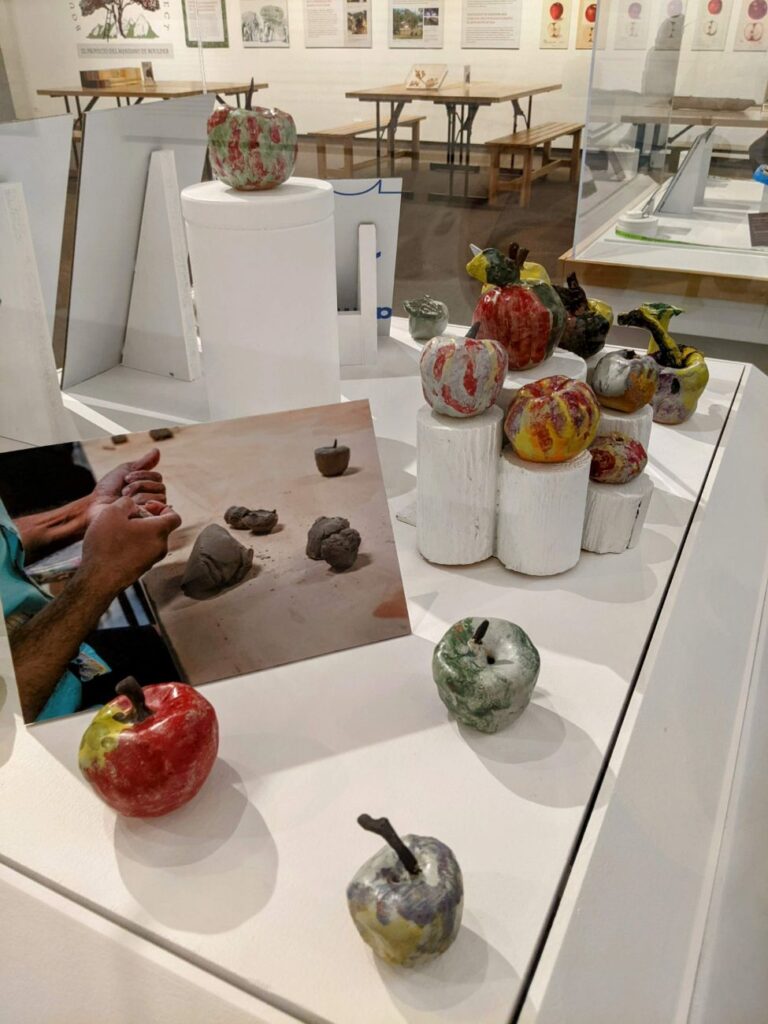
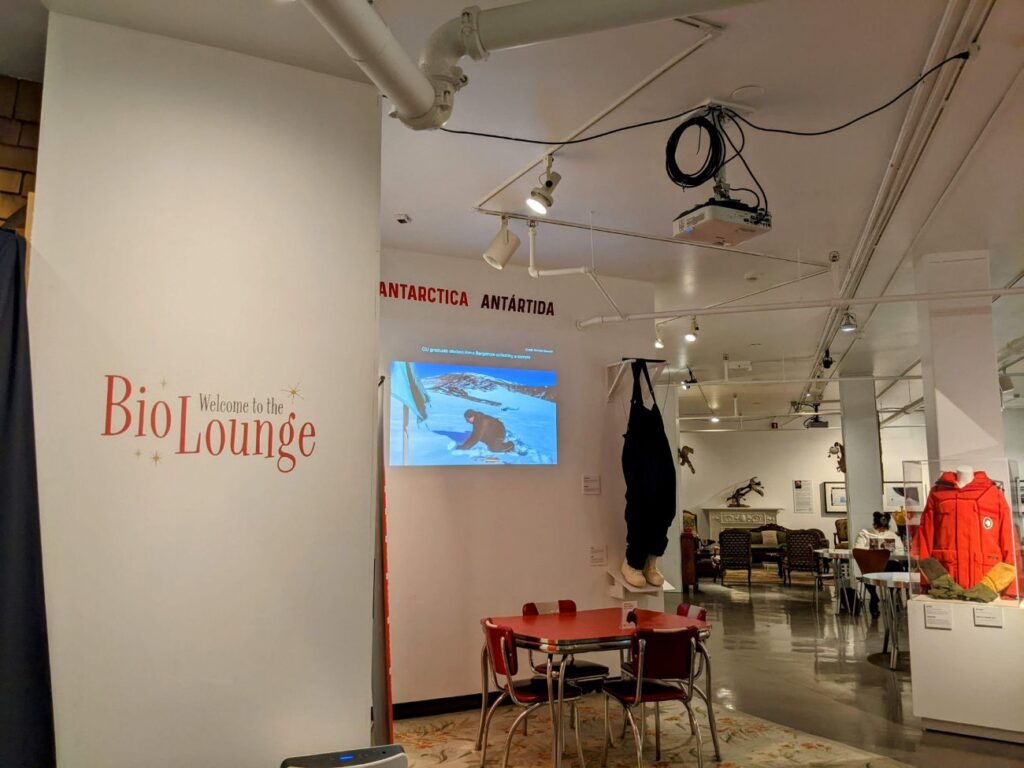
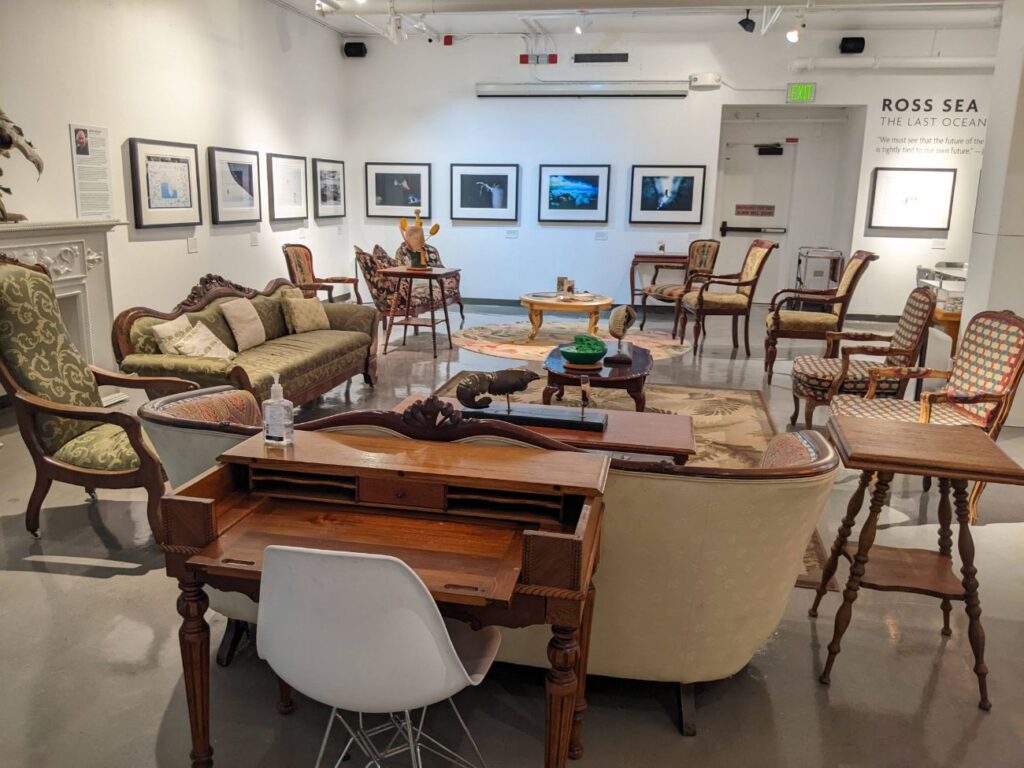
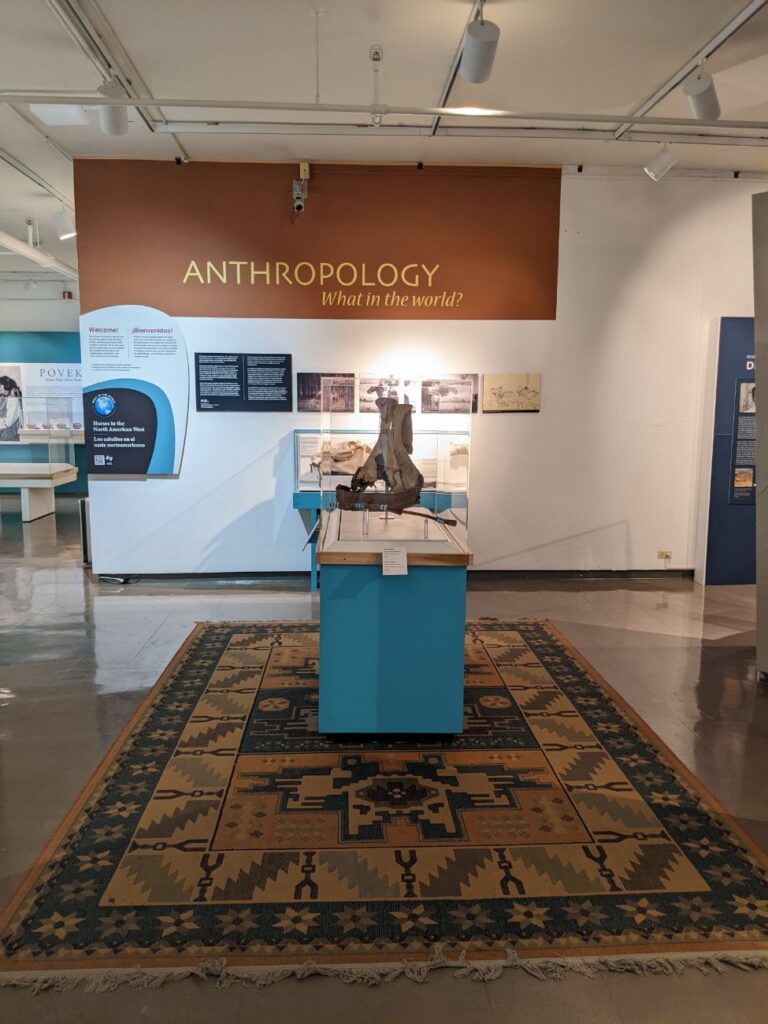
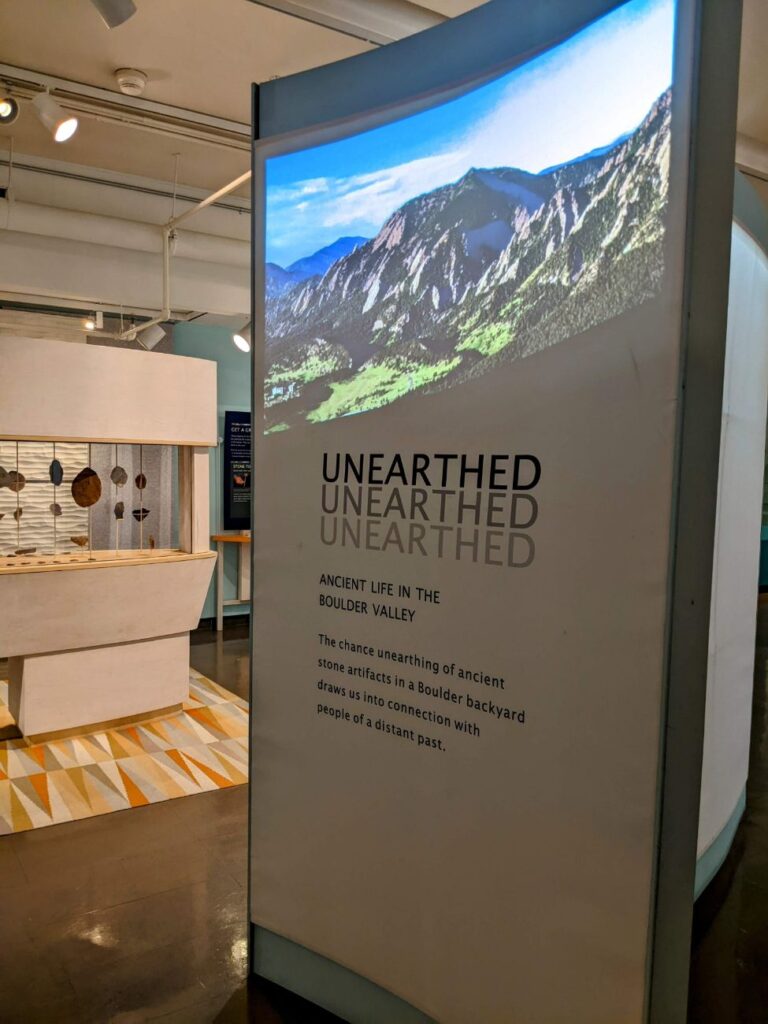
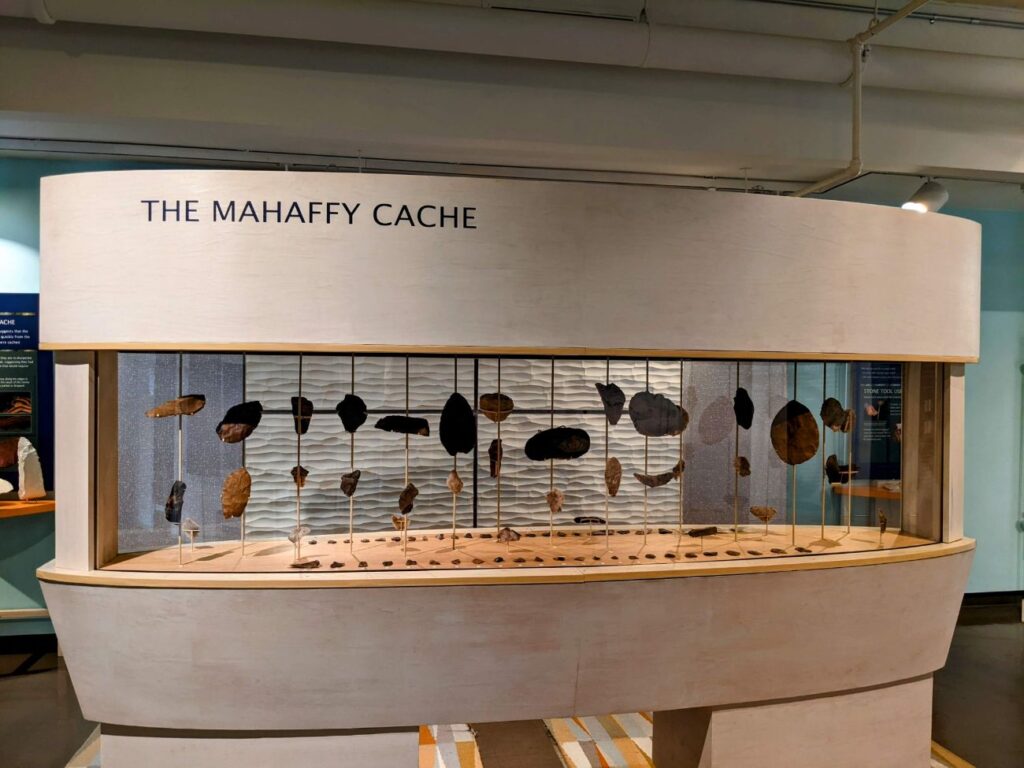
The University of Colorado Boulder Museum of Natural History is open 9-5 Monday-Saturday and 10-4 on Sunday. Don’t miss the Art-o-mat in the entrance!
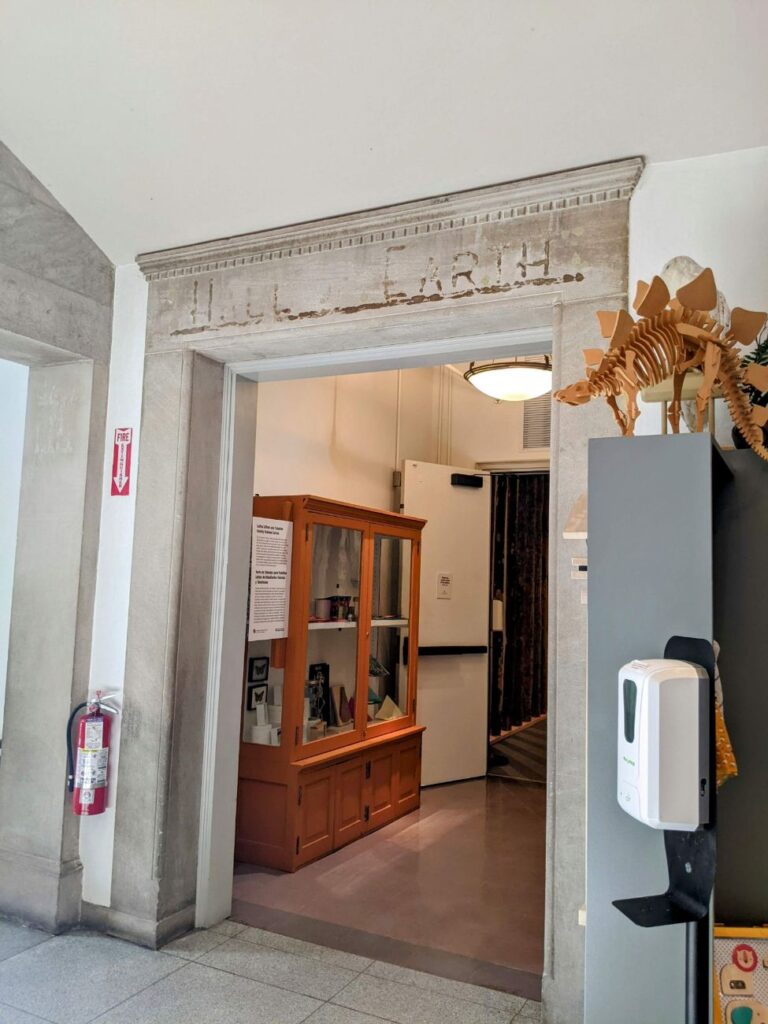
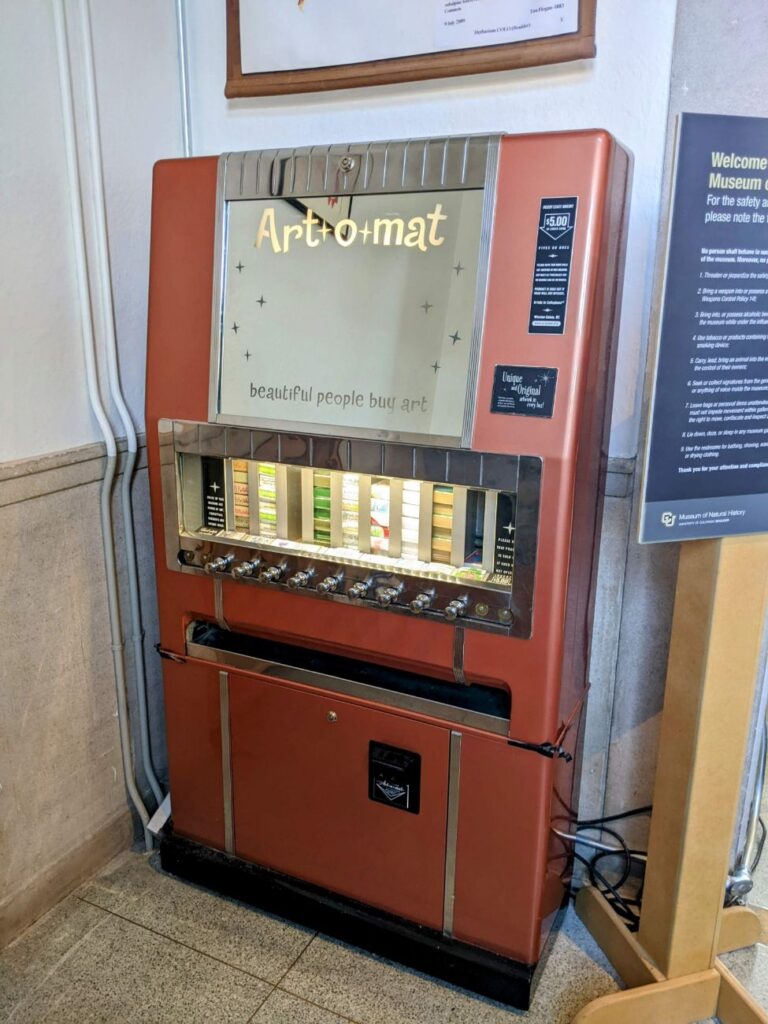
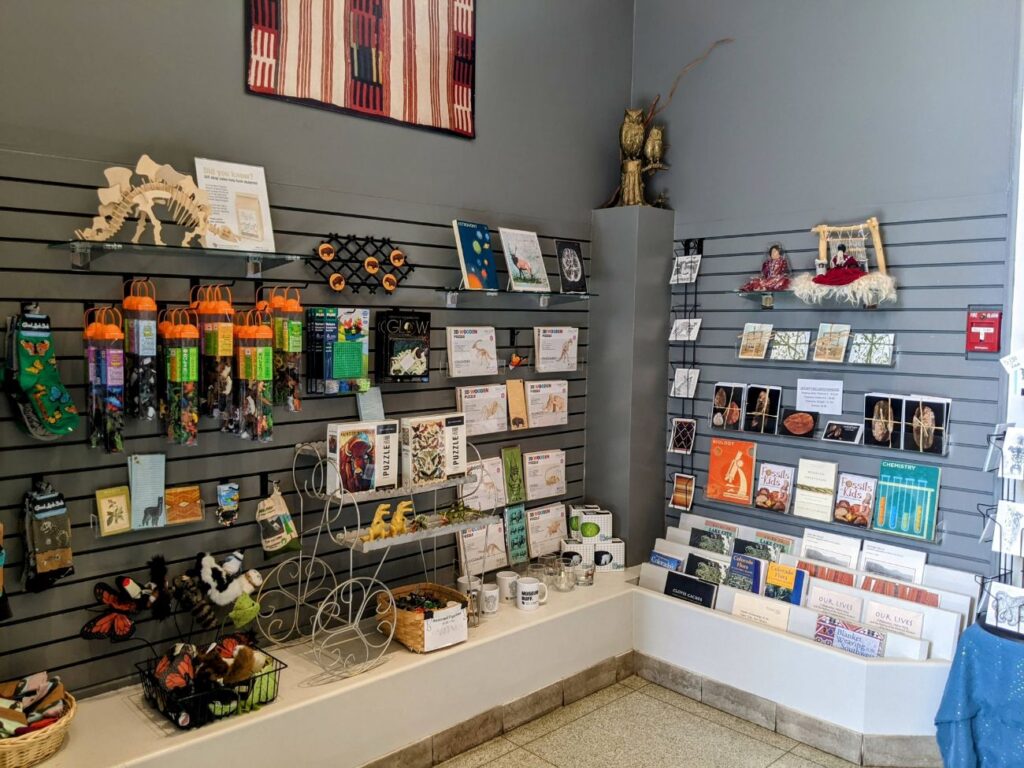
Heritage Center
Another 5-minute walk north and you’ll reach Old Main, the University’s oldest building, from 1876. Housed on the third floor is the Heritage Center, a campus and local history museum. Inside are sign boards about building the university, its buffalo mascot Ralphie and other school traditions, and notable CU alumni. Included is a hallway featuring Glenn Miller and a room featuring all CU alumni in the space program. One room speaks to the Japanese internment program carried out in Colorado.
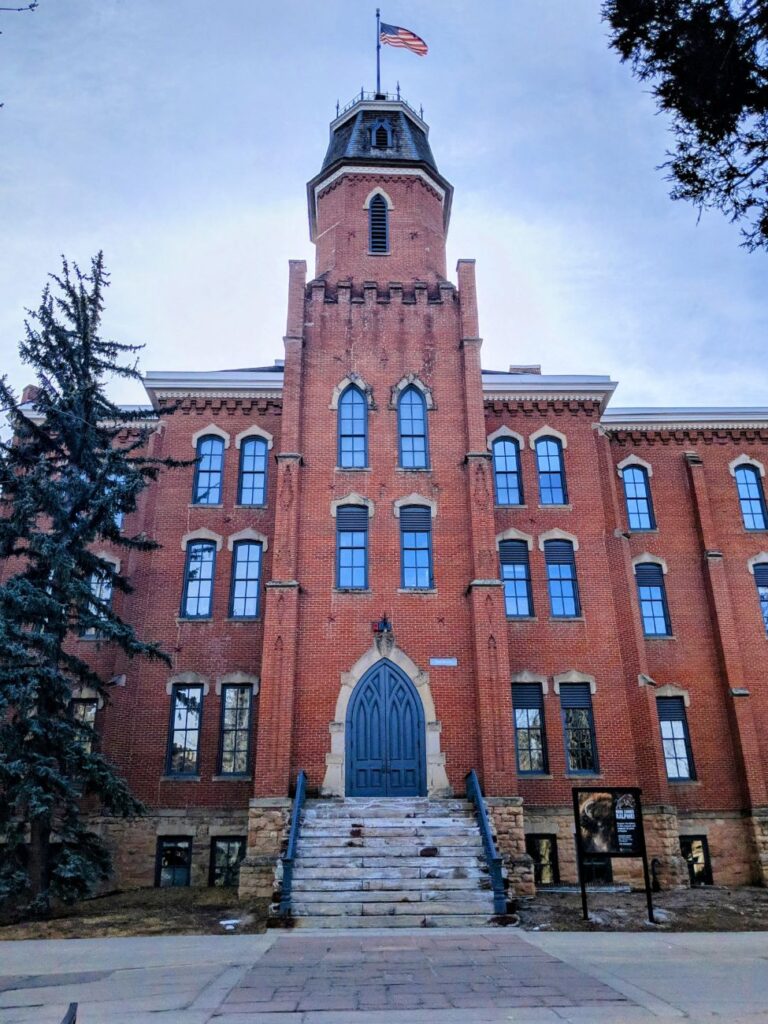
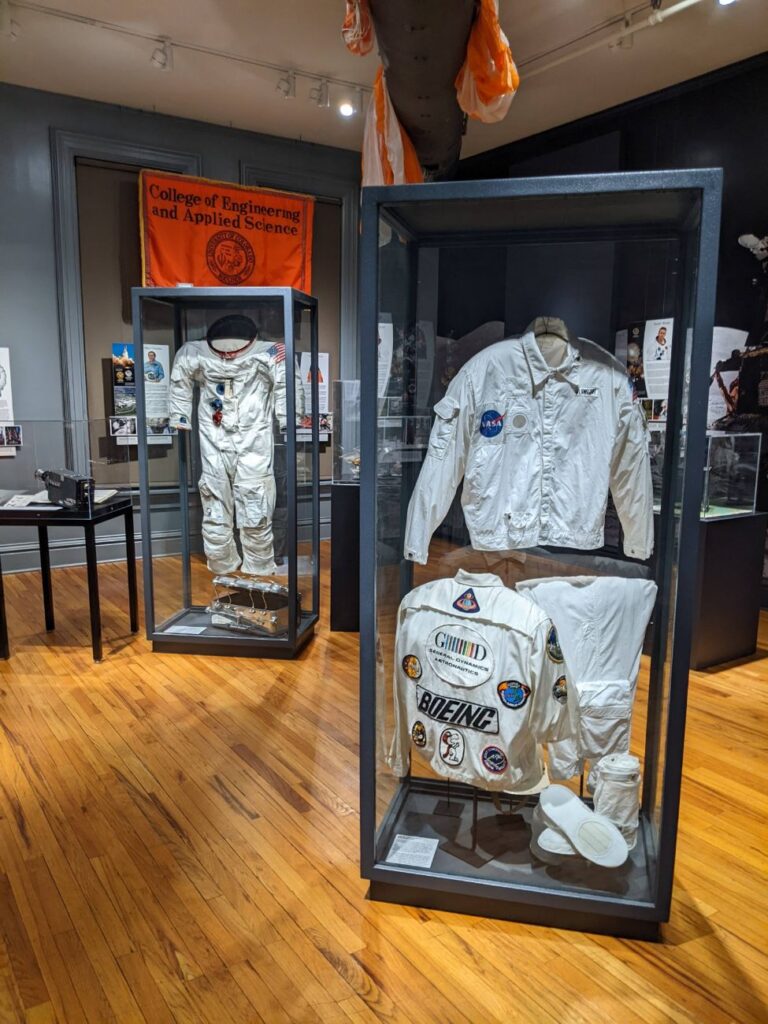
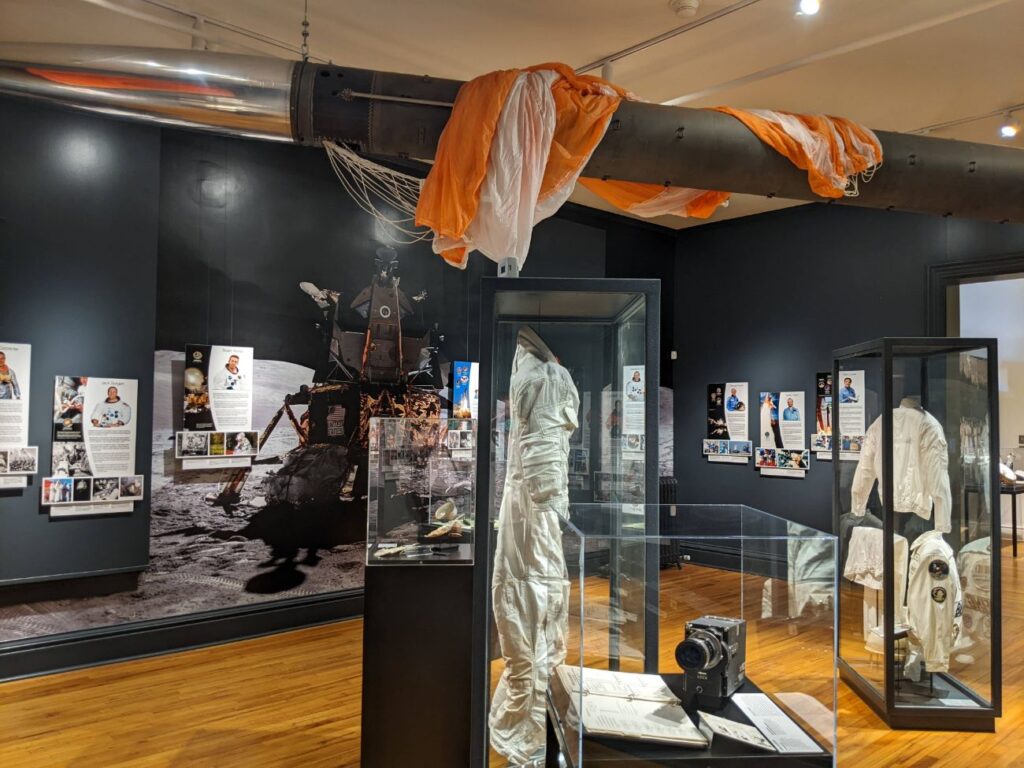
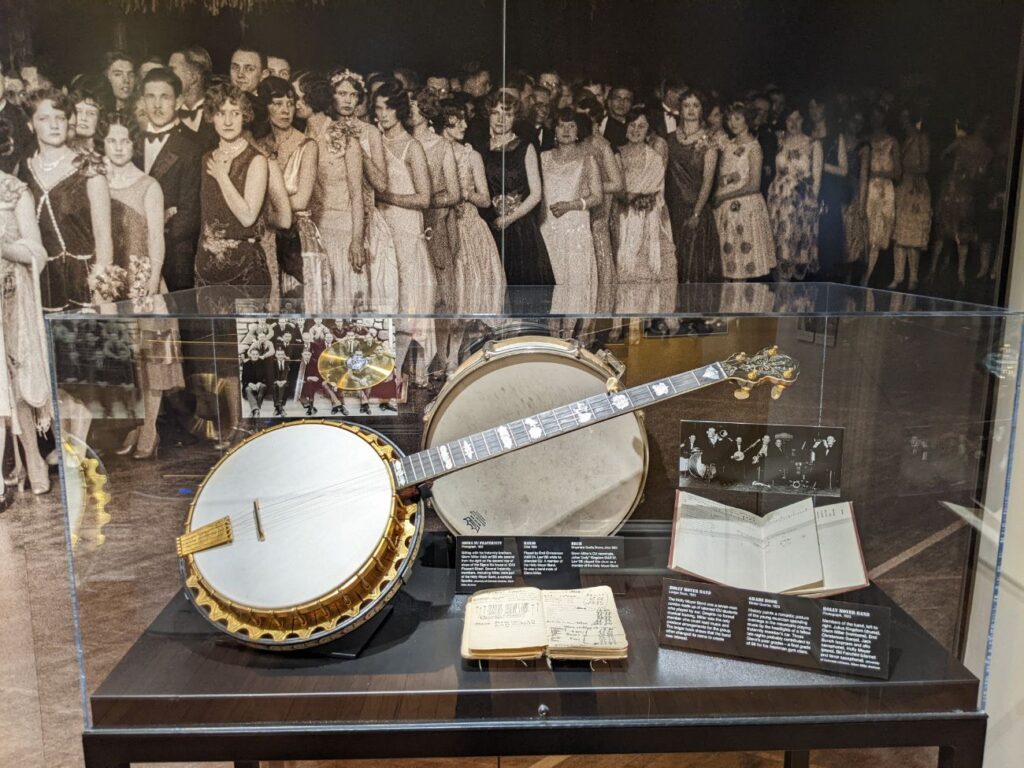
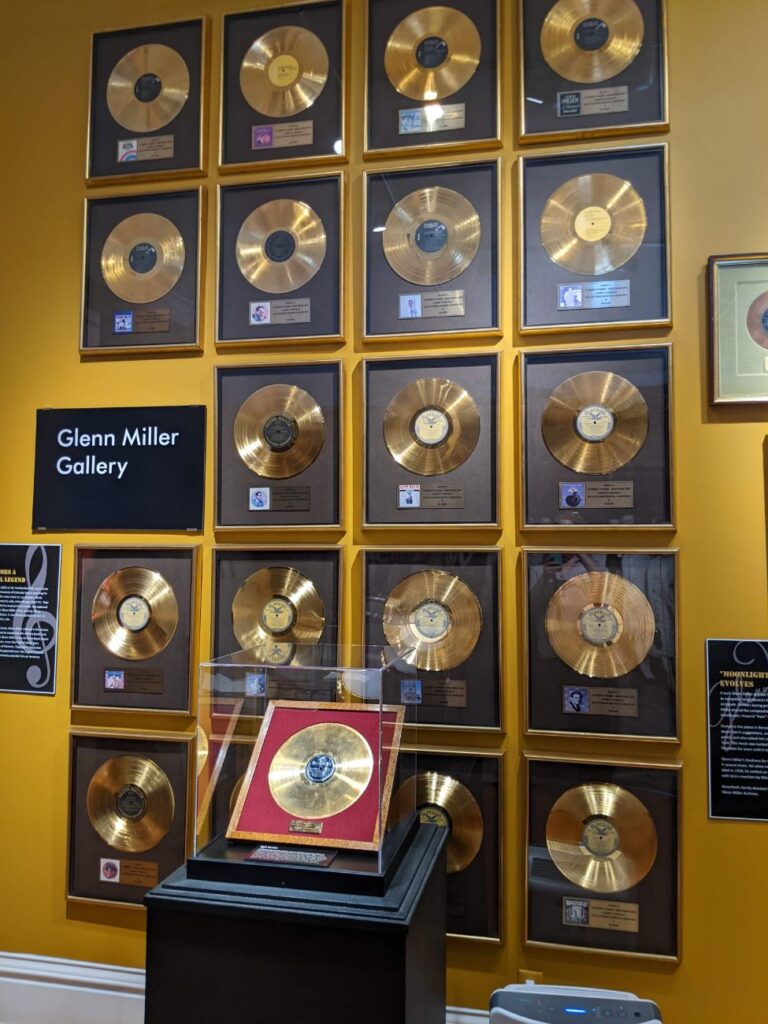
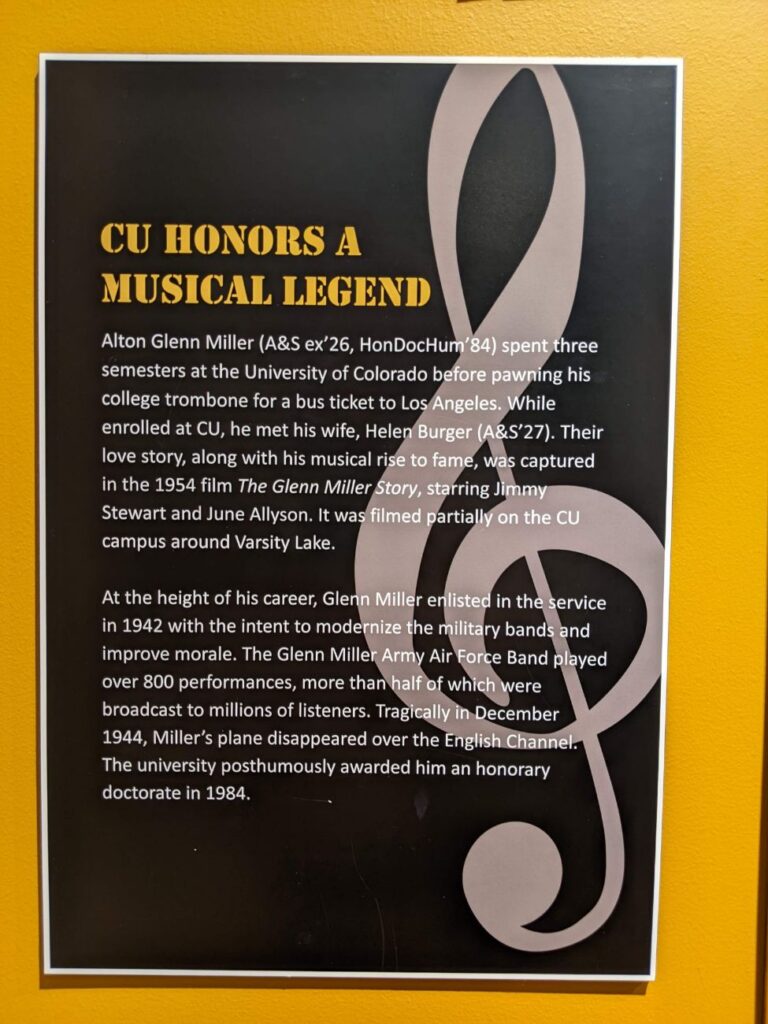
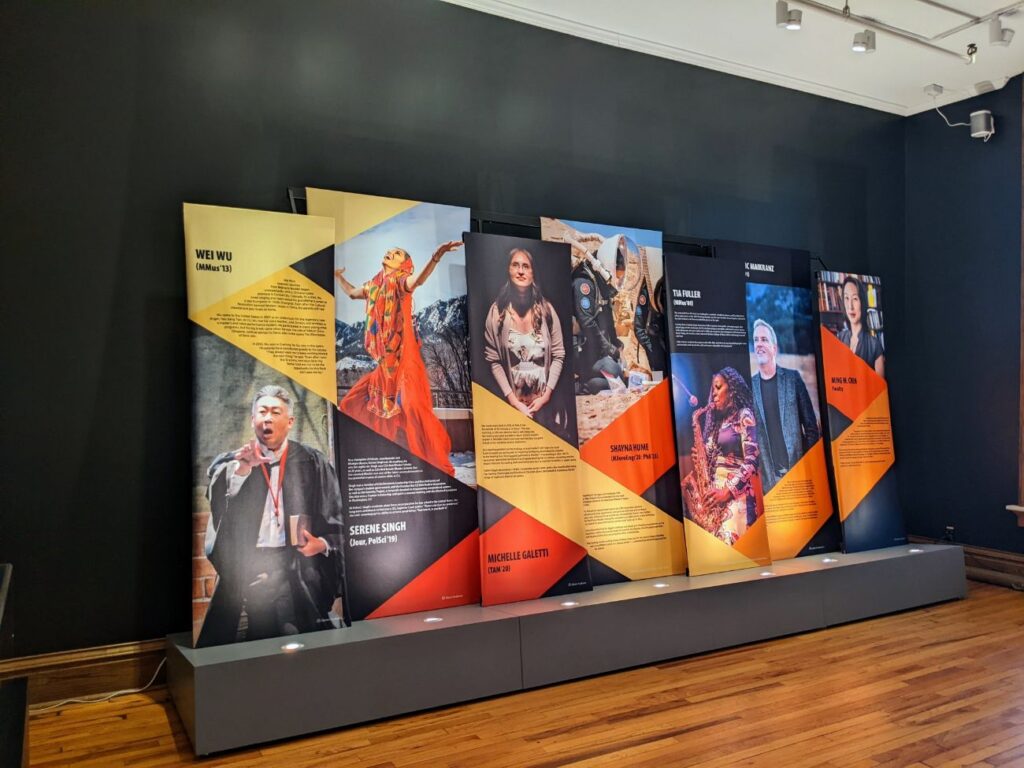
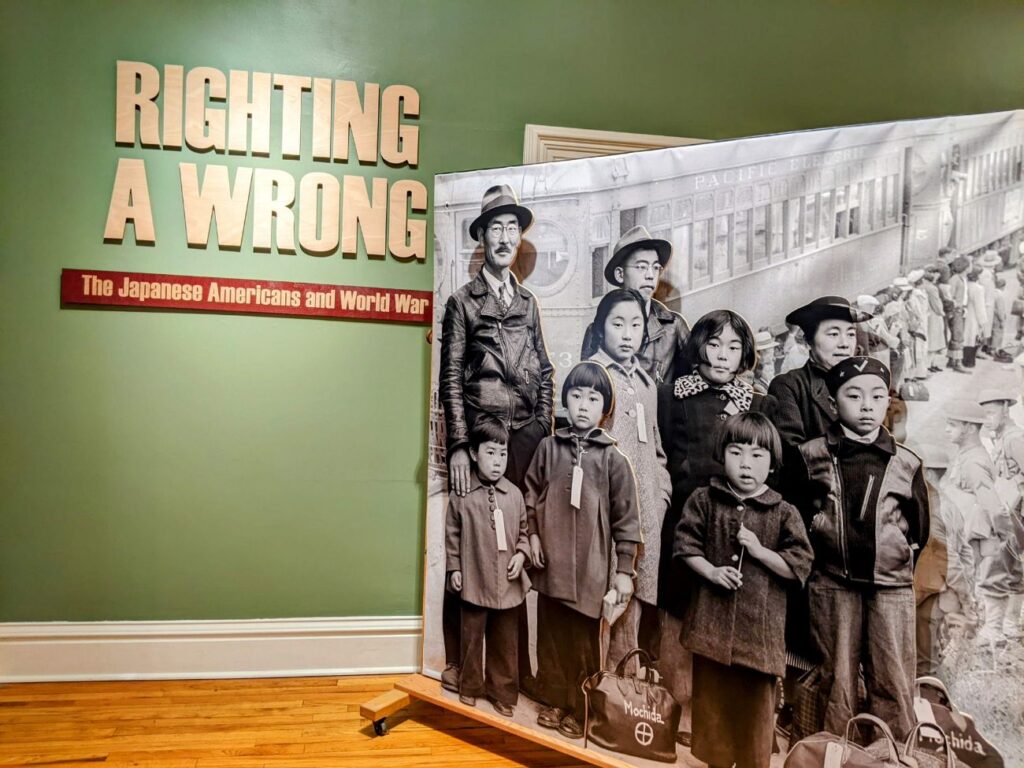
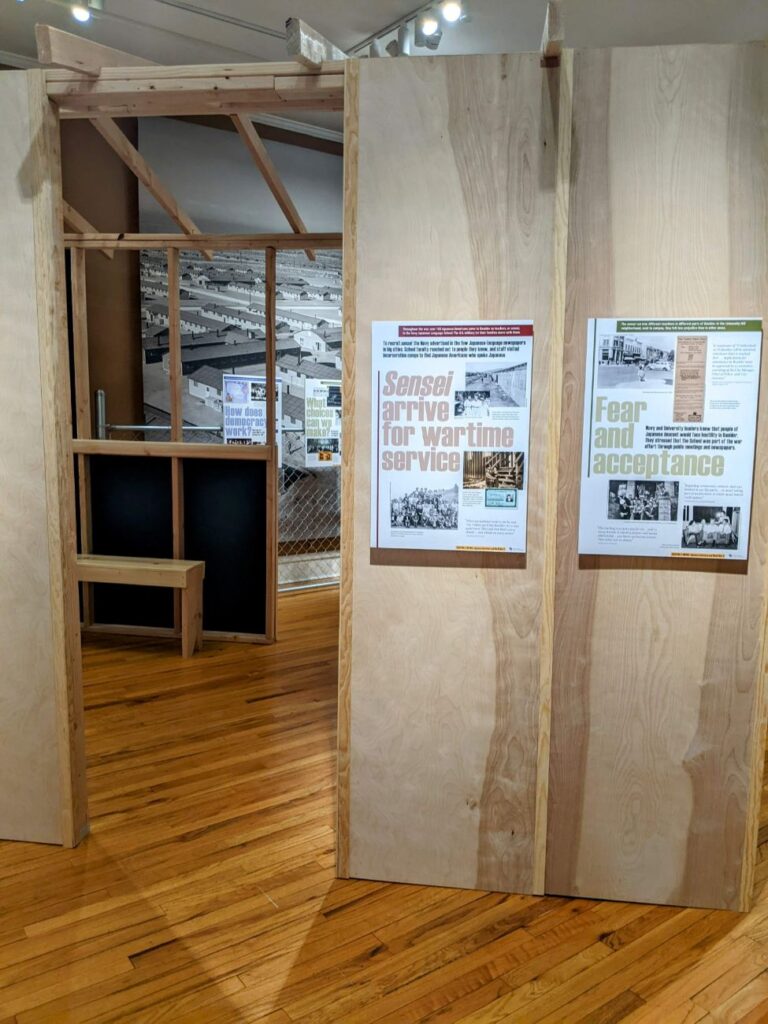
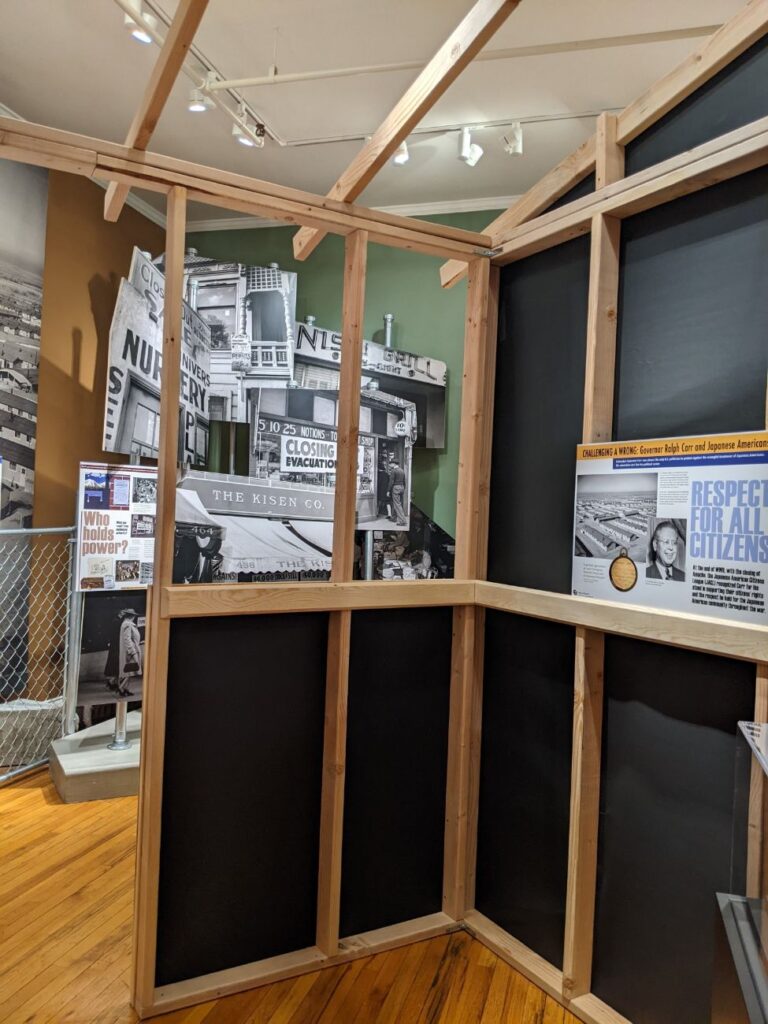
But by far, the biggest attraction at the Heritage Center is a large room containing a LEGO recreation of the entire CU campus. I doubt it’s actually to scale, but you can see all the historic and notable buildings, the huge football stadium, and a ton of hilarious little jokes and easter eggs. For instance, there’s a lot of little disasters happening, like a shark in the pond, an archeological dig gone wrong, a lab accident, and more. If you really want to examine it, pick up a checklist for some of the more obscure items, like finding Gandalf in a sea of students.
Visiting the Heritage Center is free for everyone. It’s open from 10-4 Monday-Saturday. I visited on a Saturday, and about every 10 minutes, a new group of prospective students and their parents mobbed the place, so keep that in mind.
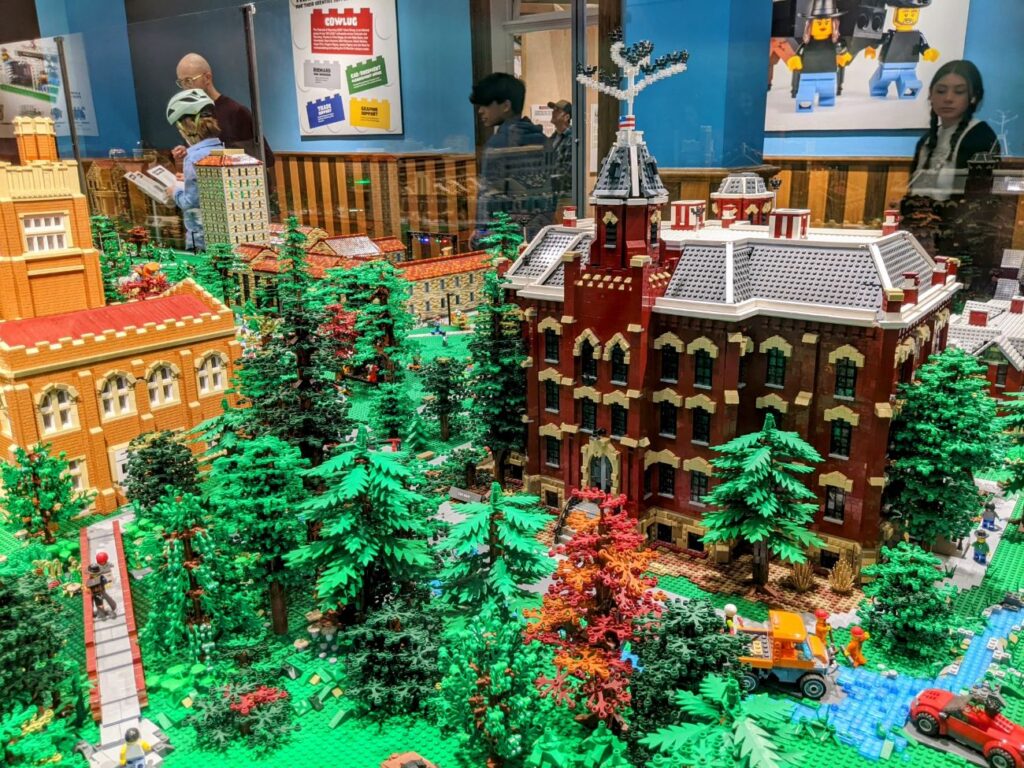
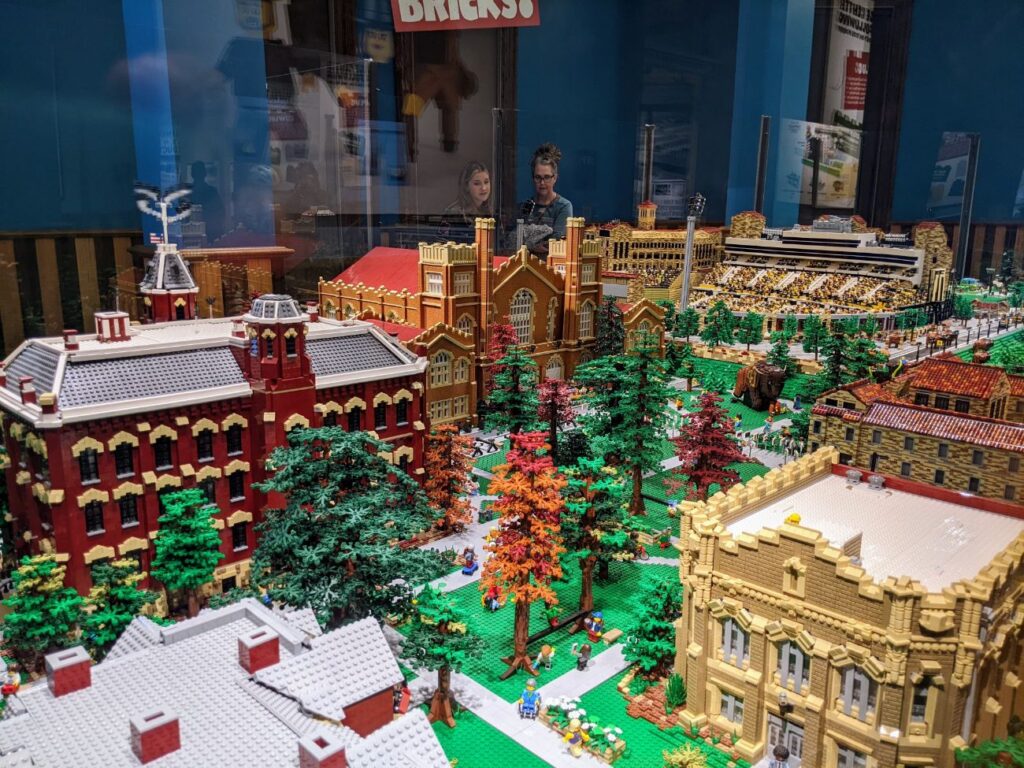
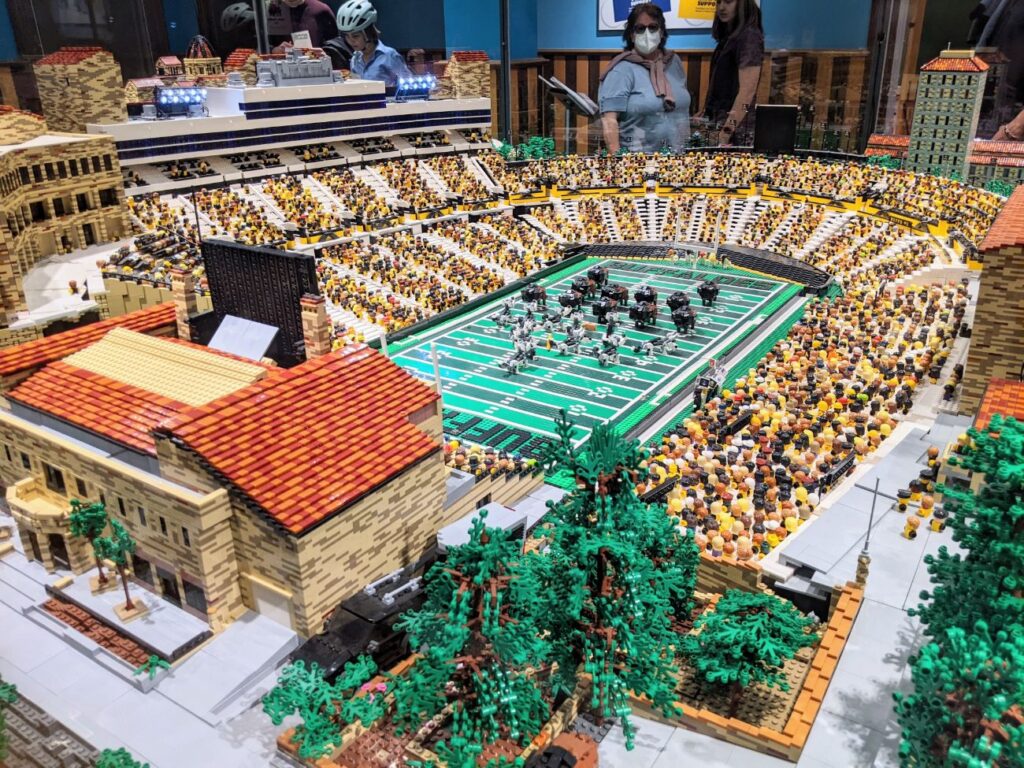
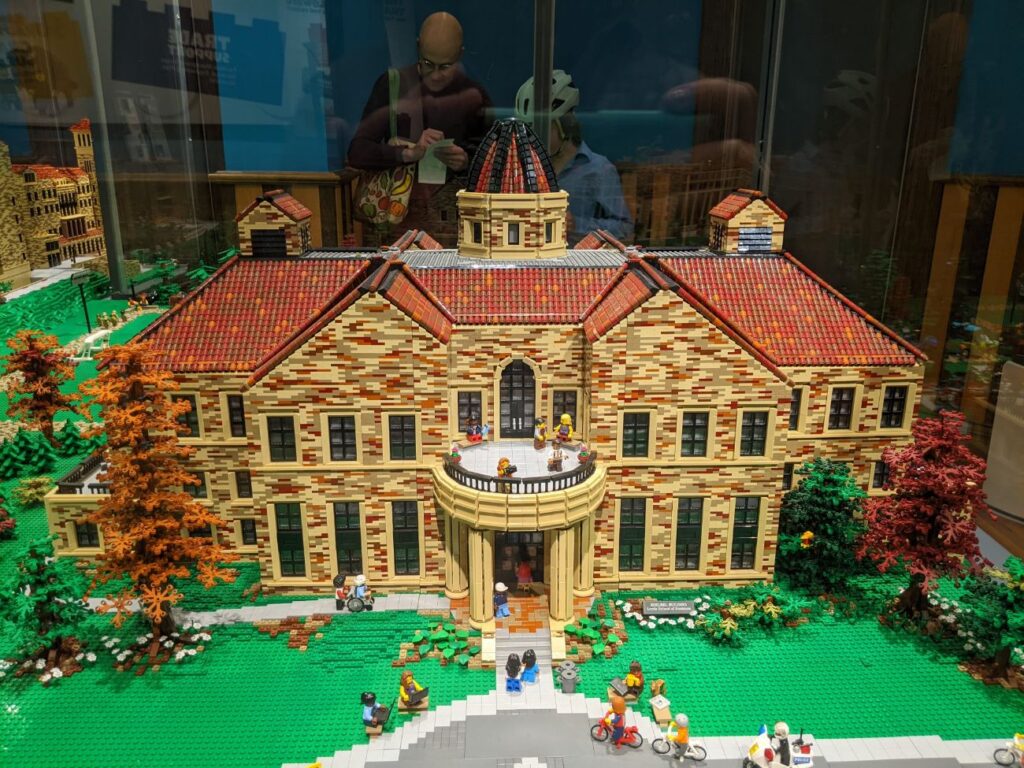
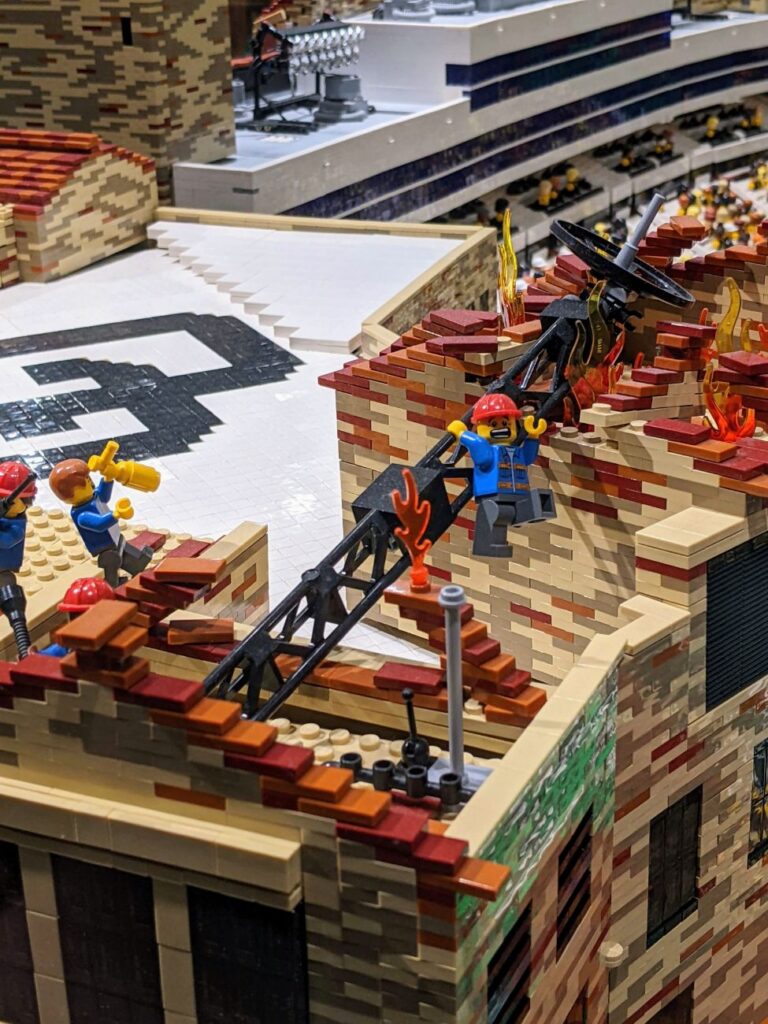
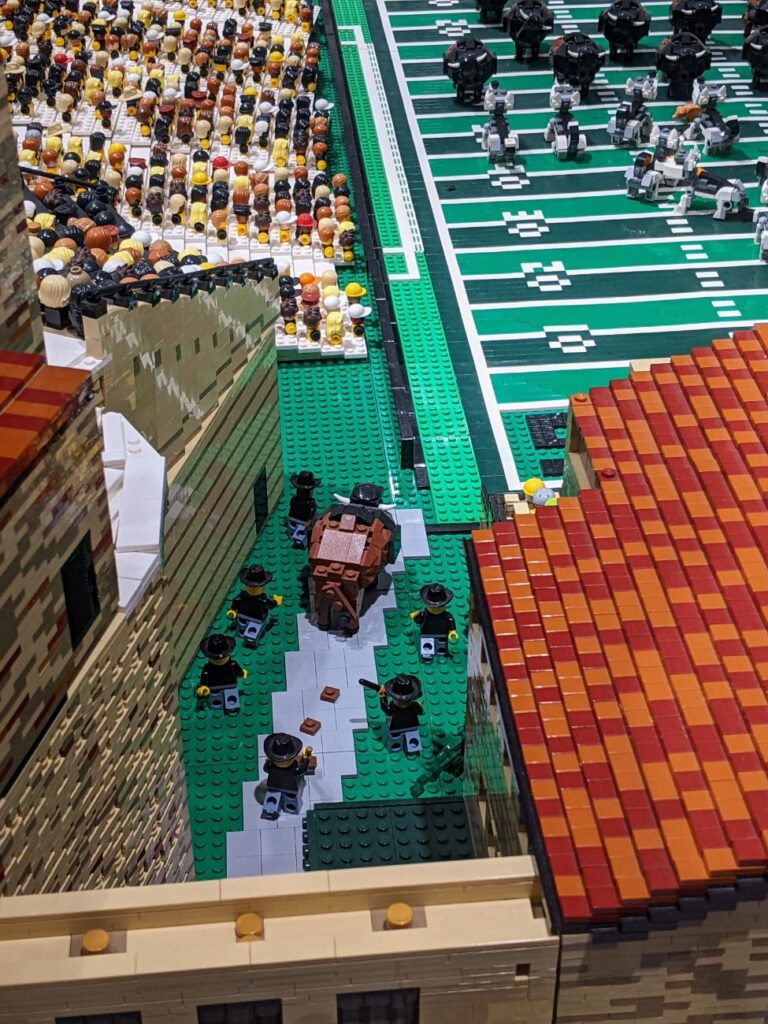

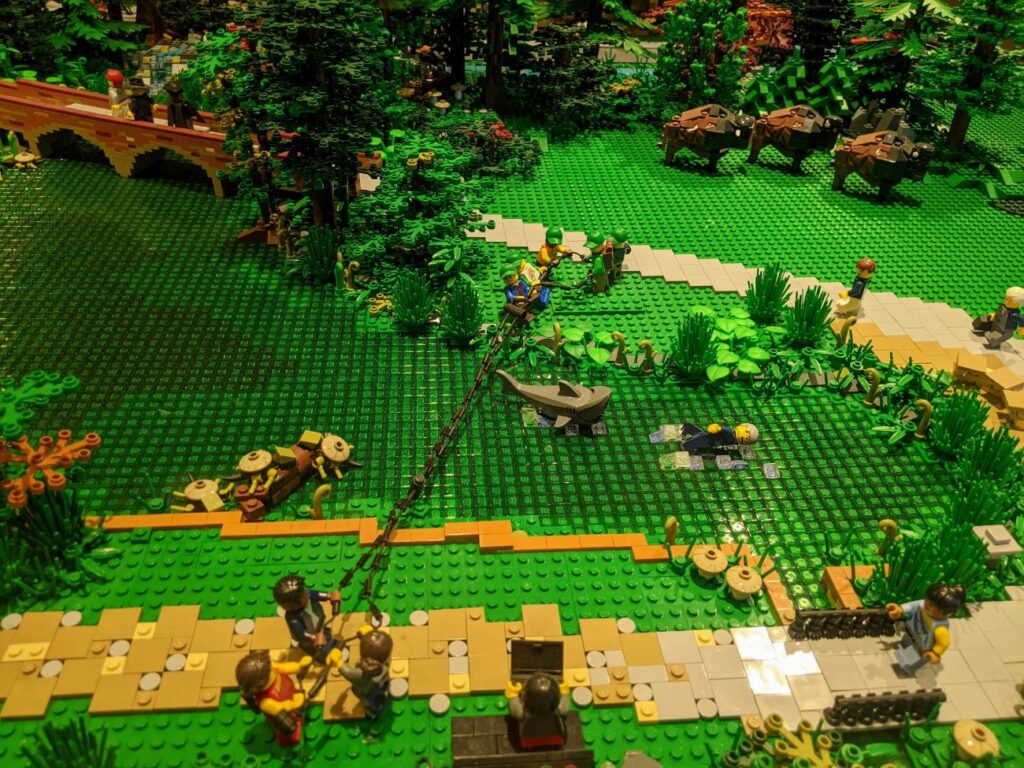
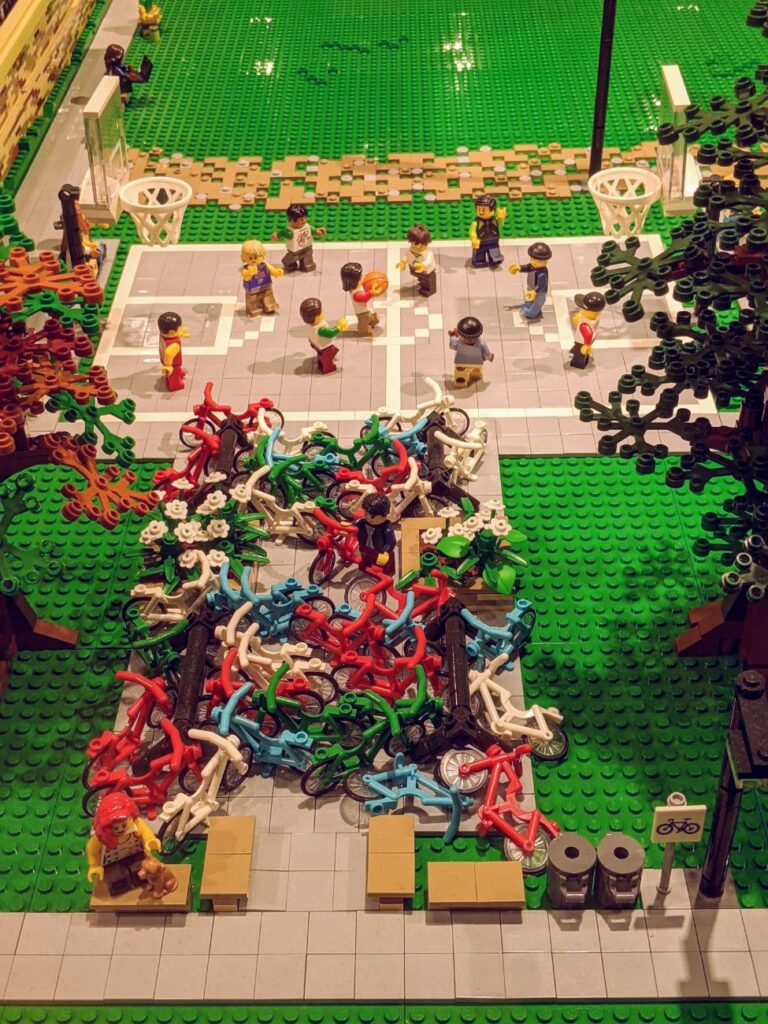
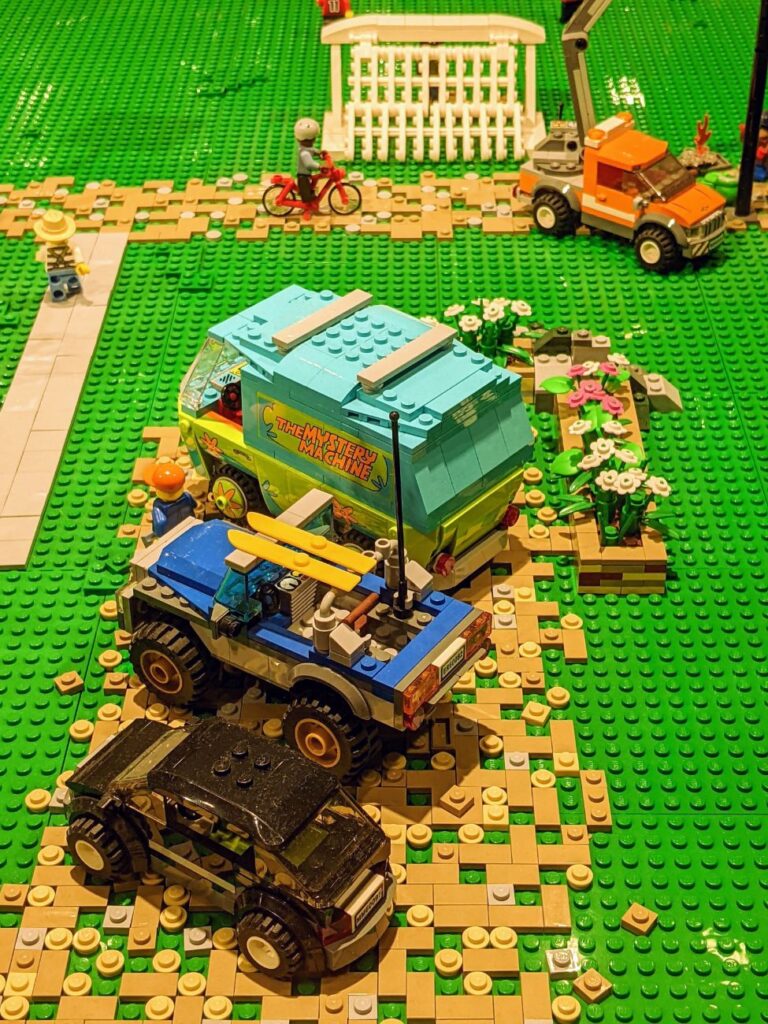
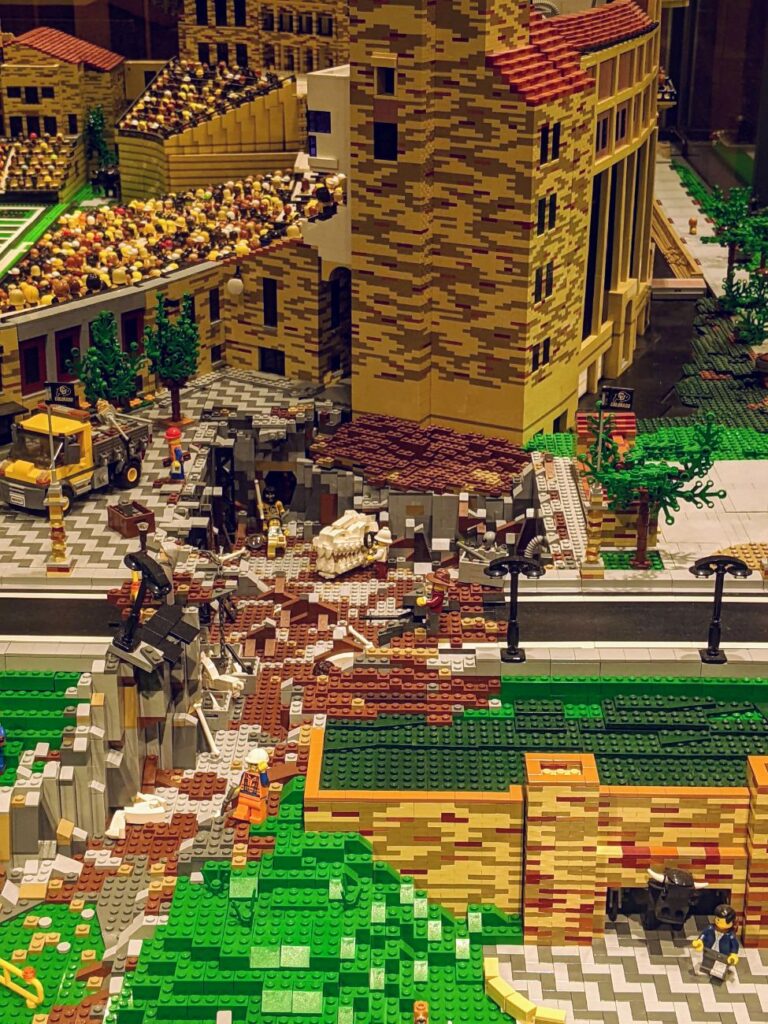
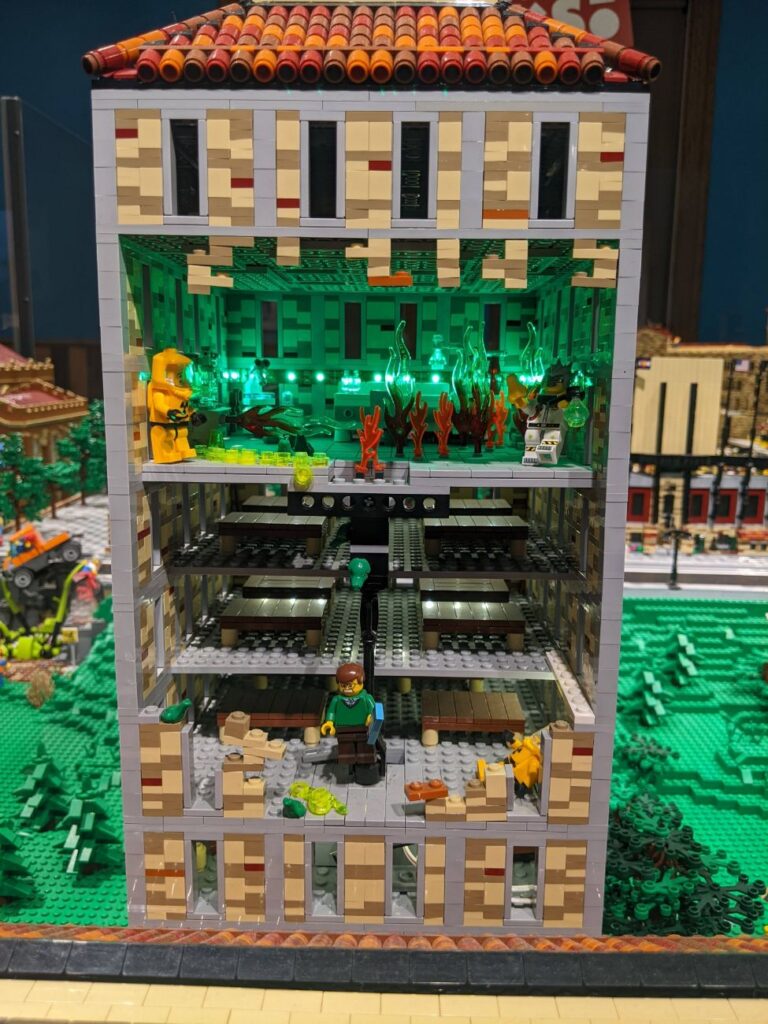
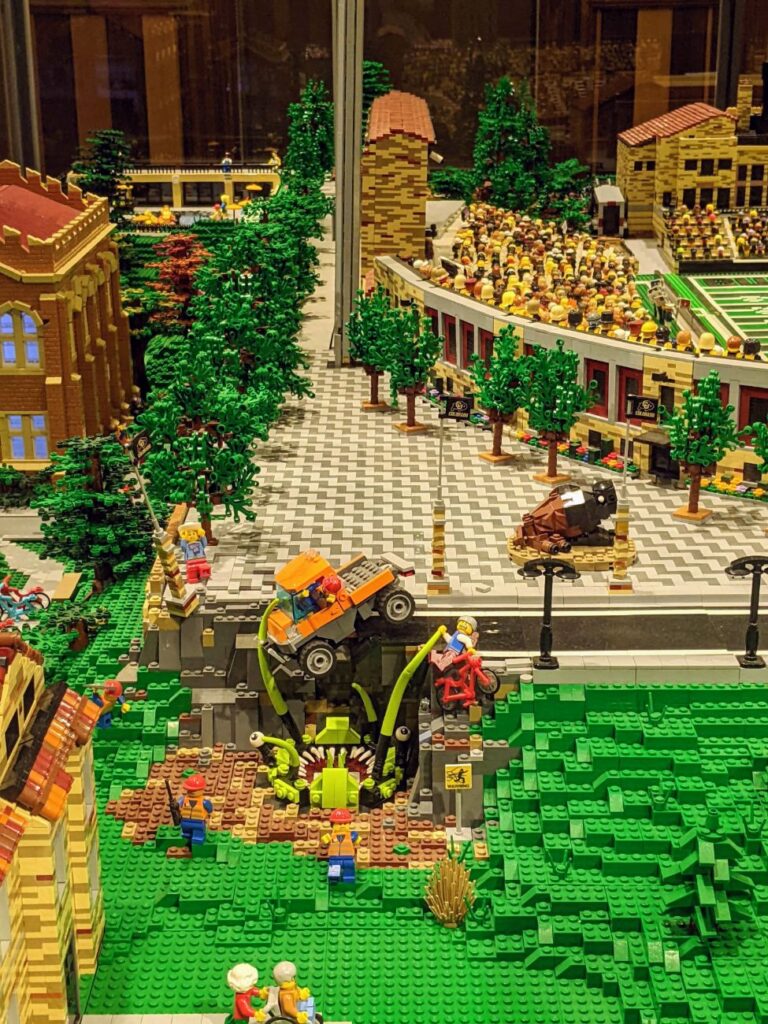
A Walk Around Campus
If you’re unfamiliar with the university campus, it’s worth walking around to see it. It’s really beautiful. Leaving Old Main puts you in a good position for a good wander on your way back to the Euclid parking garage.
If you didn’t grab food on Pearl Street like I did, you might be hungry for lunch about now. There are plenty of options right across Broadway, the most popular options being The Sink and Illegal Pete’s. Just make sure to add enough time to your parking.
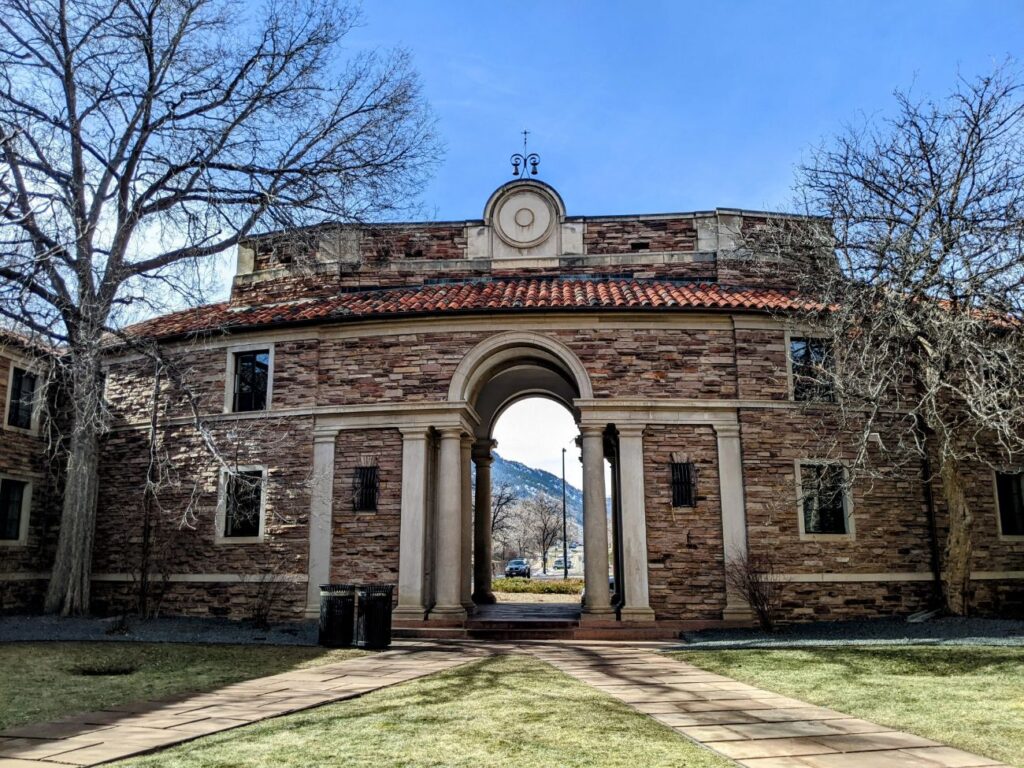
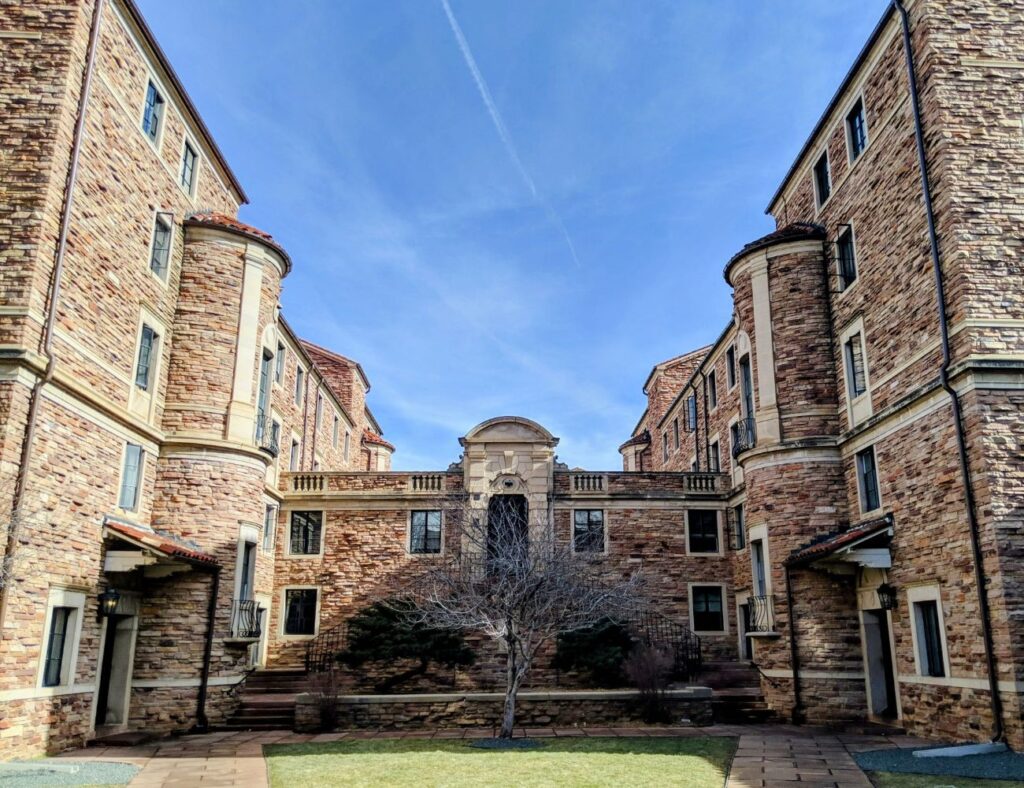
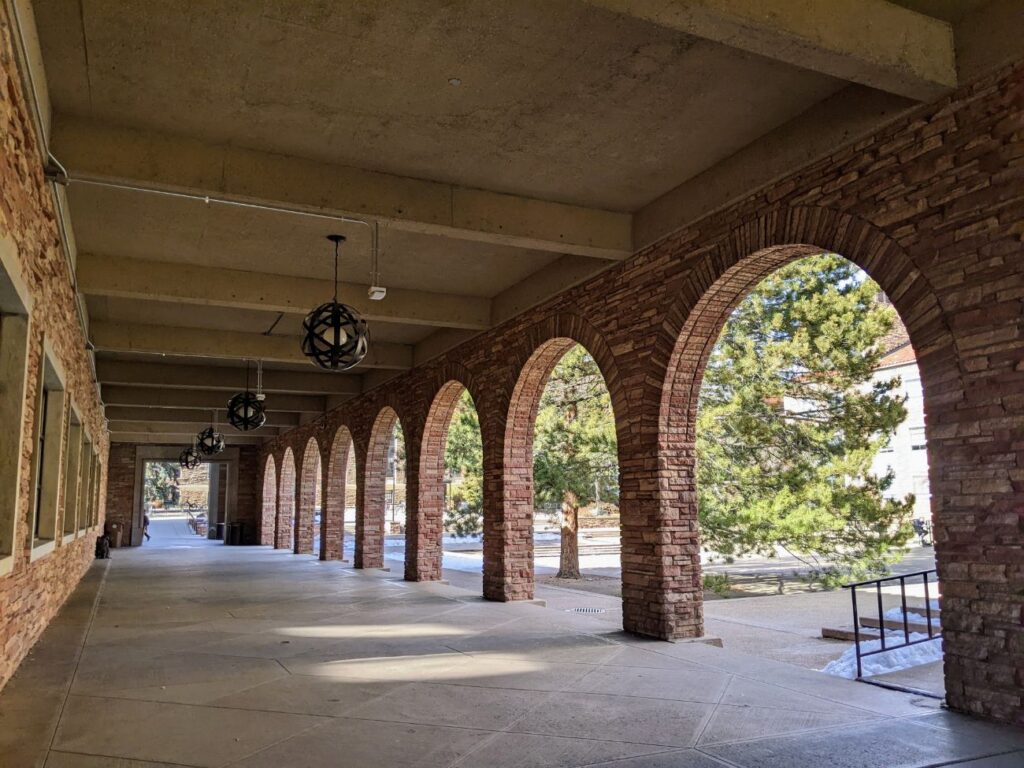
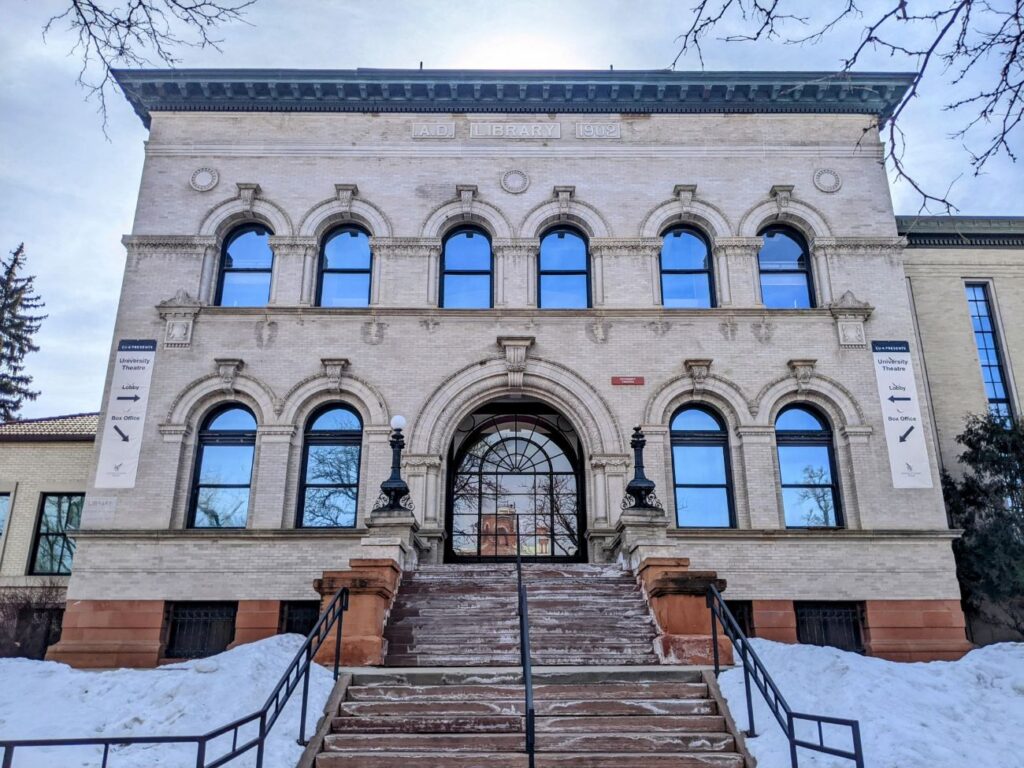
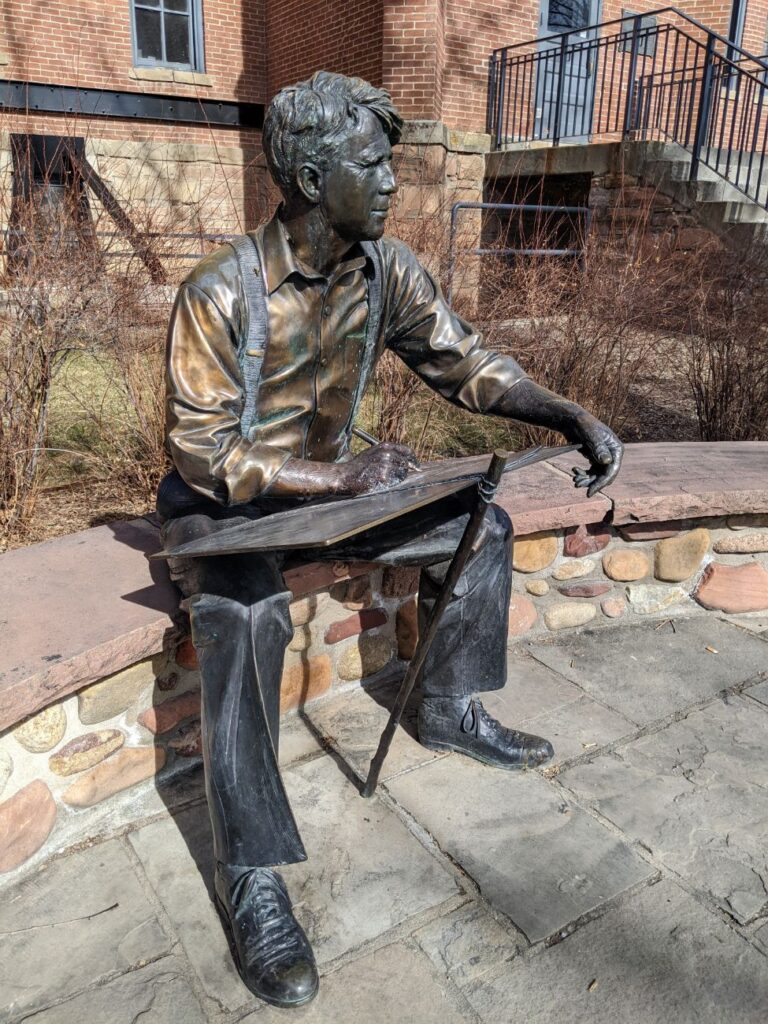
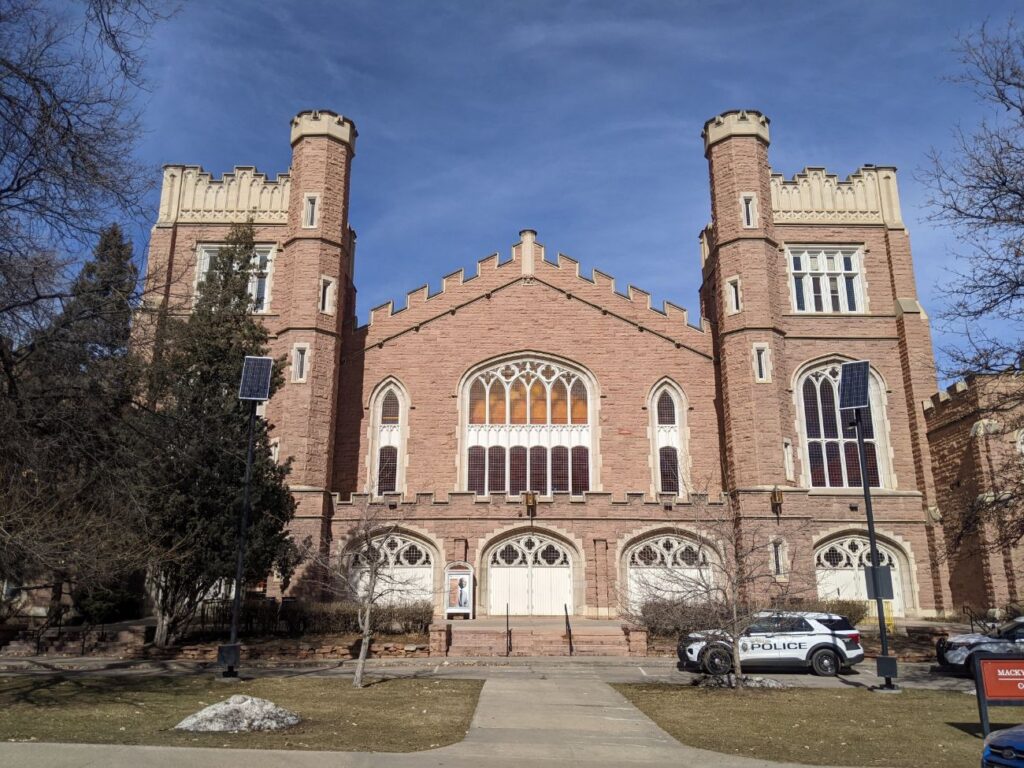
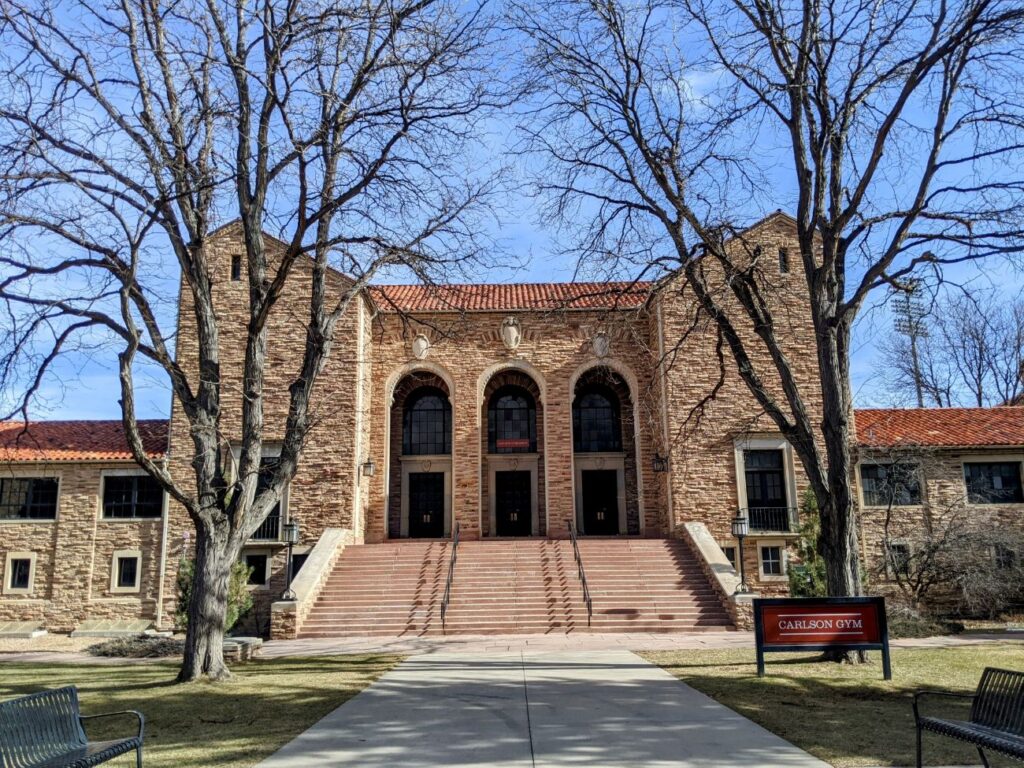
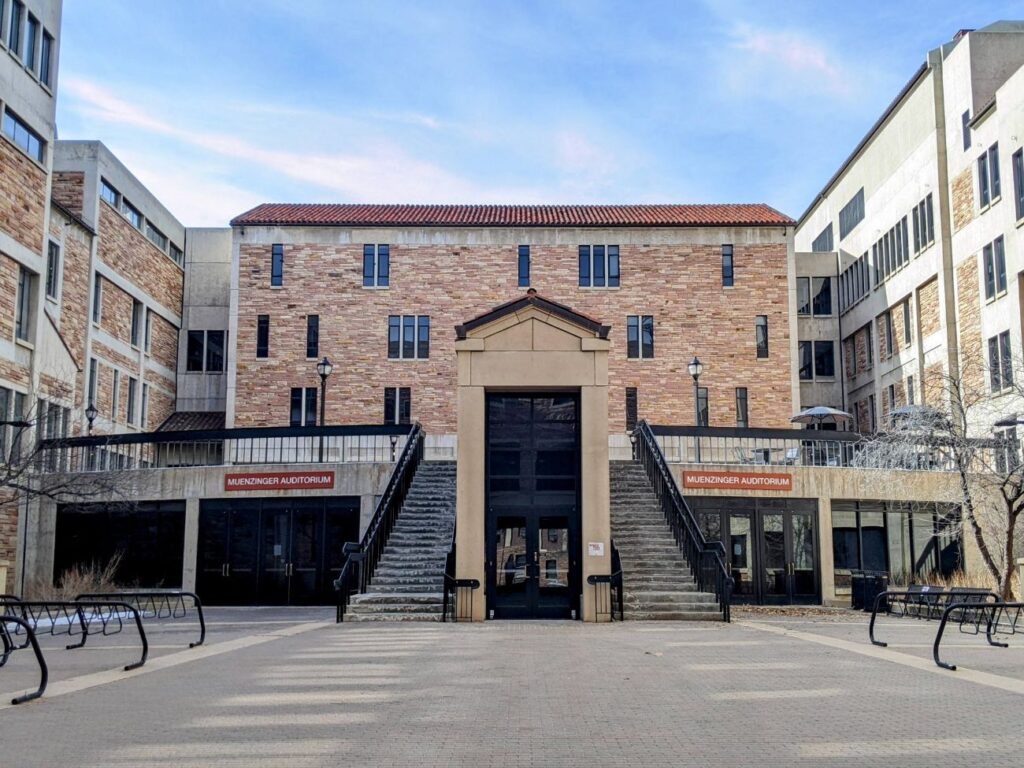
Boulder Museum of Contemporary Art
The Boulder Museum of Contemporary Art is a small place, but it packs a punch. Three galleries feature three artists on two and a half floors (or so.) The winter exhibits that I saw are currently on until March. The first room features photo collages by Kevin Hoth and George P. Perez. Polaroids and smaller snaps are woven and stapled together to form larger or intercut images.
A room up a few stairs in the back features Kristopher Wright. He combines photography with colorful printing techniques for exuberant prints about black life. Upstairs is a collection of projected photographs by Erin Hyunhee Kang on the slippery perception of “home.” (There’s another room up a few more steps to the rear, but it was curtained off.)
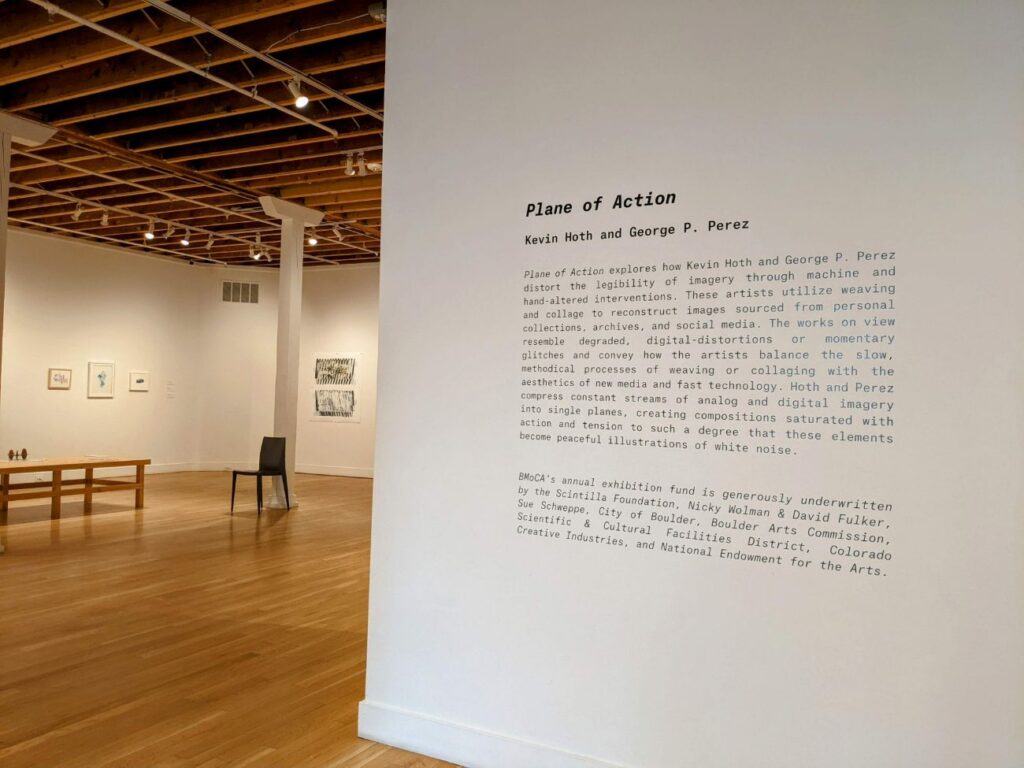
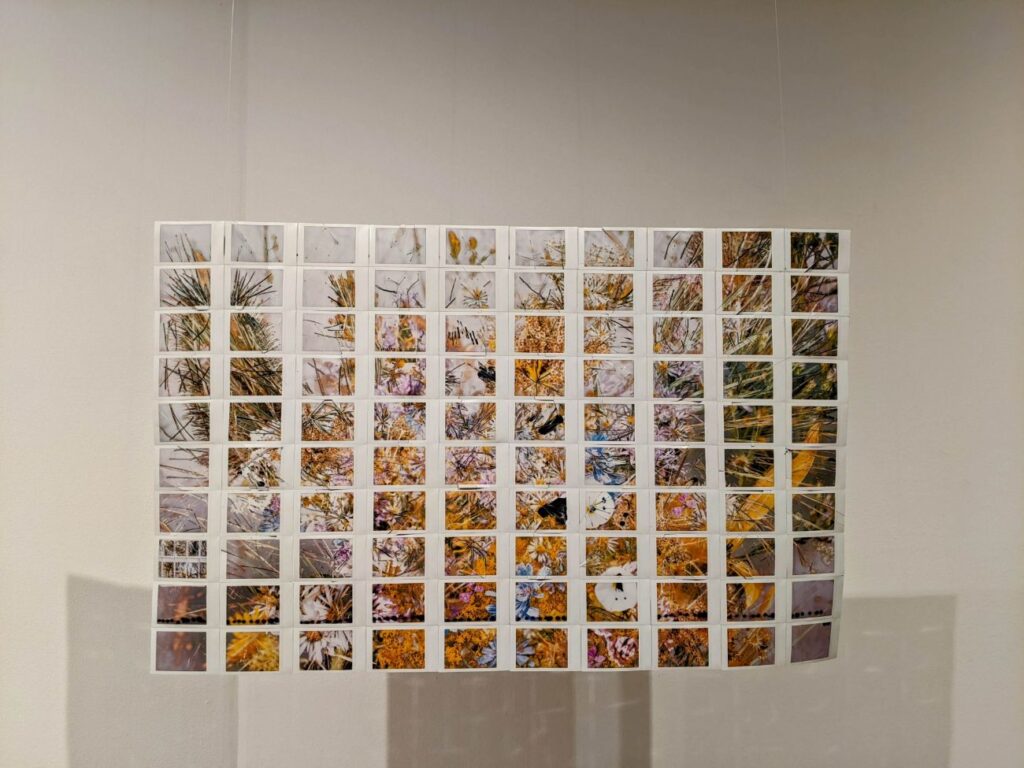
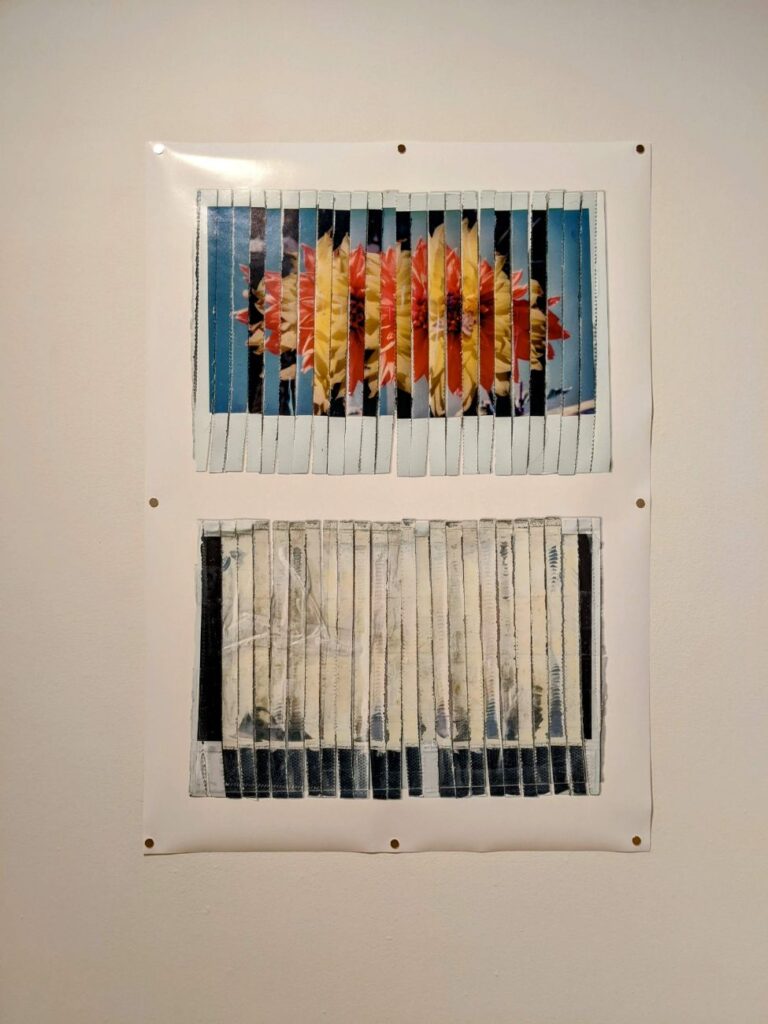
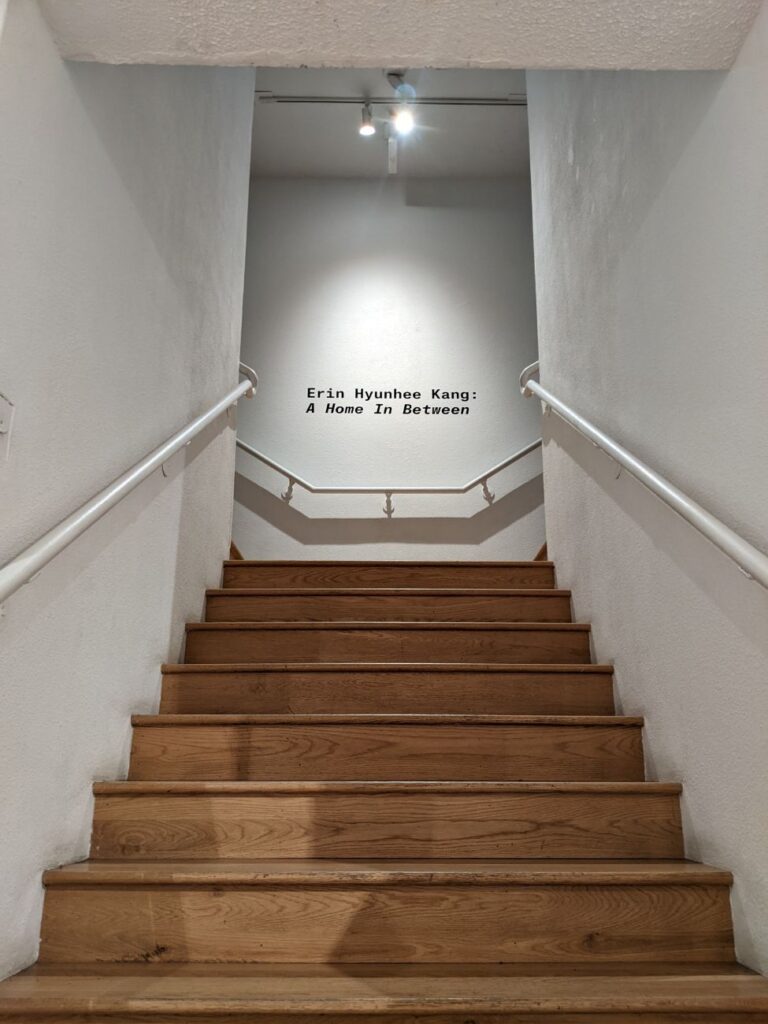
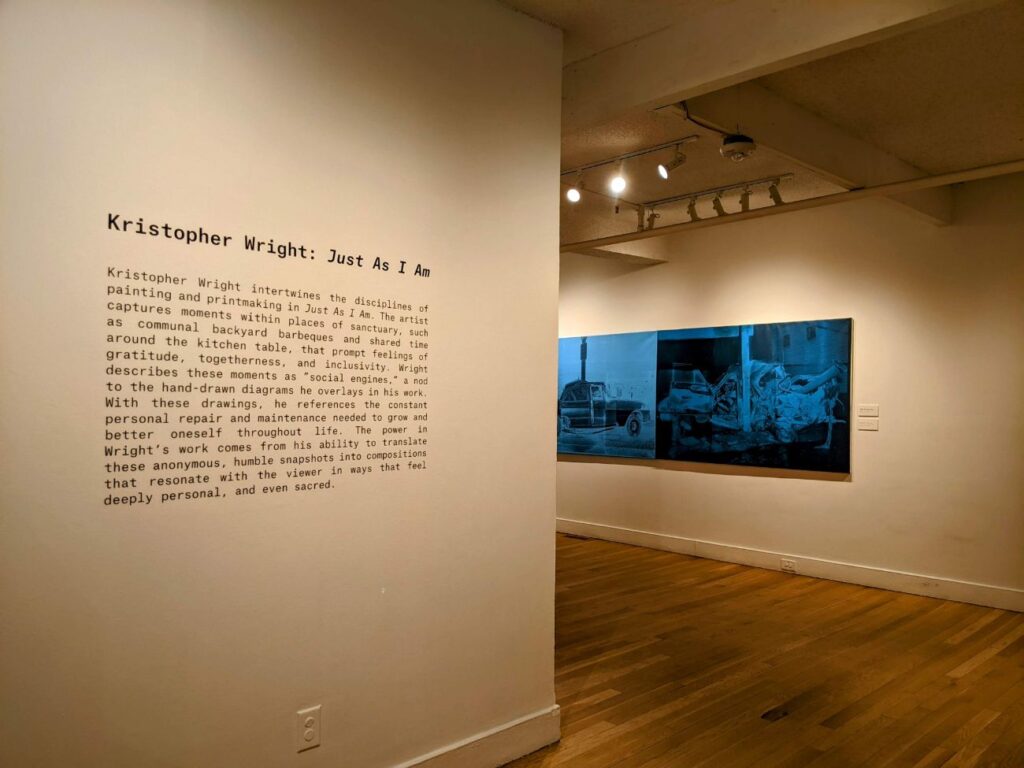
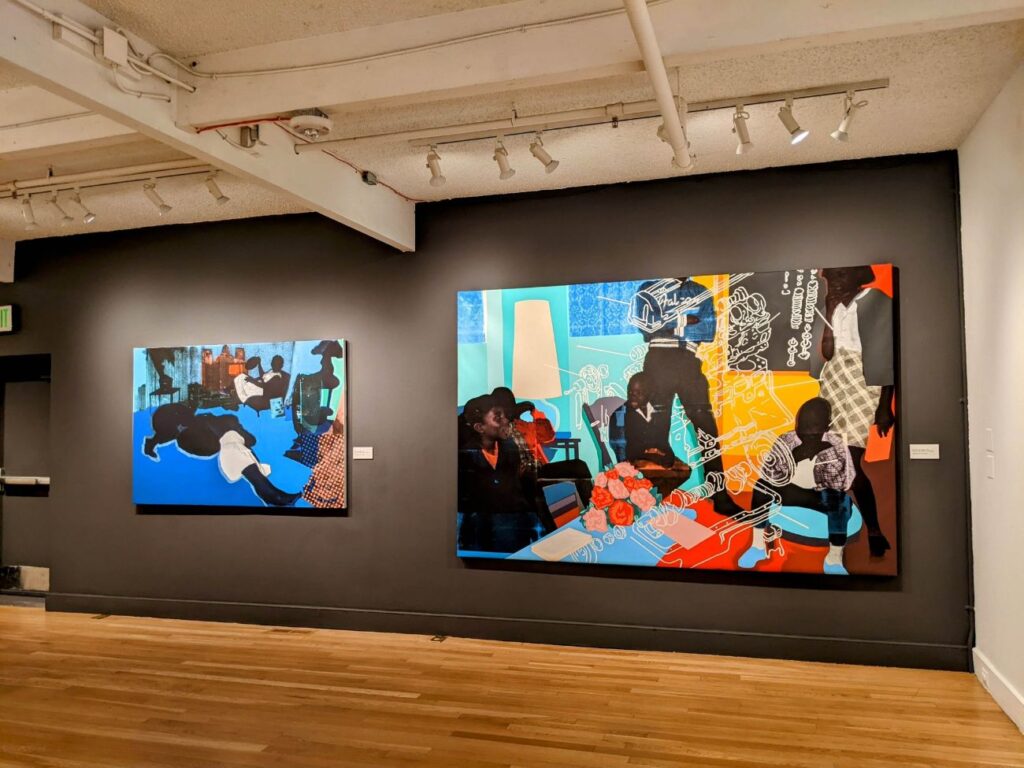
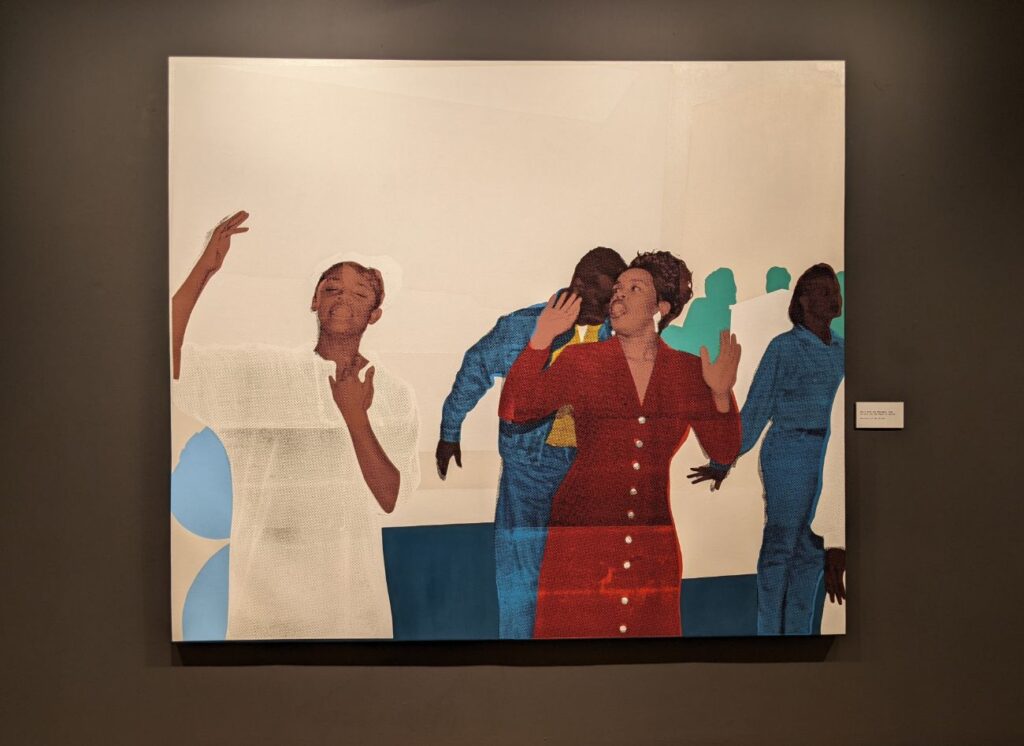
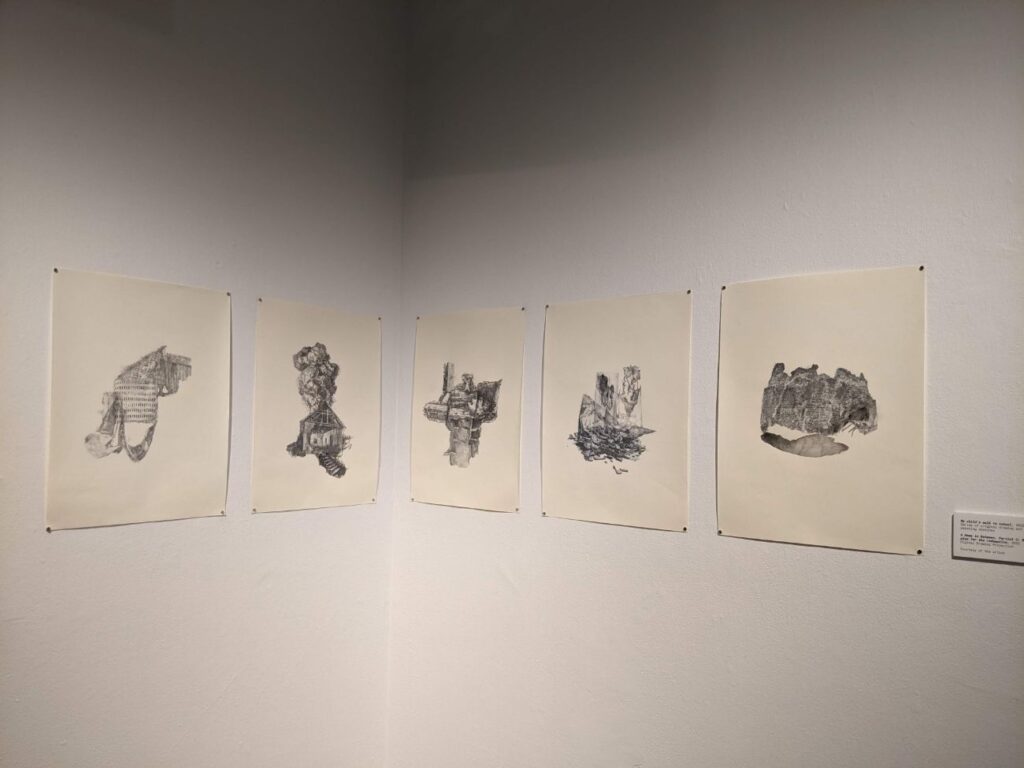
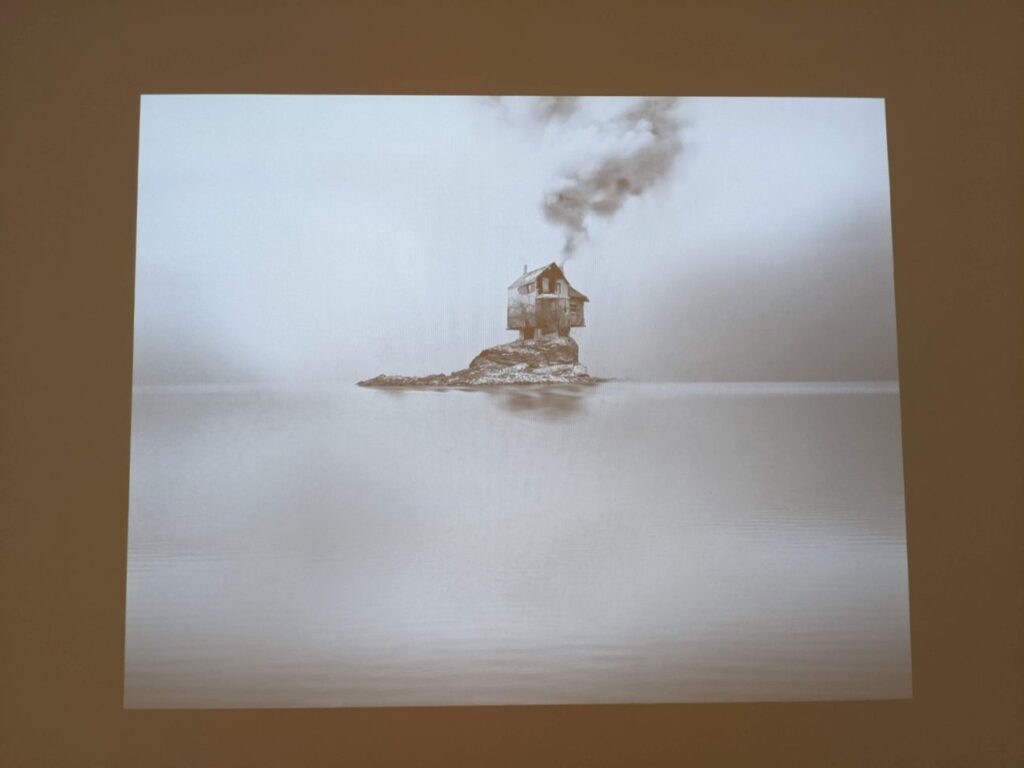
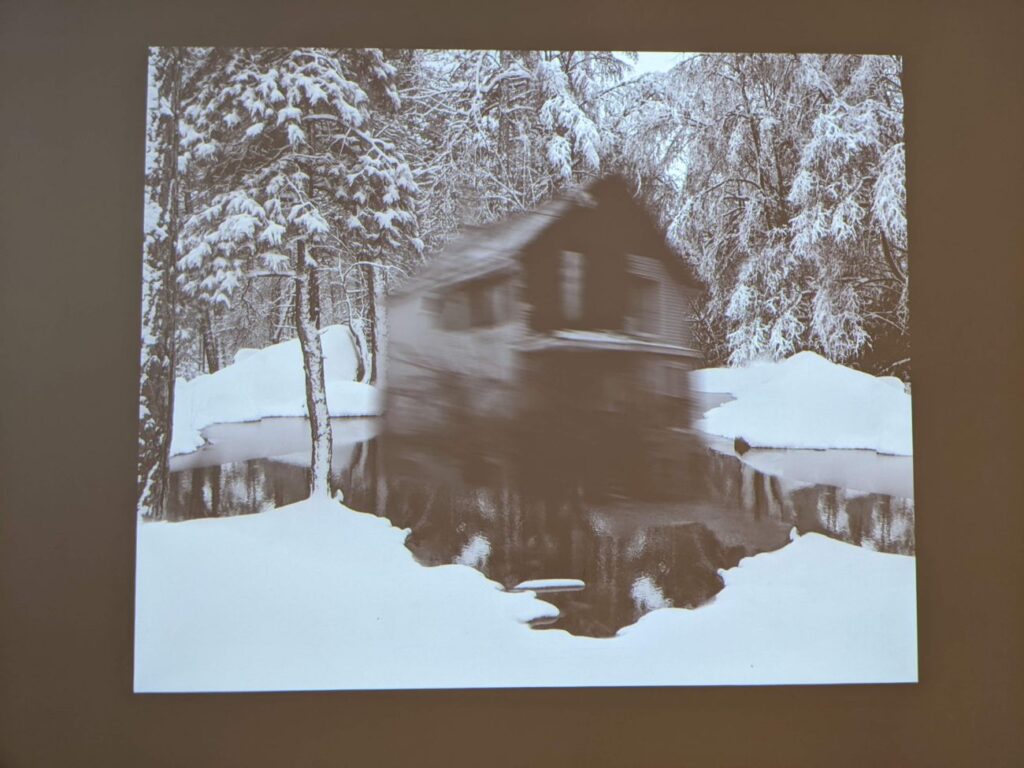
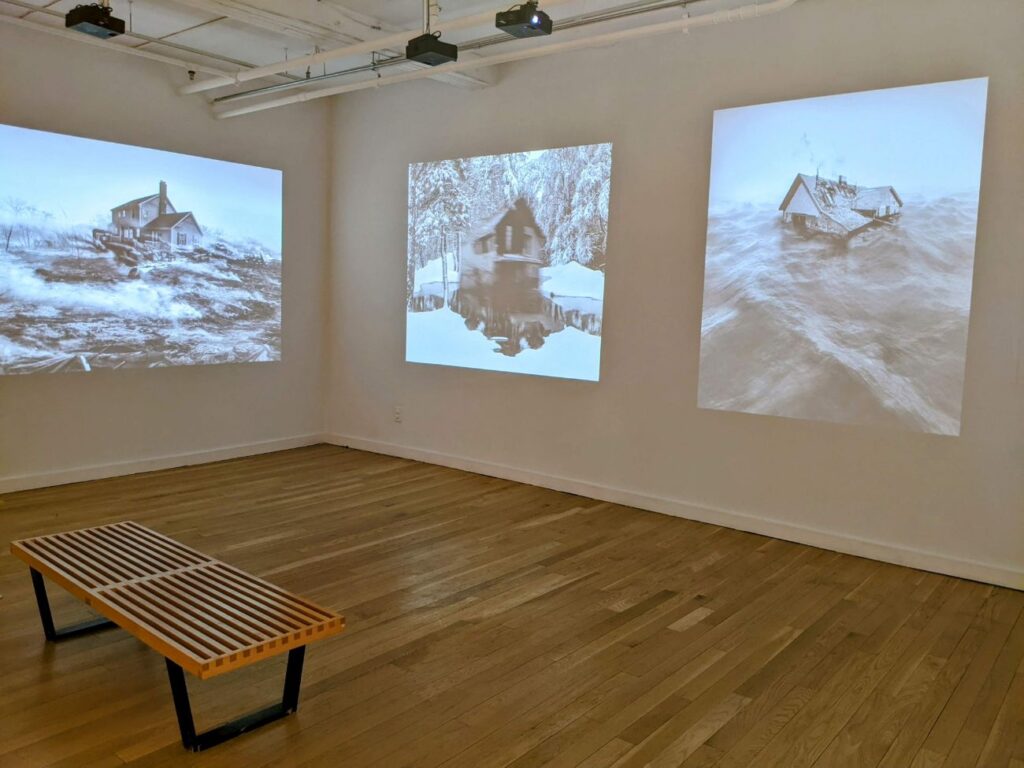
Make sure to see these artists before they leave and/or check out the new exhibits in March. The museum is open 11-5, Tuesday-Sunday, and has a really cute gift shop. It only costs $2 to visit, but is always free on Saturdays. It’s right next door to the Dushanbe Tea House if you want to combine a visit to the two – the tea house is a great place for lunch anyway, though you might need a reservation. (See below for more info.)
Metered parking is on the one-way street in front of the museum, and more paid parking is behind the tea house. There’s a lot right behind the museum, but no one was parked there so it might be for official vehicles only. I parked there for the 20 minutes I was in the art museum, and it seemed to be okay, but I wouldn’t push it.
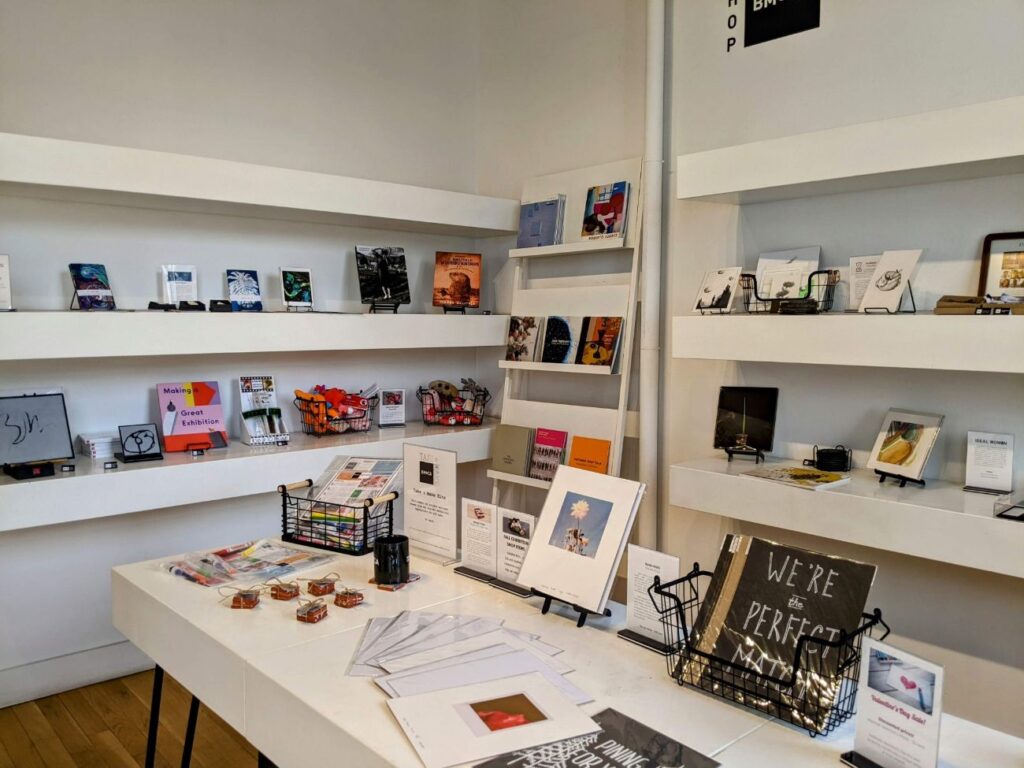
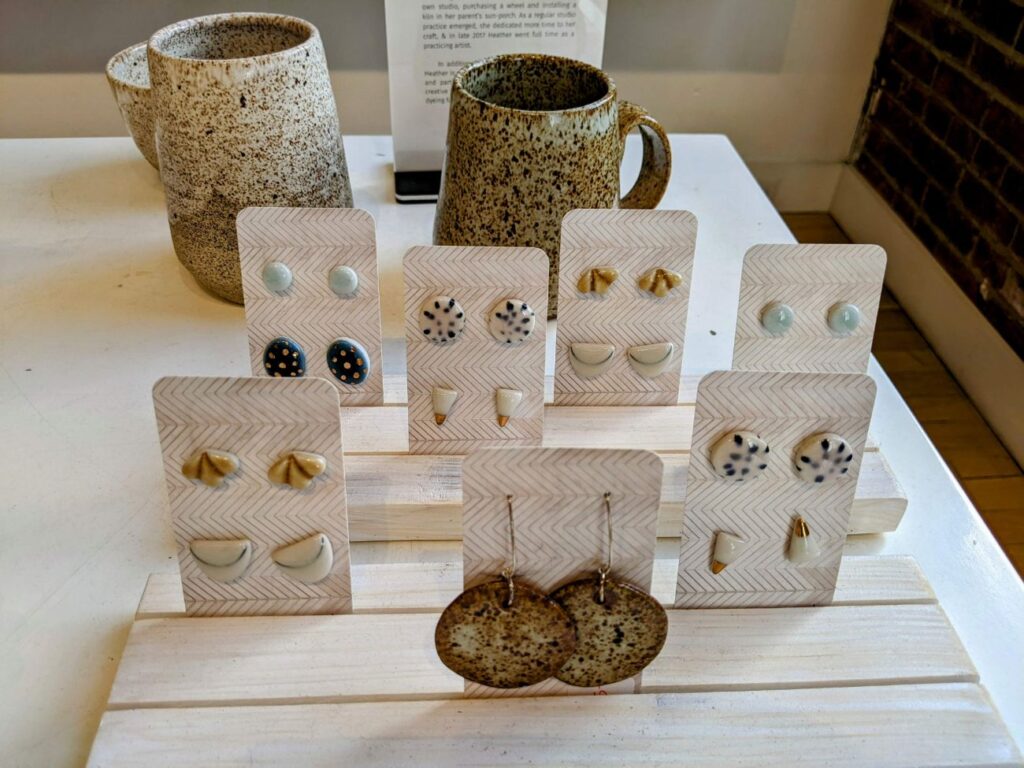
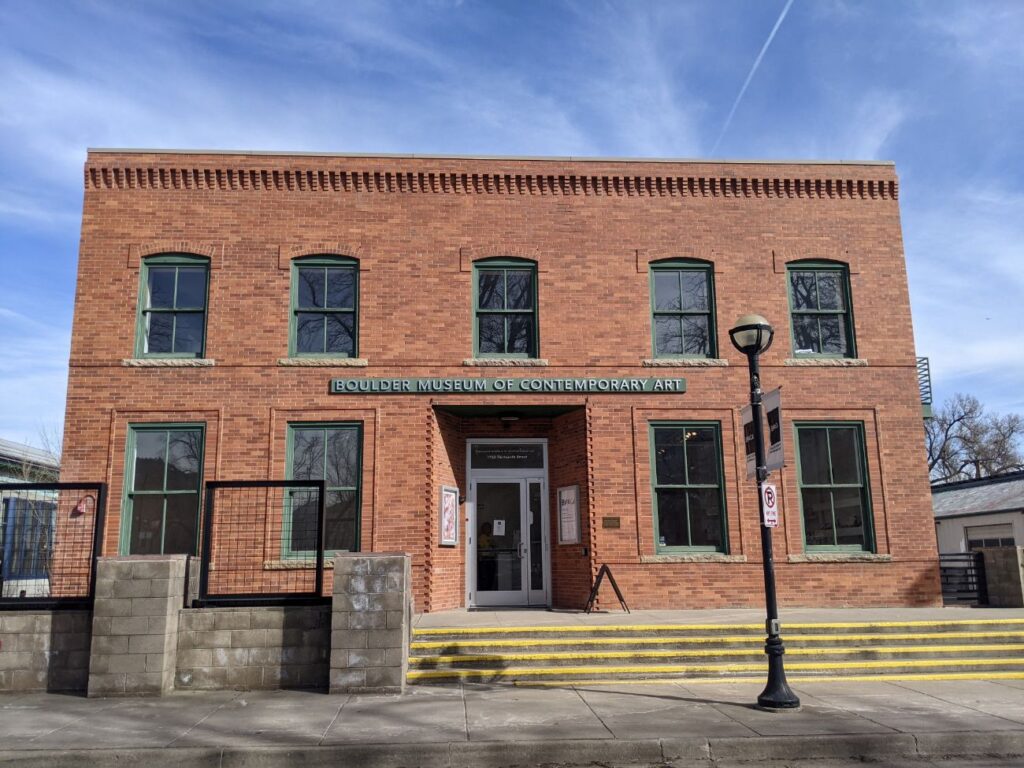
National Center for Atmospheric Research
The real hit of the day was the National Center for Atmospheric Research. I didn’t think I’d be too interested in a weather museum, but I knew I wanted to see the building designed by I.M. Pei. (He designed the pyramids at the Louvre and even Cleveland’s Rock n’ Roll Hall of Fame, among other things.)
First of all, it is a stunning building. And the setting up on Table Mesa is incredible! You drive up out of the neighborhood to a beautiful view of Boulder and the Flatirons. There are several trails to/from this area, and most of the folks in the parking lot were prepping for a decent hike. There are also walking and bike lanes on the road to the lab.
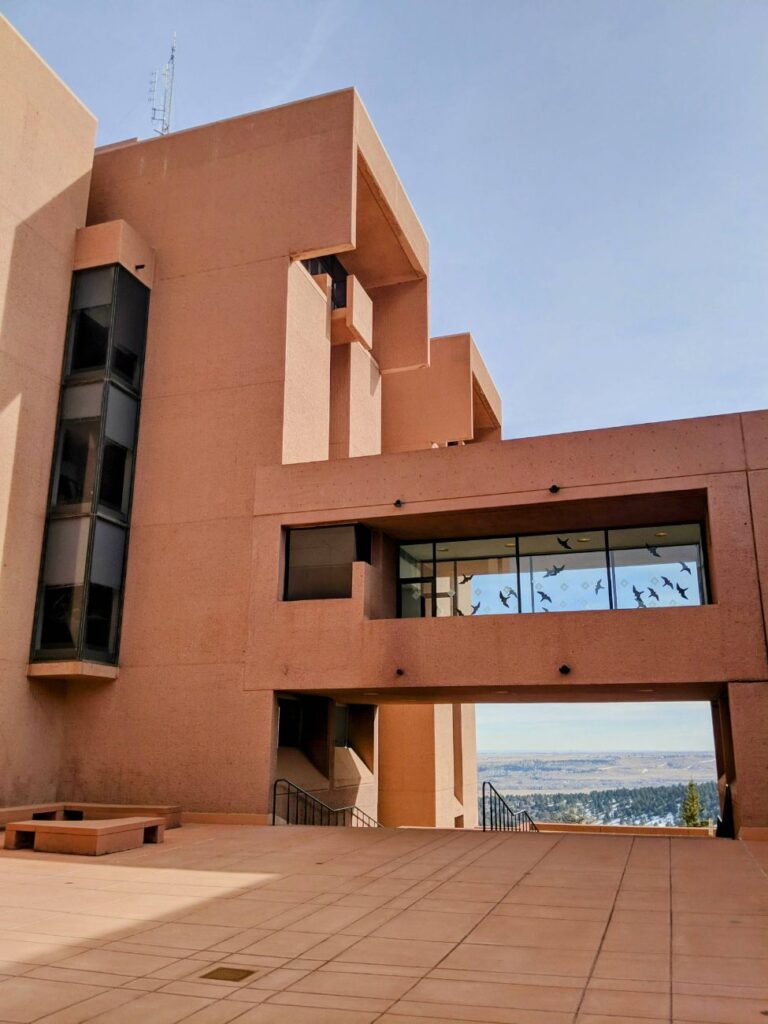
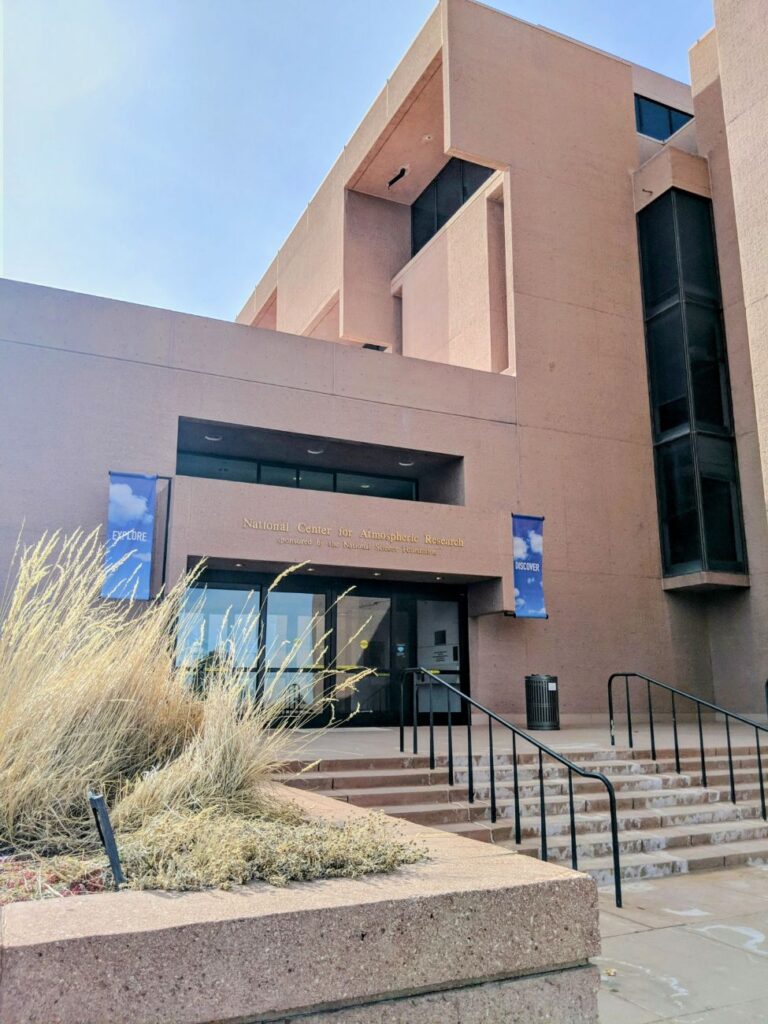
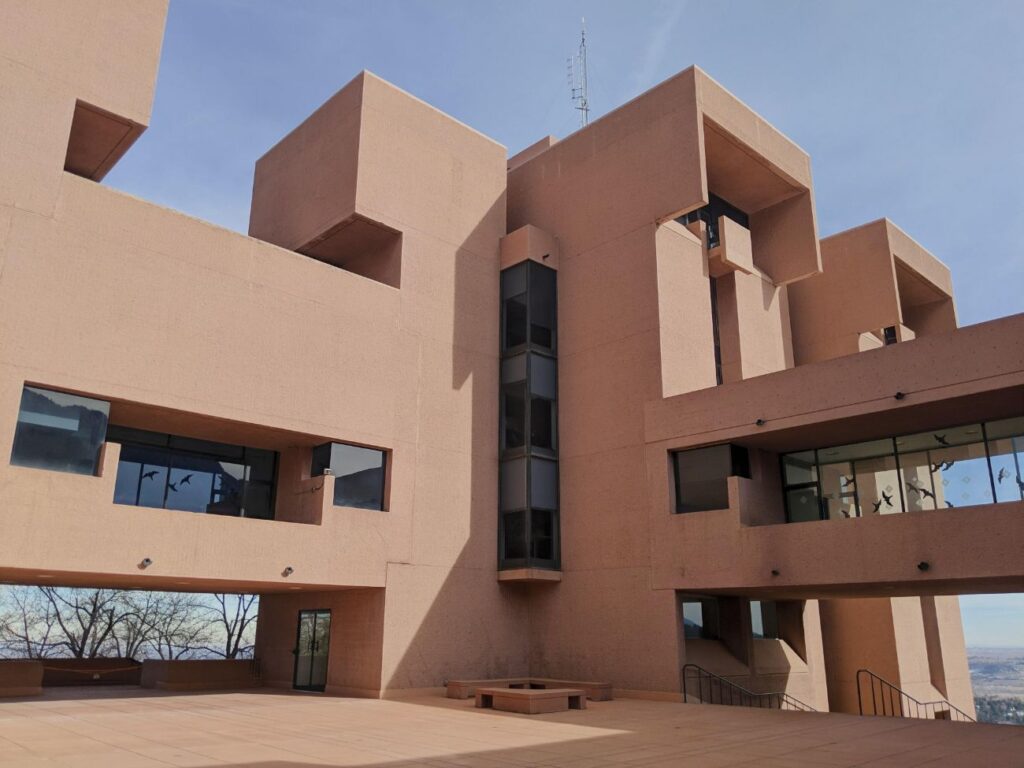
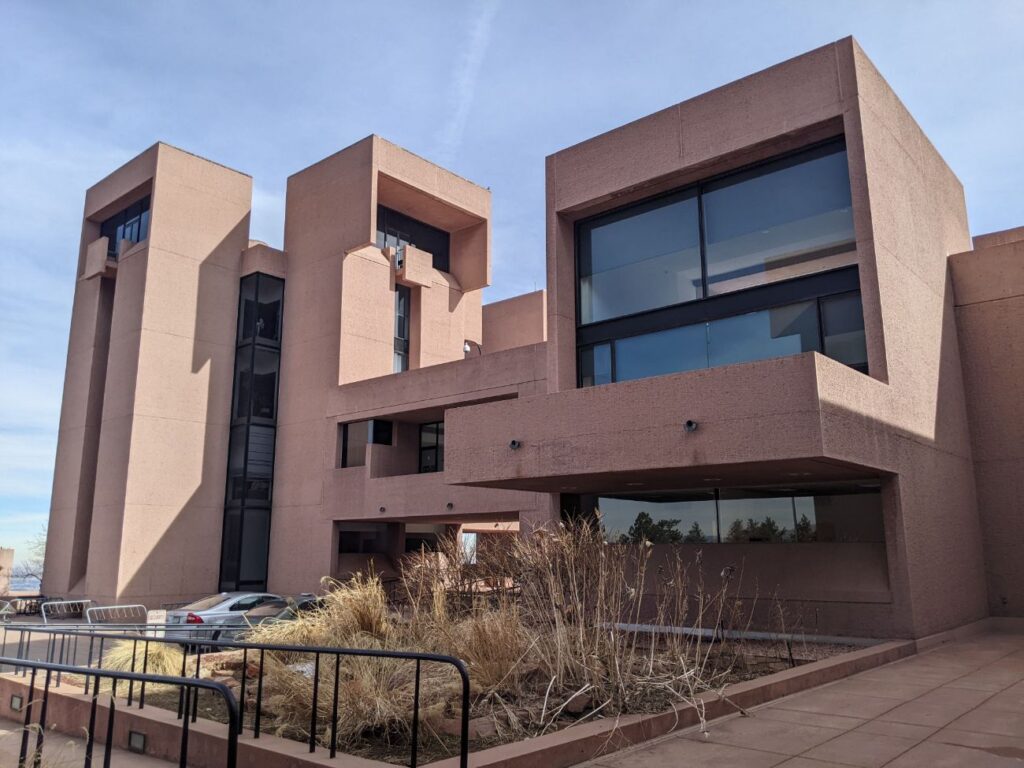
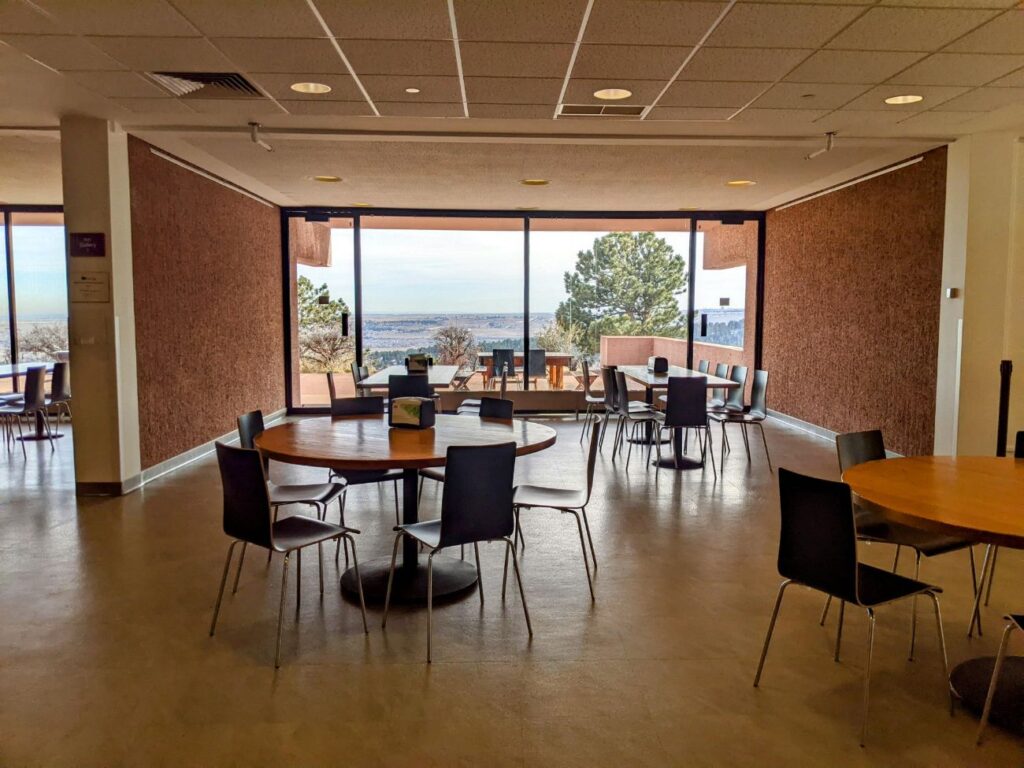
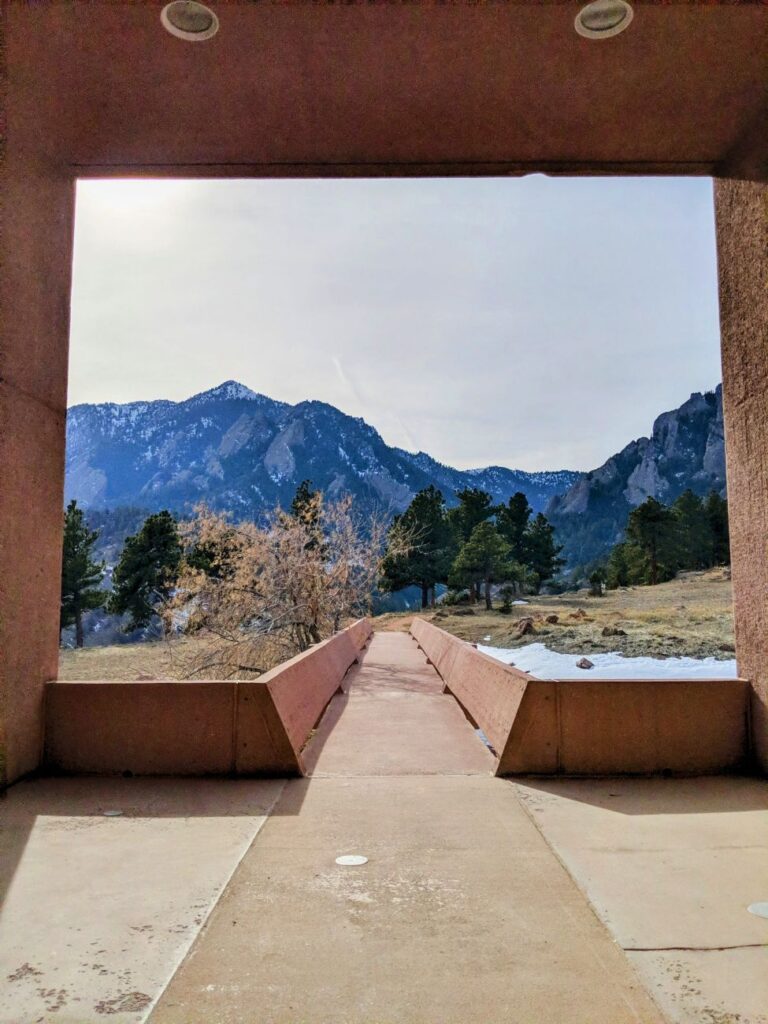
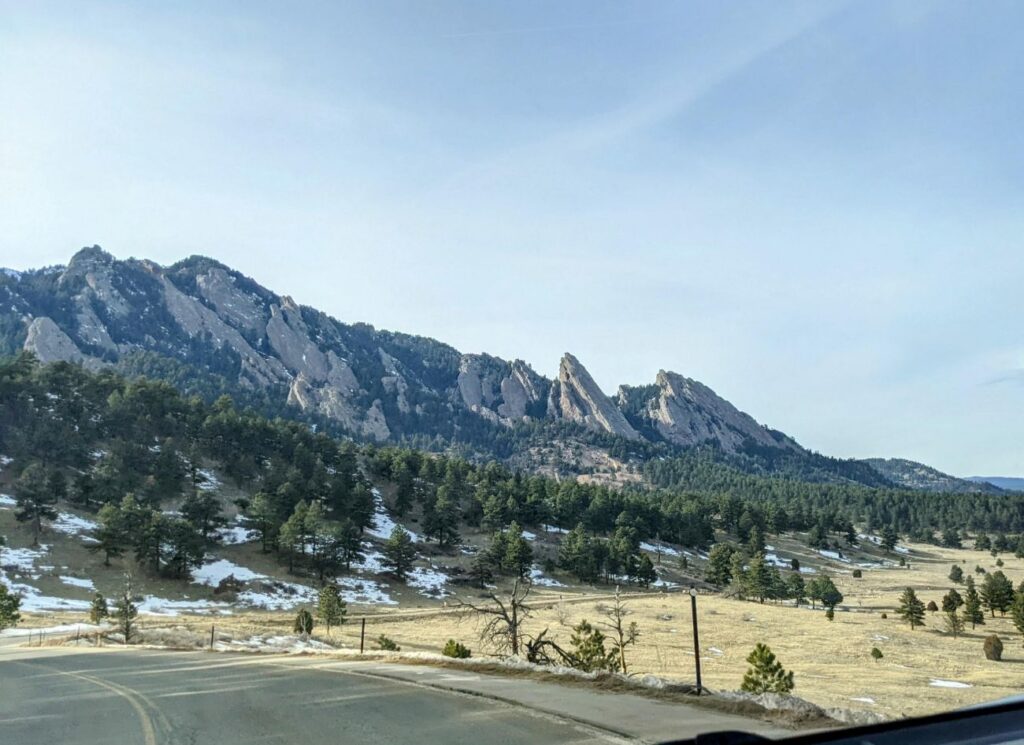
Visitor Center
Inside is a real working laboratory and research center. But there is a public visitors’ center with free exhibits on climate and weather, and it’s a lot of fun! It’s like a small hands-on science museum. There’s a large basin where you can put your hands in a cloud, a mini tornado, and a sand table showing erosion effects. The back end of a car has a recreation of a HUGE hailstone the size of a baseball! A small theater at the end shows several videos you can pick from a screen. I watched one about Boulder’s massive 2013 flood and how they use bike paths and breakaway structures to mitigate damage in the future.
Upstairs are more static exhibits, beautiful photography, and a game where you get a grade on your environmental impact. A central section has a sunny display about the building and its architect, complete with a model of the building in the middle.
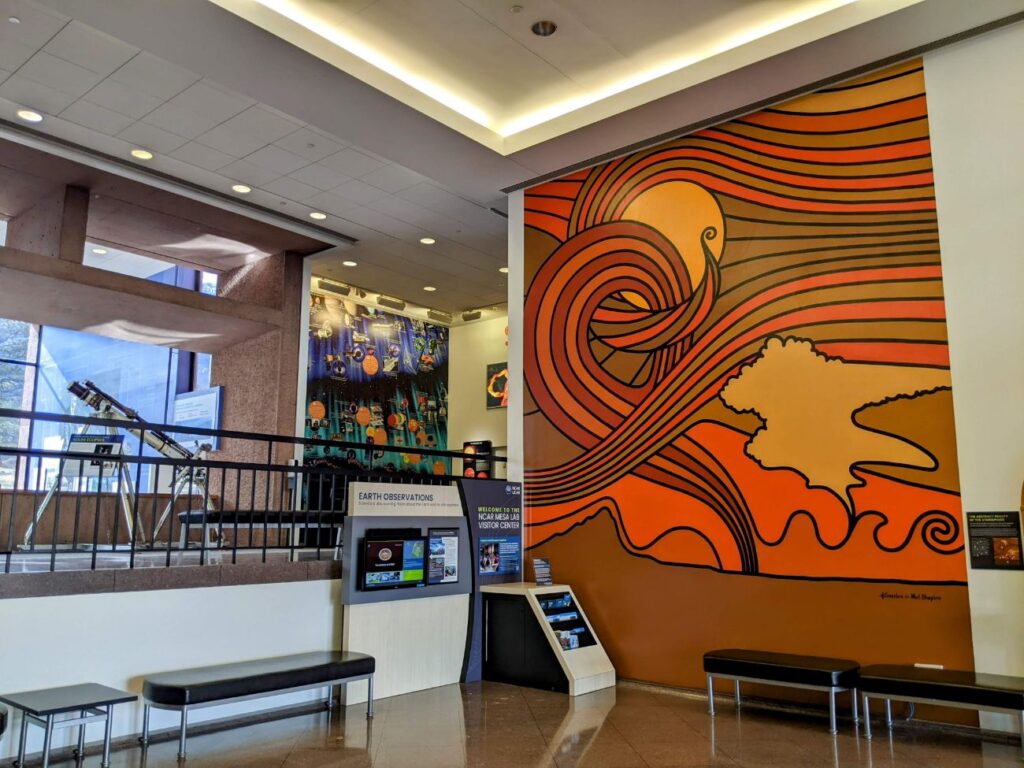
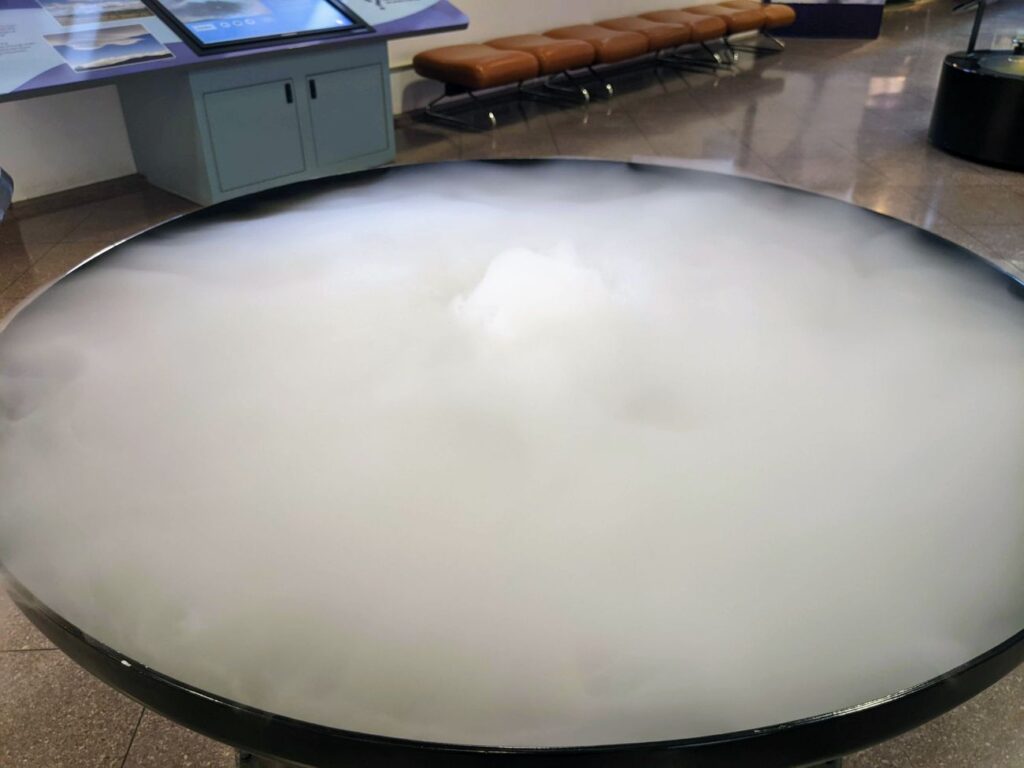
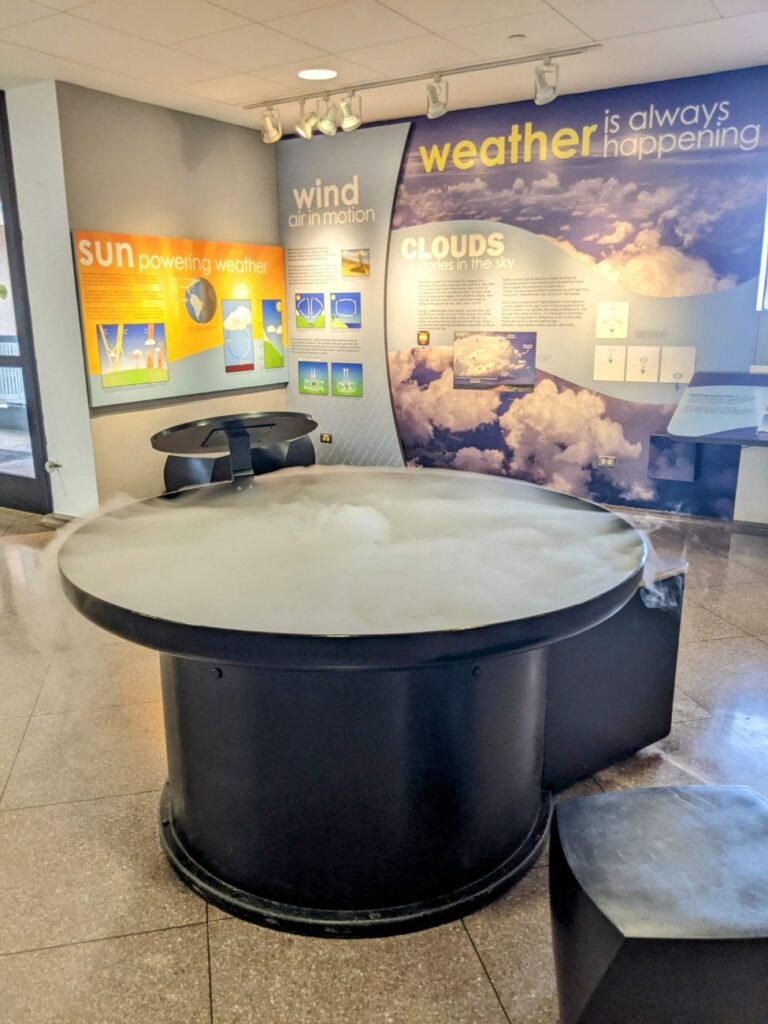
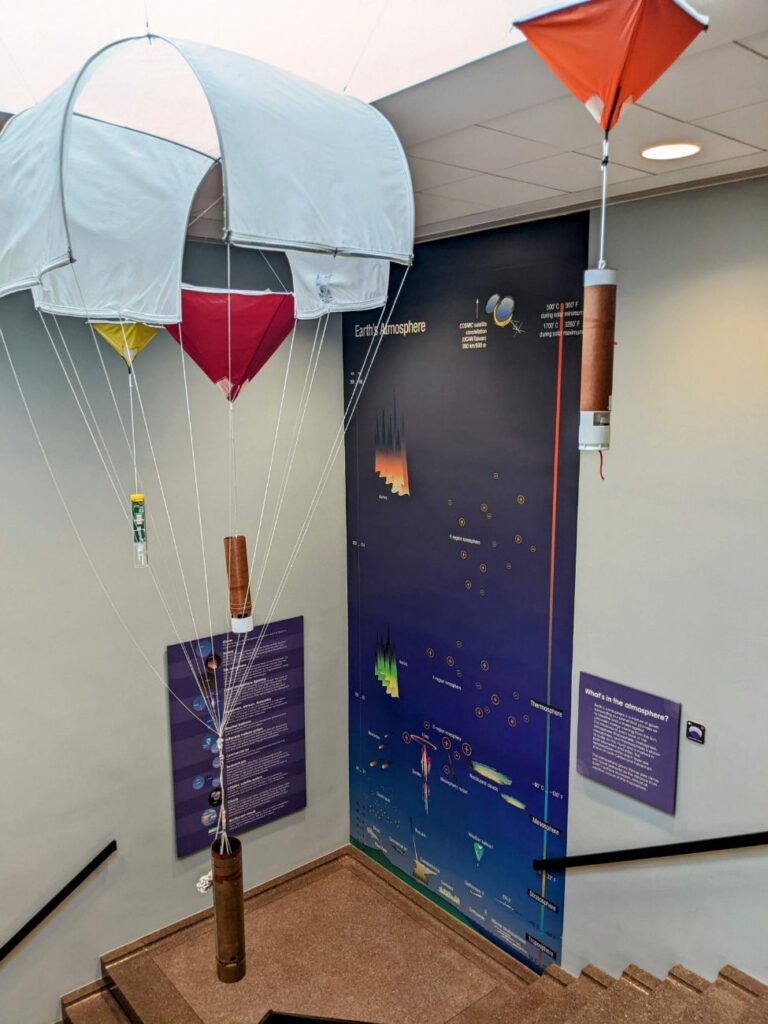
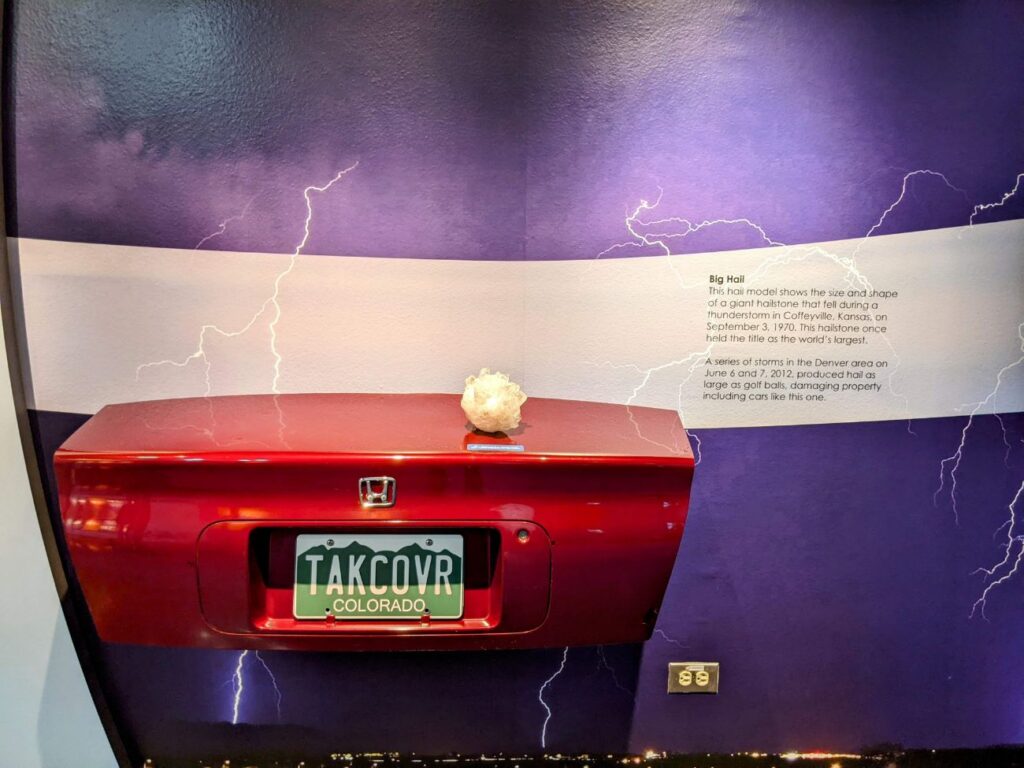
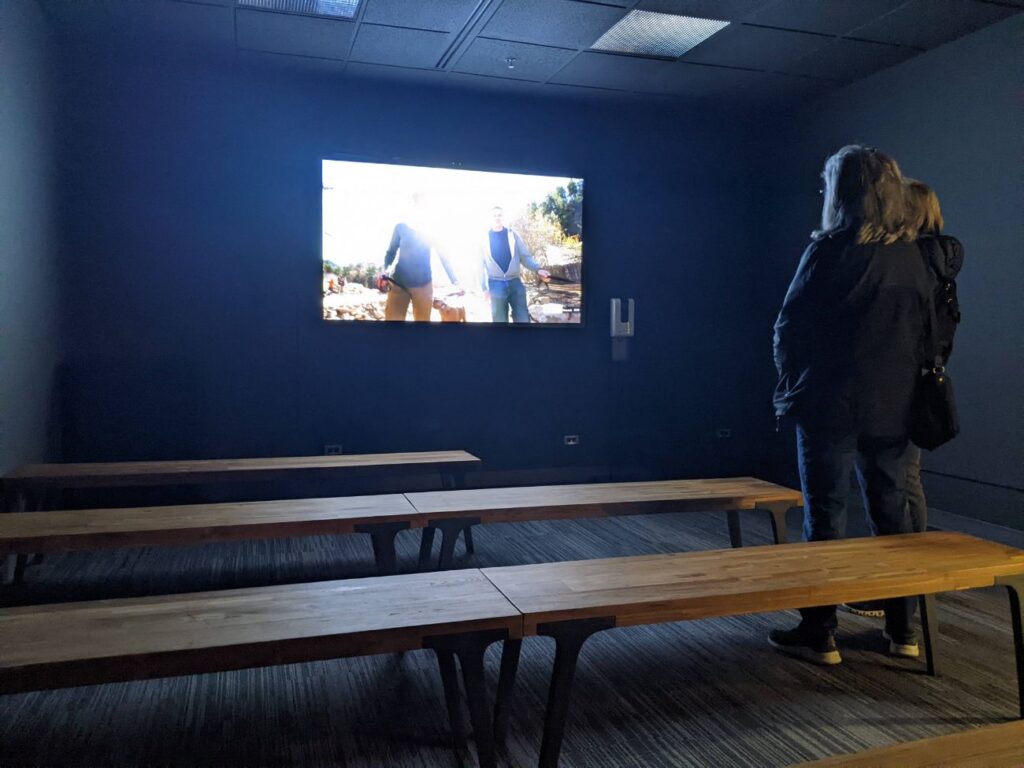
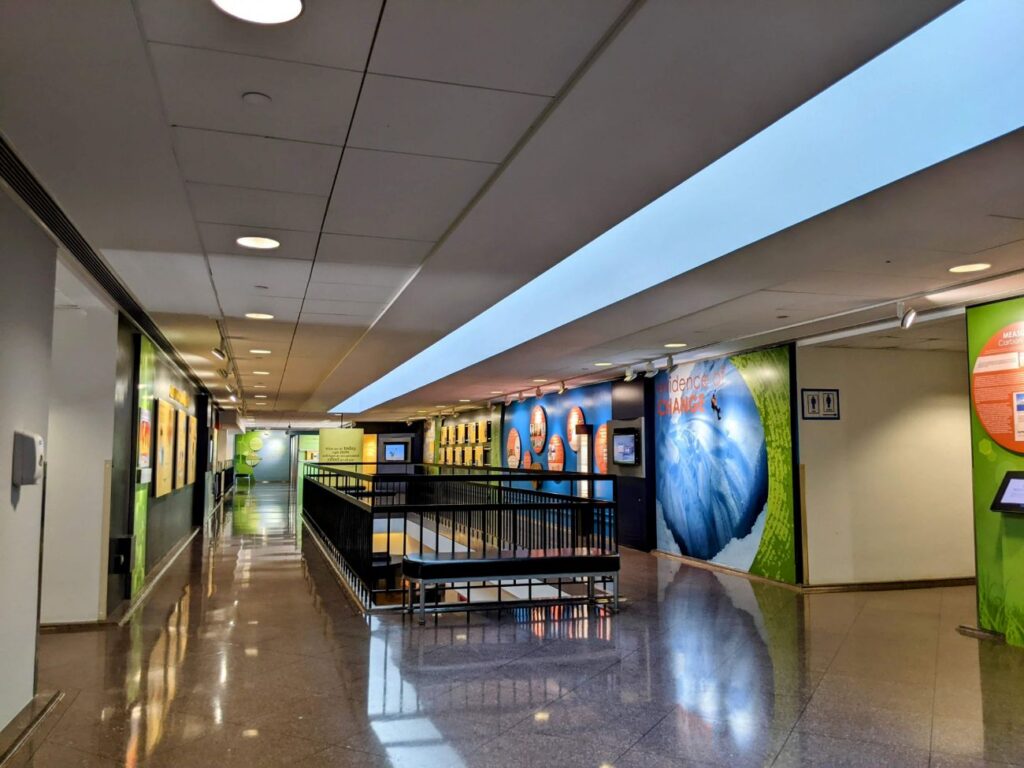
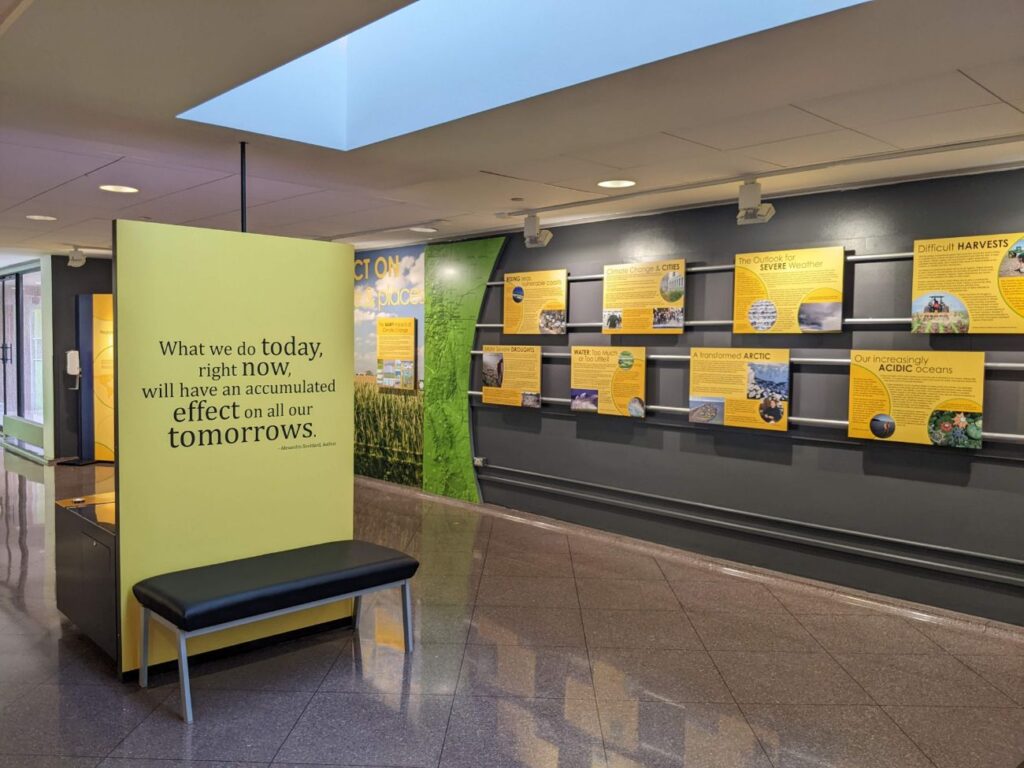
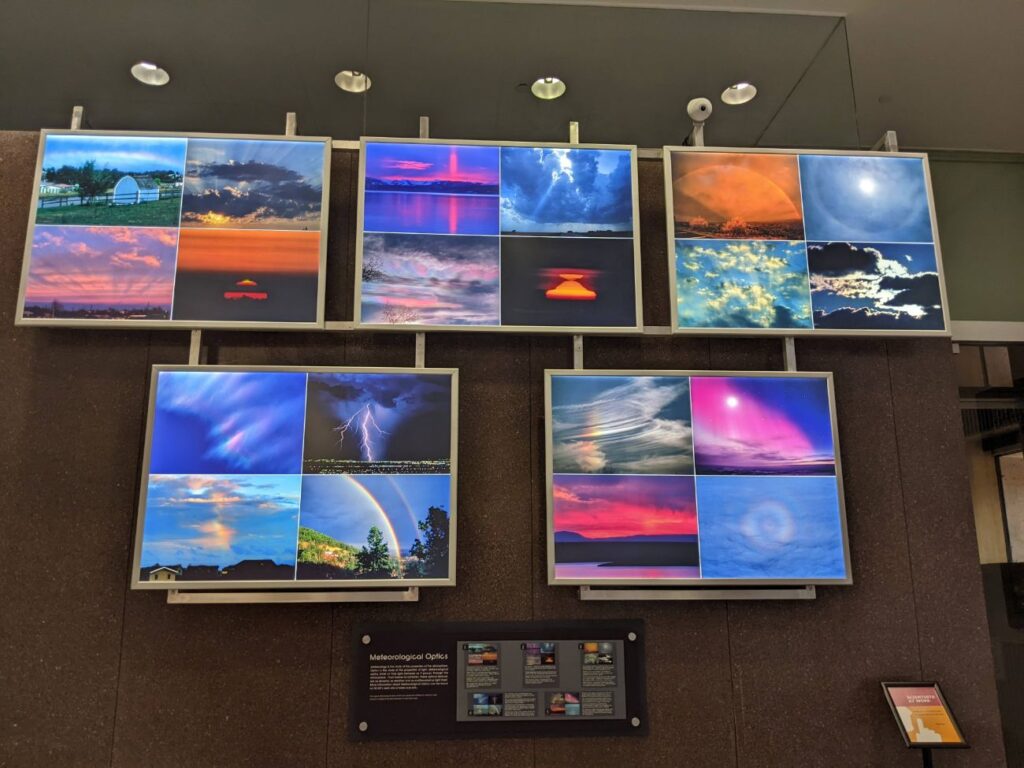
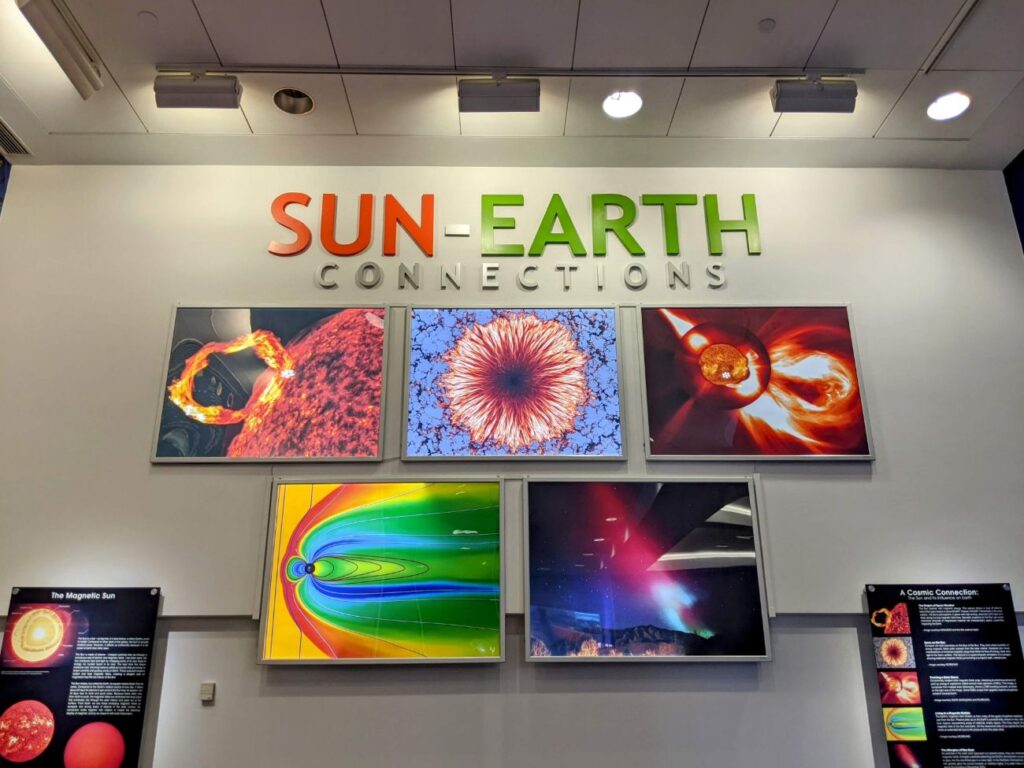
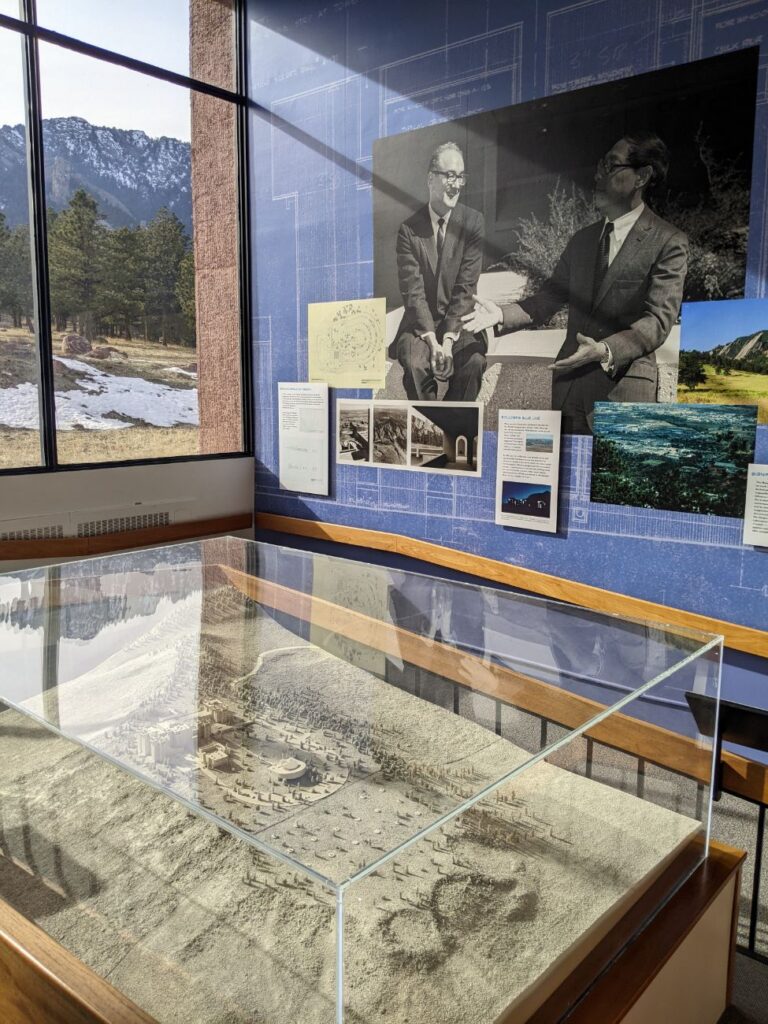
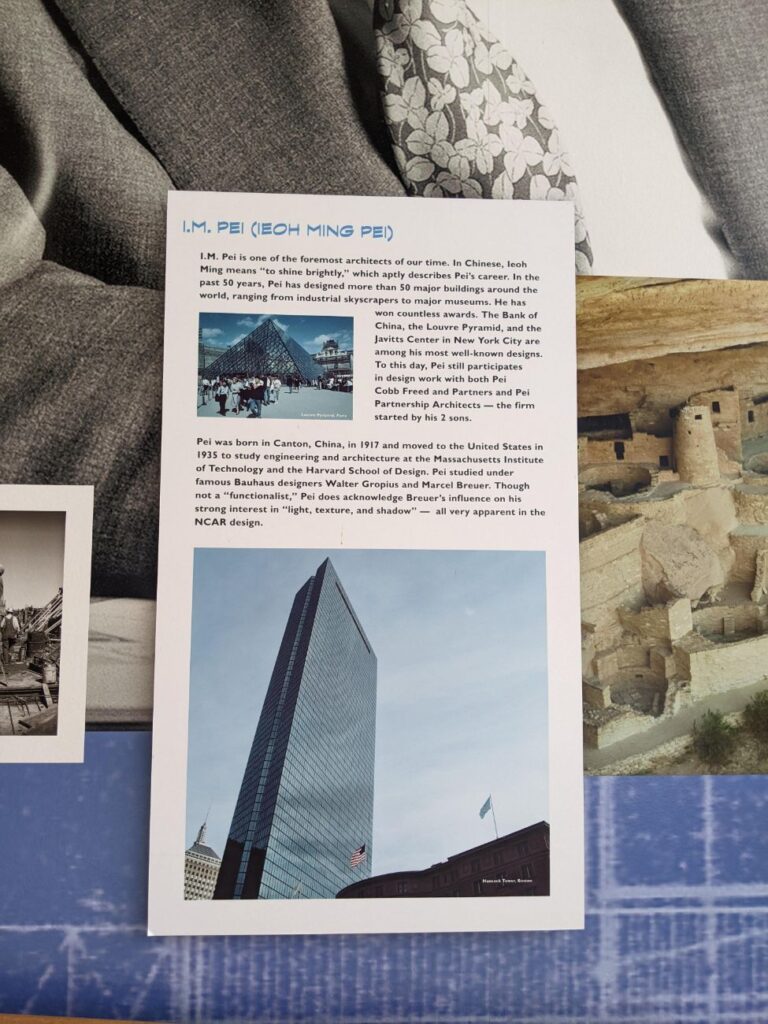
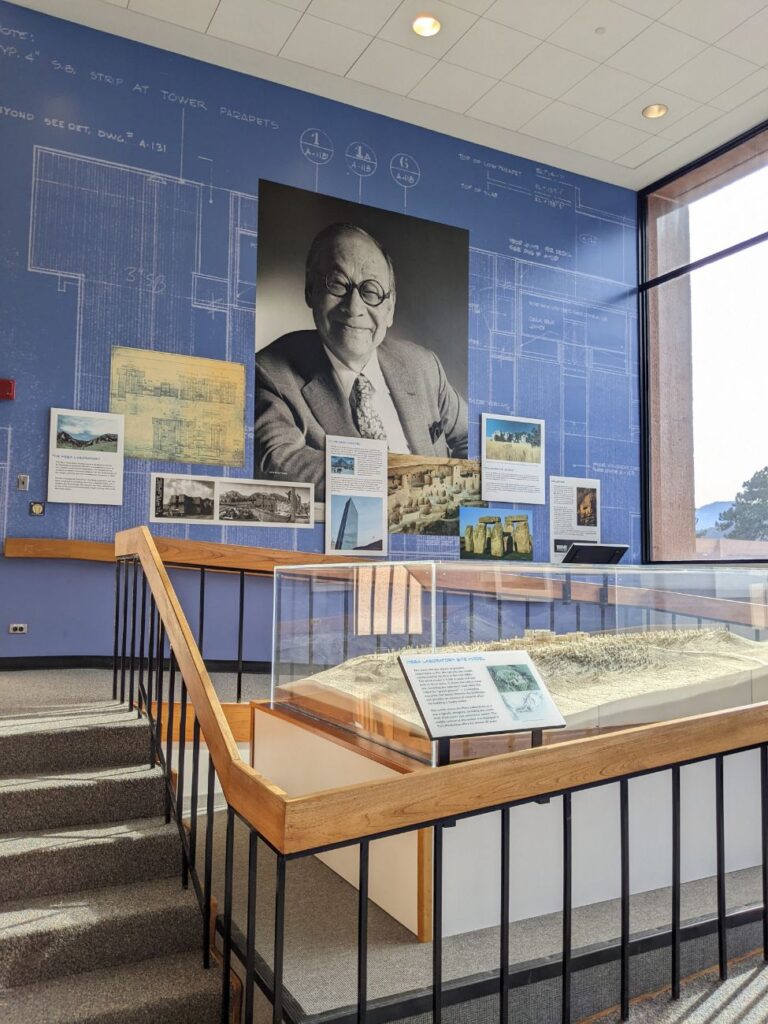
It took me under an hour to tour the exhibits, even after sitting and watching one of the theater videos. The visitor center is open daily, from 8-5 on weekdays to 9-4 on weekends. There are free guided tours every day at noon (which I just missed.) The center is closed only twice a year, once in the spring and once in the fall, so check the website before your visit.
Longmont Museum
None of these museums take long to tour, so I had plenty of time to drive 30 minutes to the Longmont Museum. This is a solid area history museum, plus an art gallery and play space!
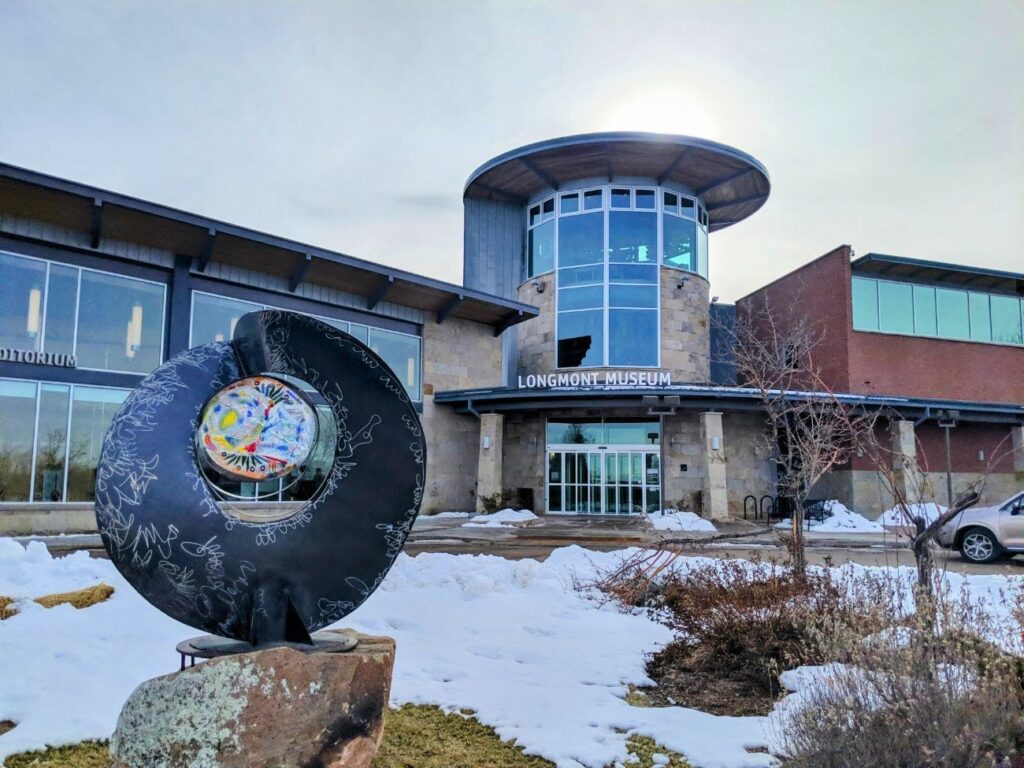
Local History
The history part of the Longmont Museum is built out with full-size storefronts and fun games along the way. It traces the history of this part of Colorado from the indigenous Arapahoe population through early European settlements, the coming of the train, agriculture (particularly beet farming), and into the modern age of high technology.
It’s all interesting and engaging for all ages. I especially liked one table where you can direct water to different crops. (Yes, I did play with it. The wheat crops were dying!)
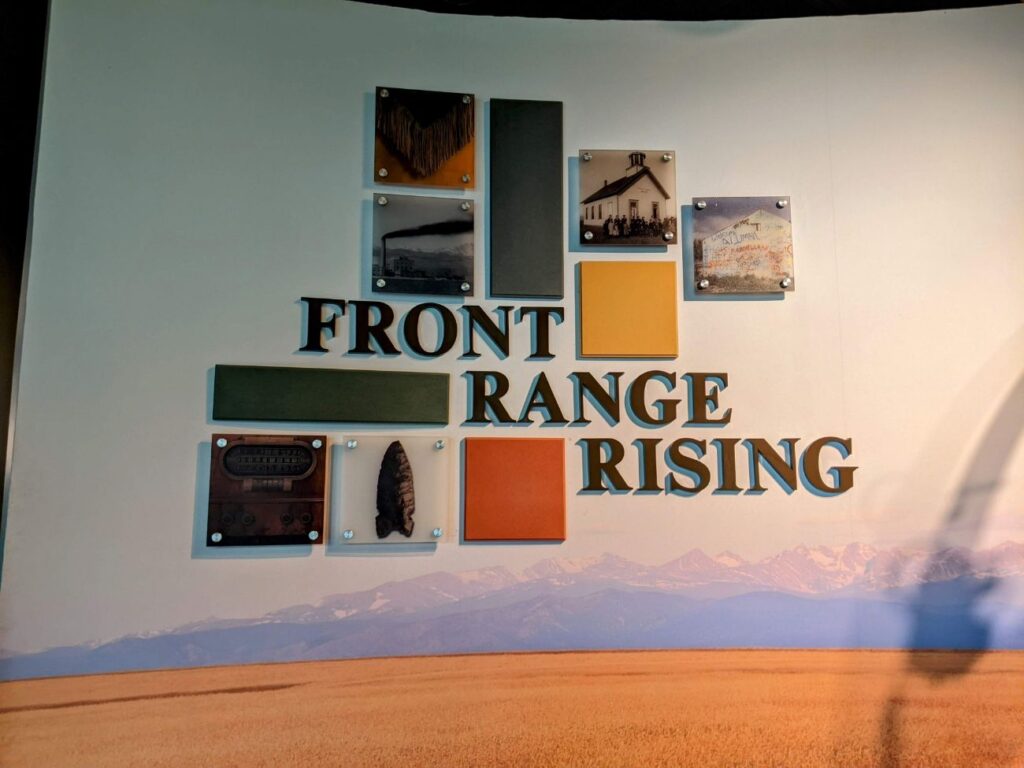
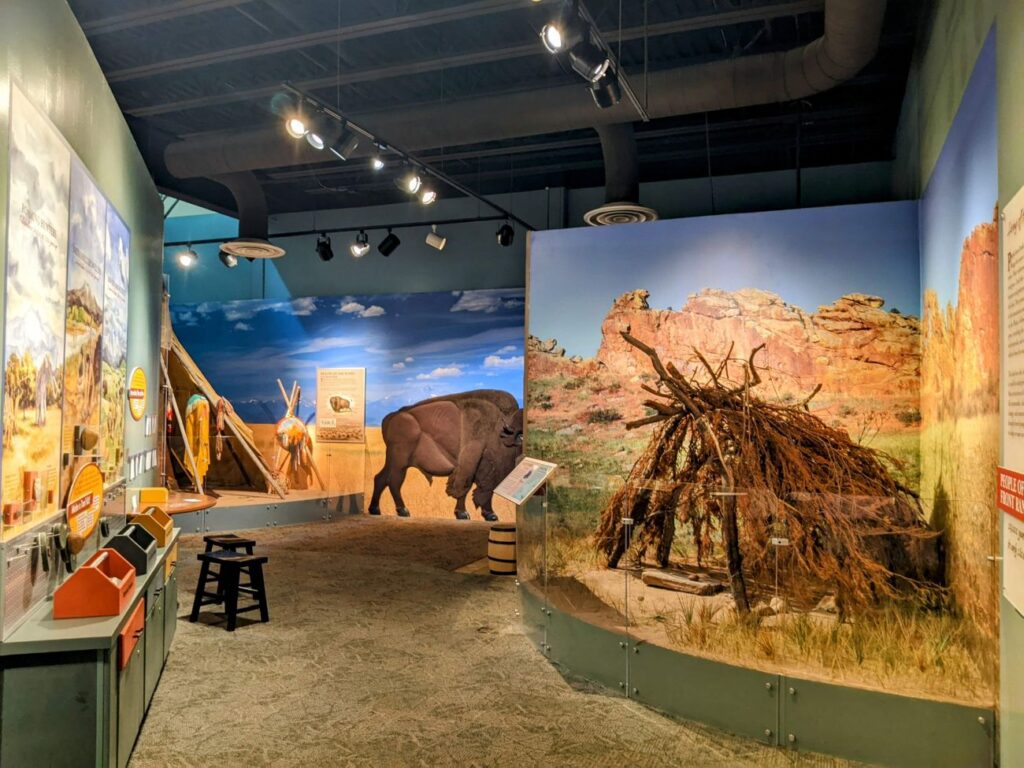
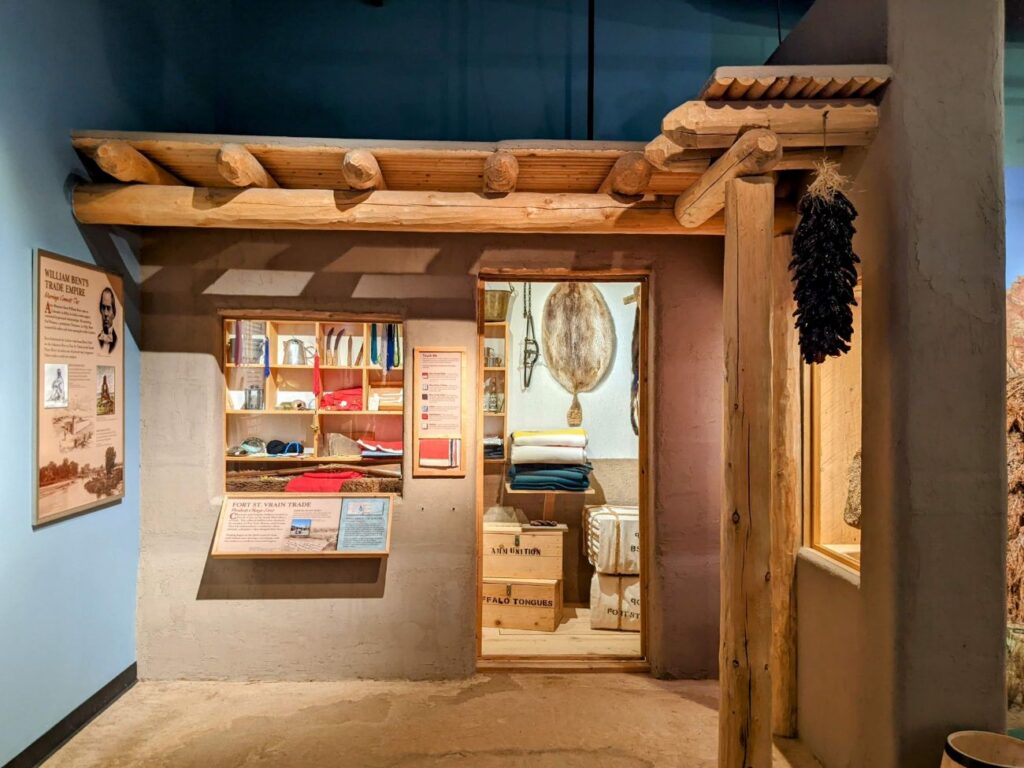
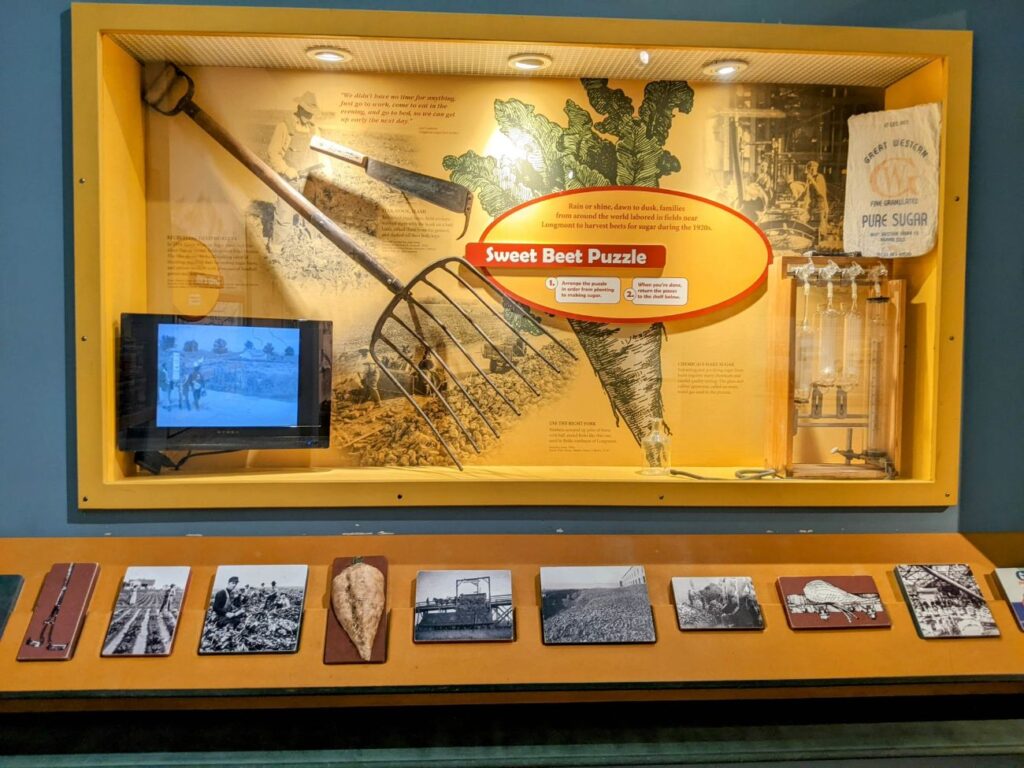
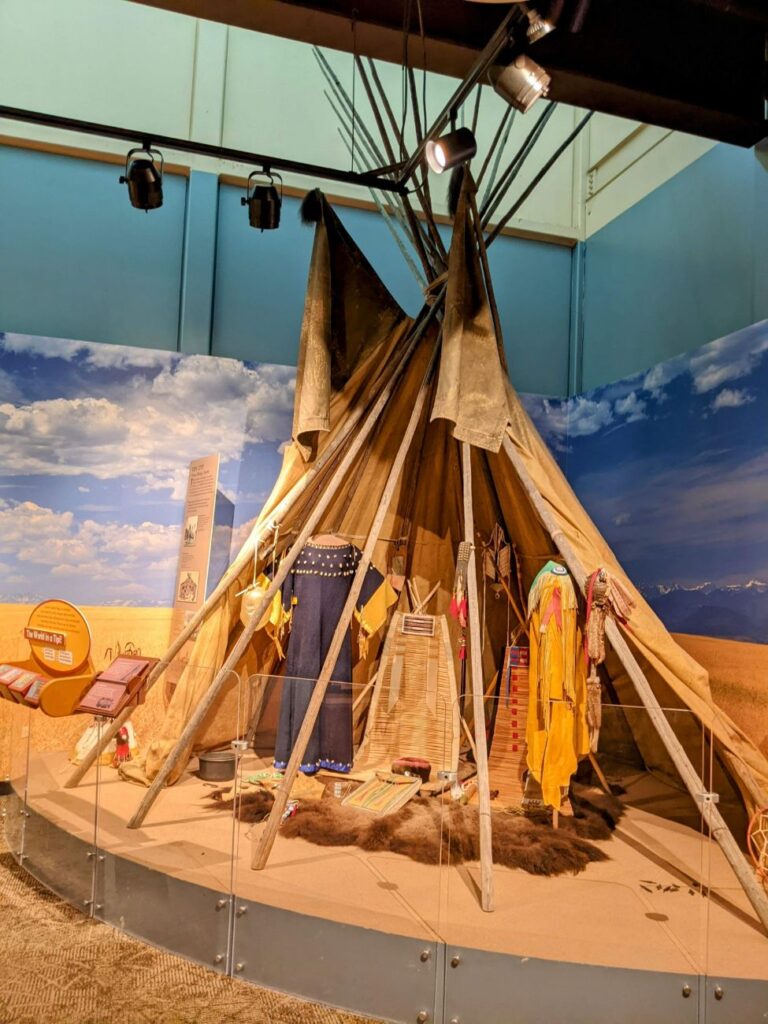
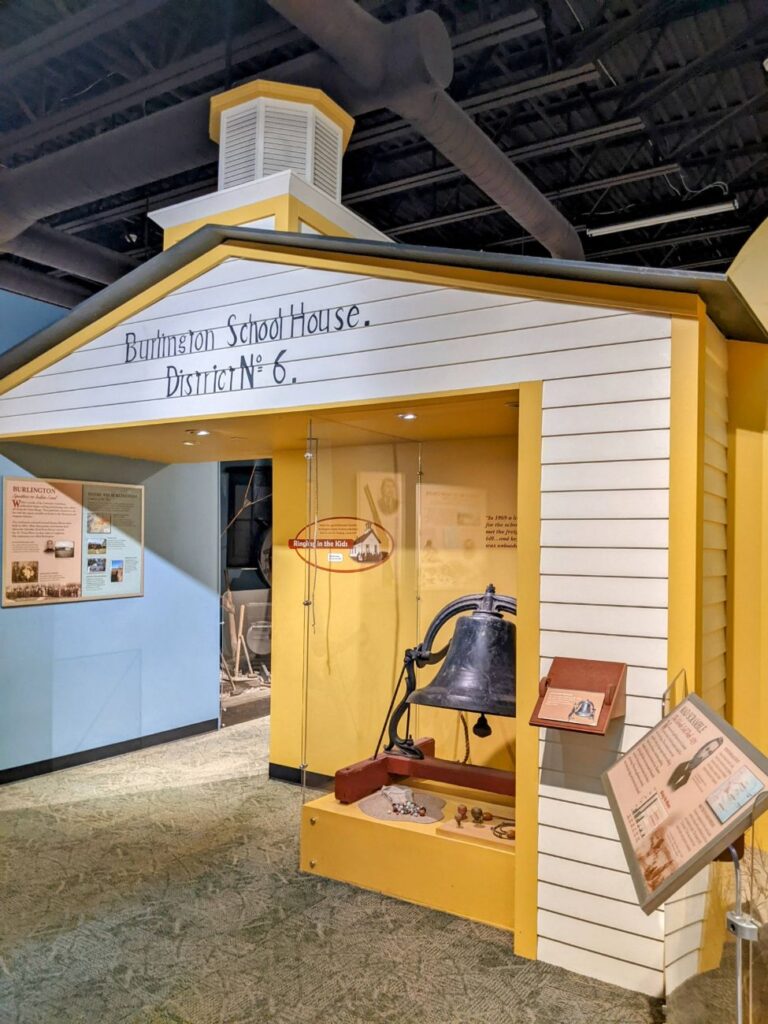
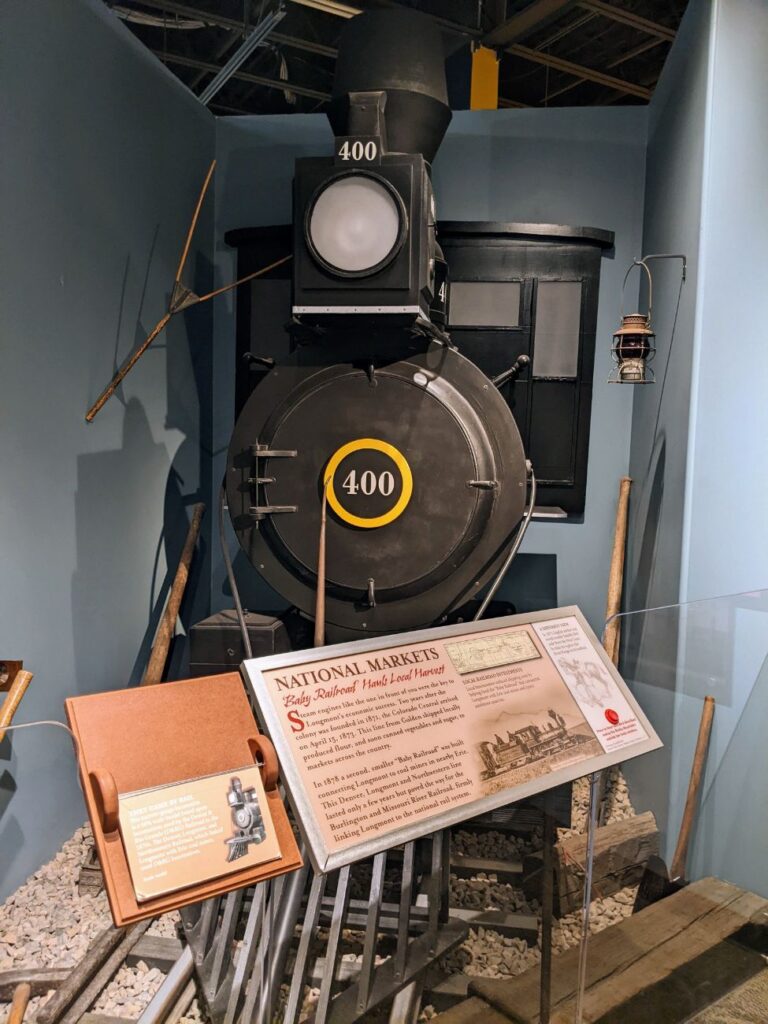
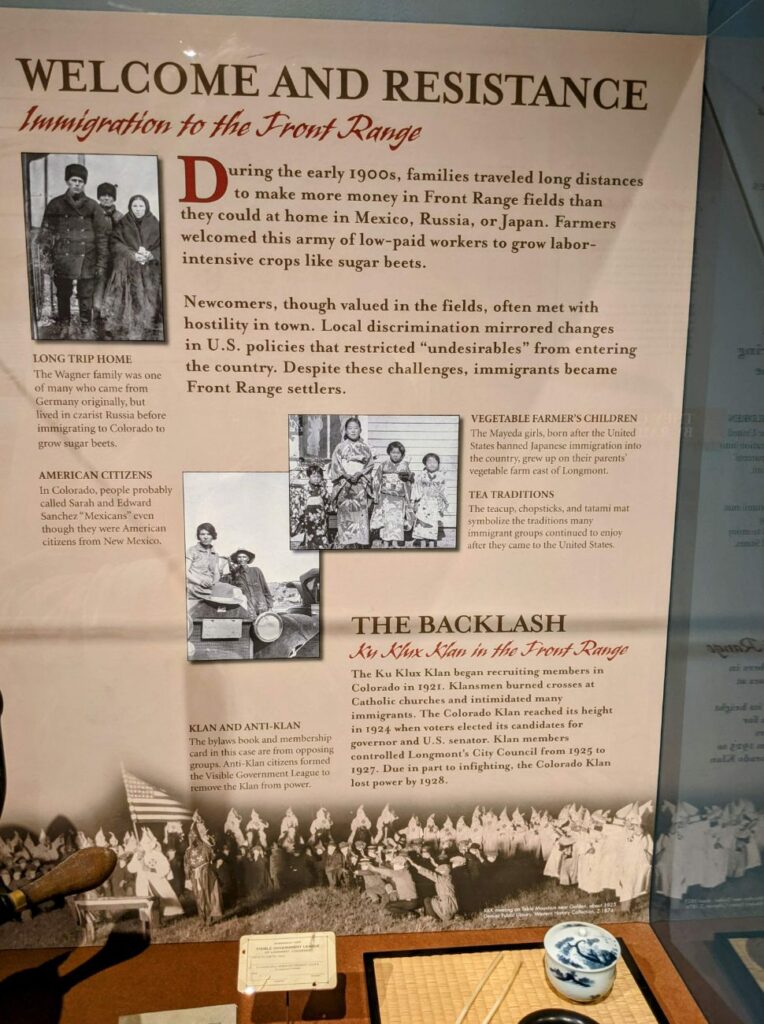
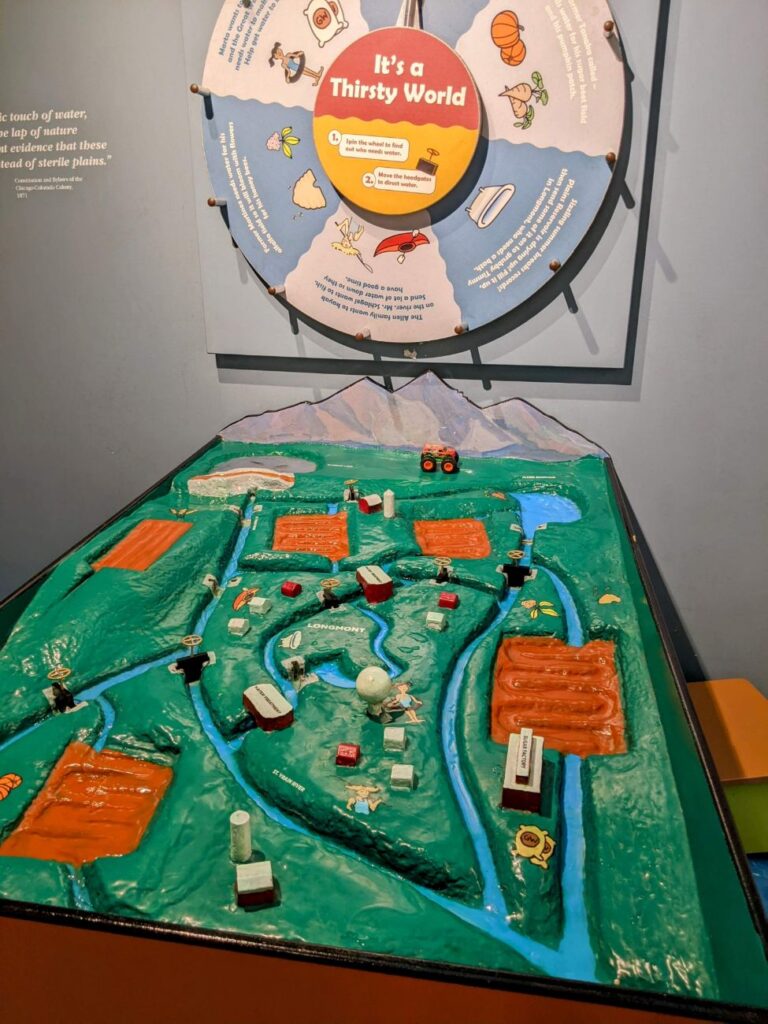
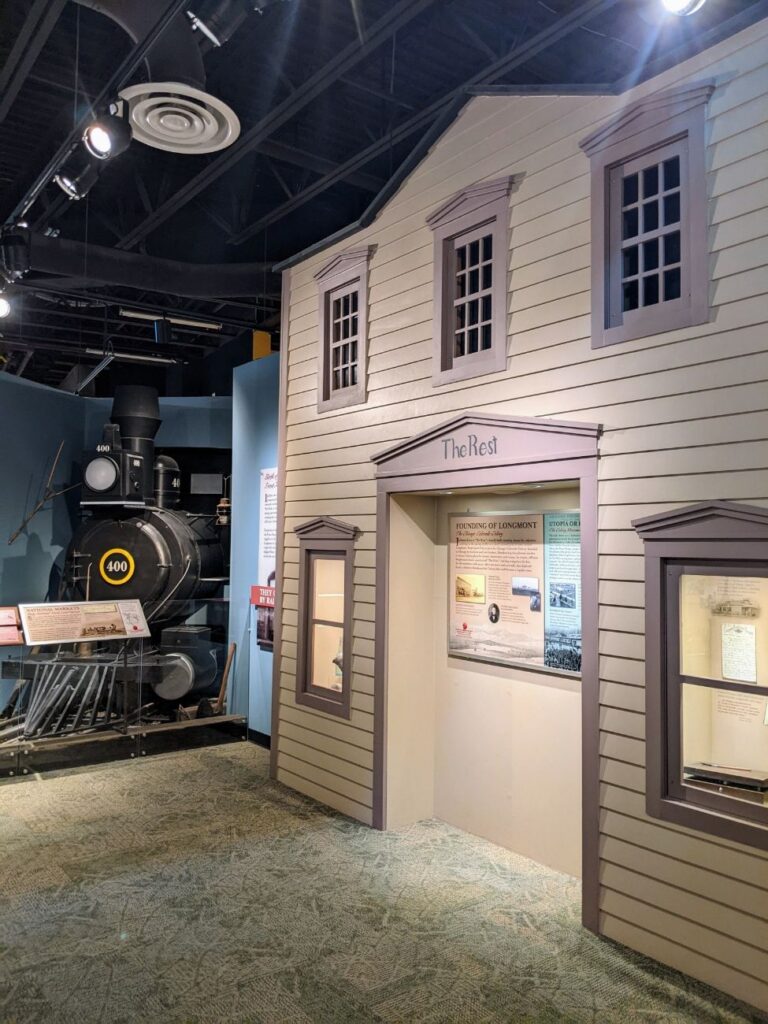
Art Gallery
The art gallery features Duality: Contemporary Works by Indigenous Artists, curated by Gregg Deal, who I first heard about in the El Pueblo History Museum. The gallery features some of his art, plus several other artists.
One of his larger sculptures is featured on one side, and a very cool sand painting right on the floor on the other. (Don’t touch! When I was there, the artist looked like she was touching up a section with a tiny handprint in it.) There’s super inventive pottery, clothes, and more – I was enthralled with the heavy-metal beadwork on a traditional cradleboard. This gallery is definitely a must-see if you’re in the area.
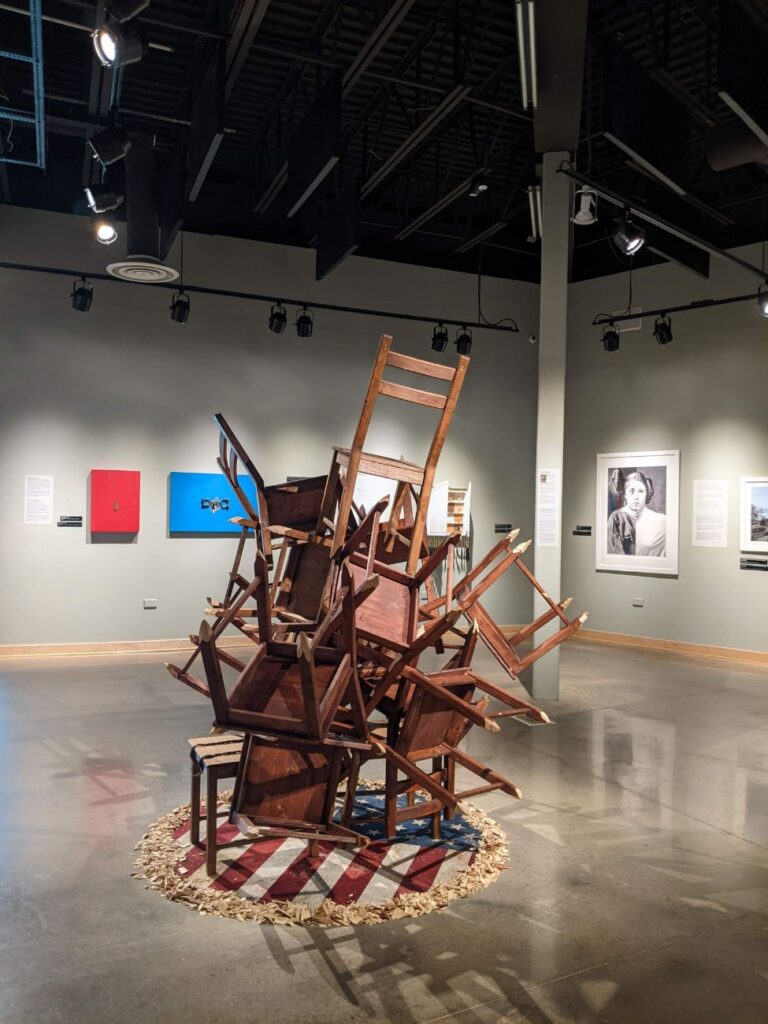
featuring school chairs & hair braids
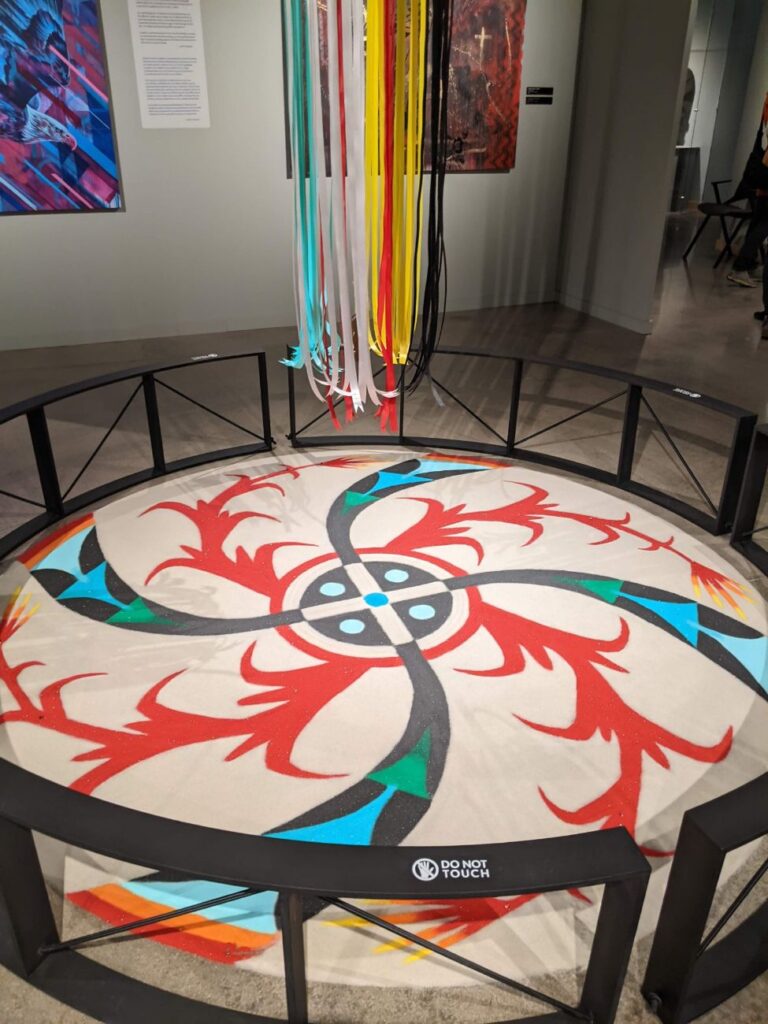
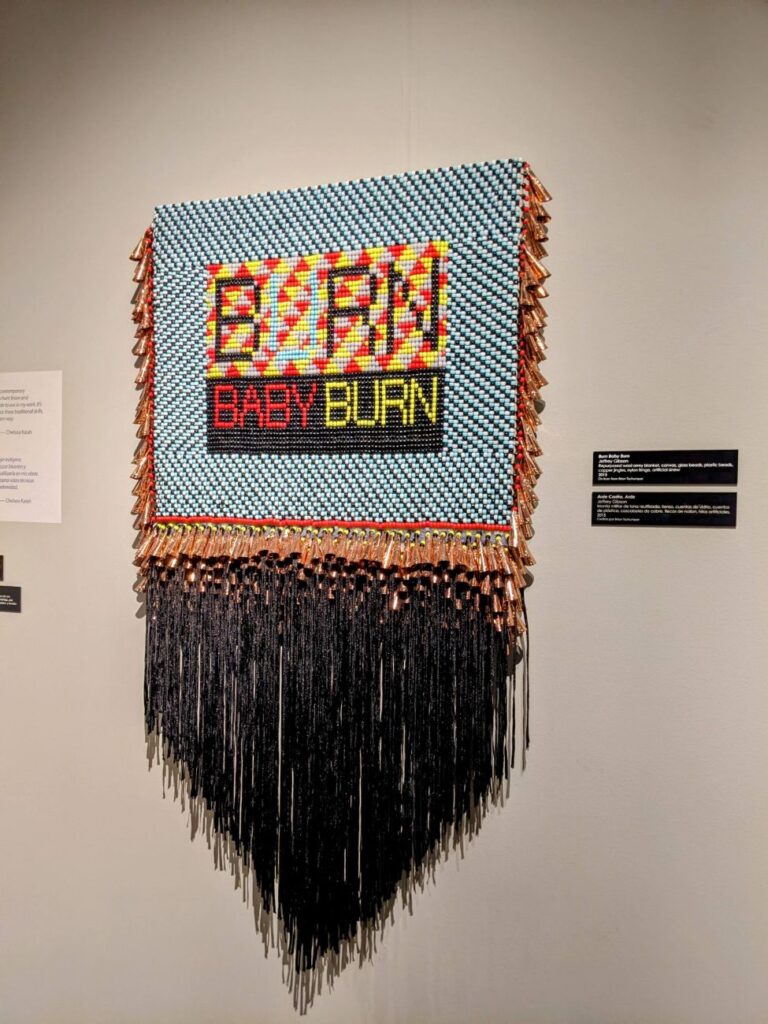
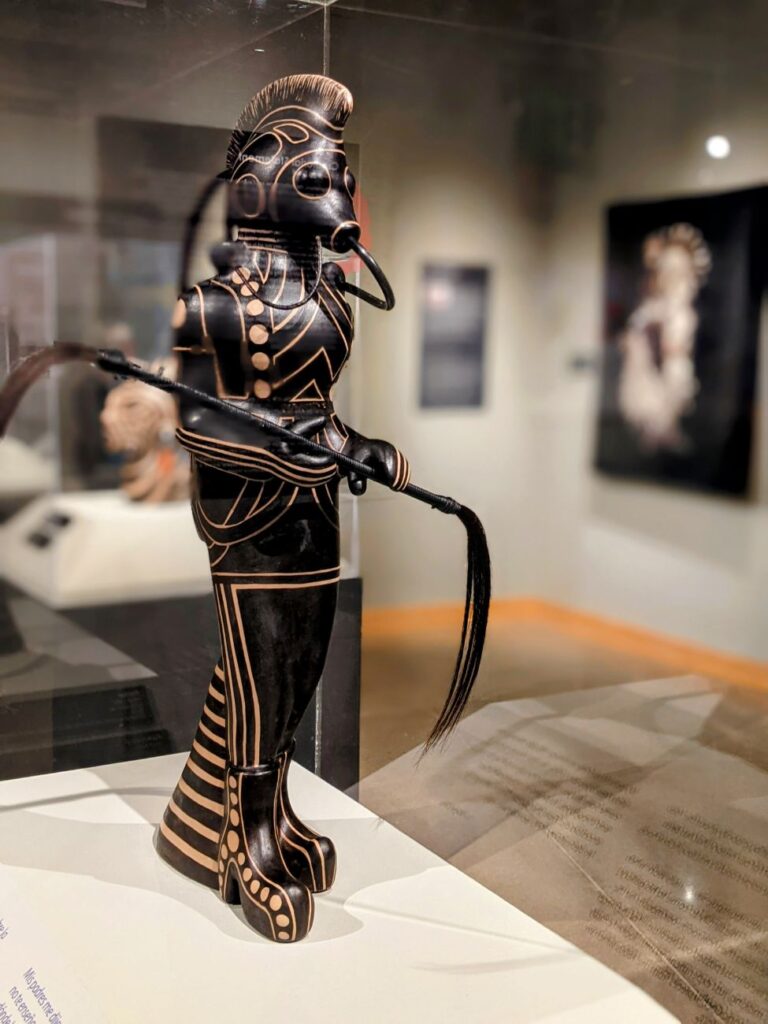
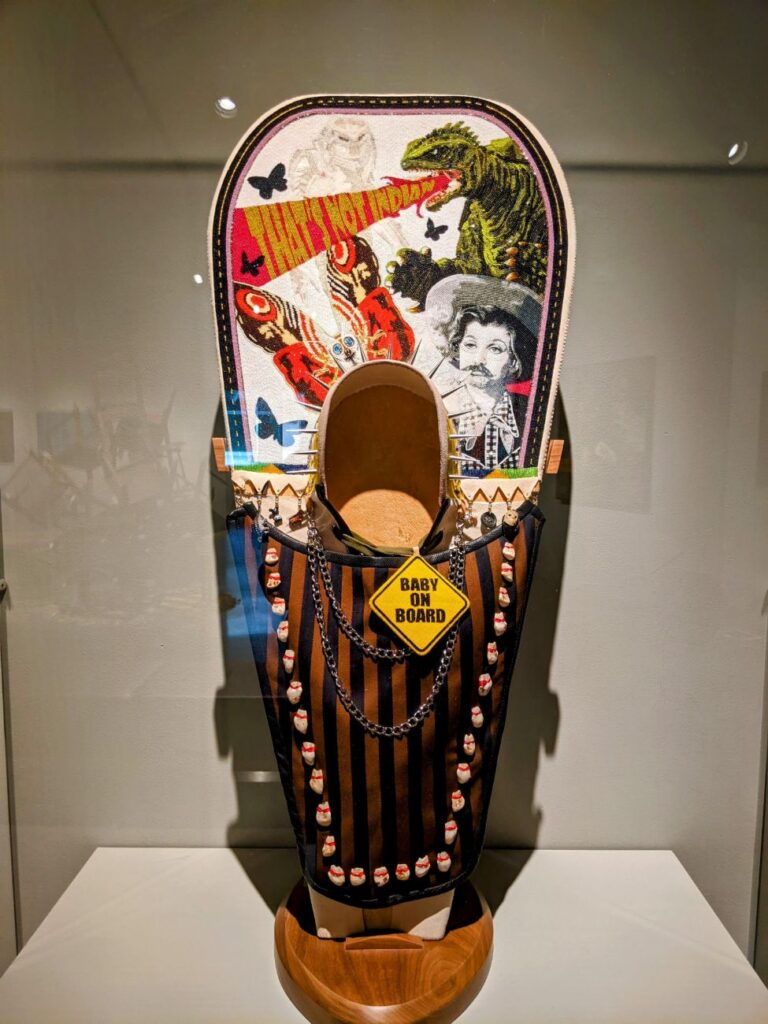
Treehouse
Upstairs in a tower room is a fun treehouse for kids. (There was a kid in it, so no pictures.) Windows give panoramic views of the area and play tables offer more activities for kids. Also tucked into a corner on the stairs is a moon rock from the 1971 Apollo mission, which is easy to miss!
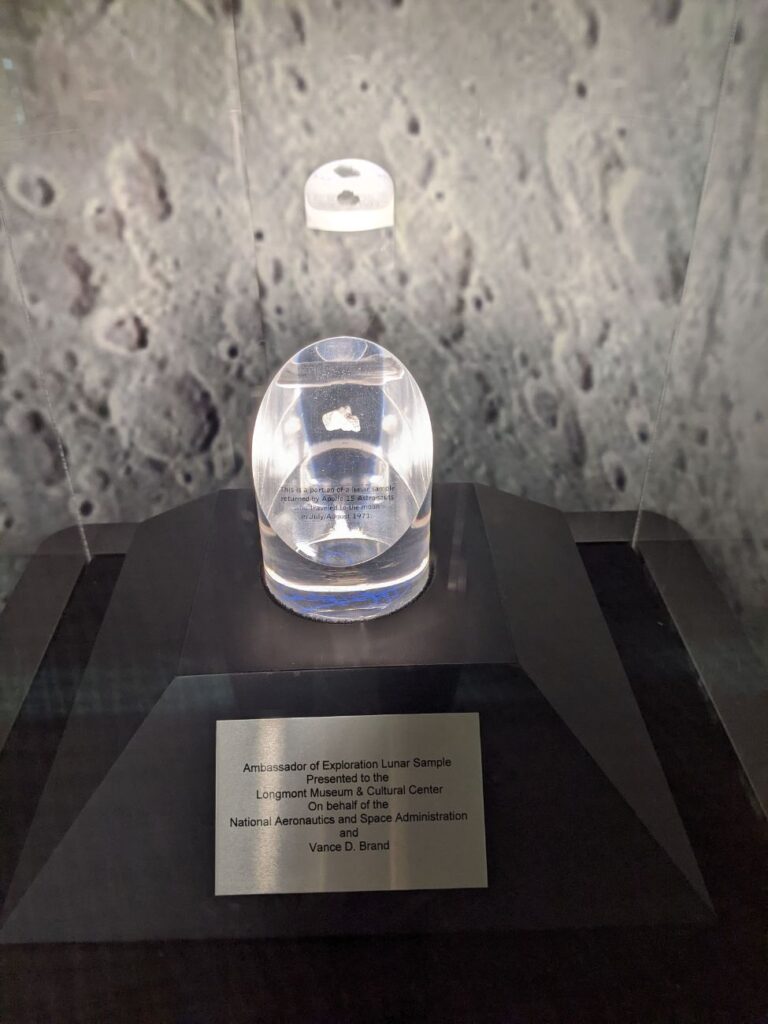
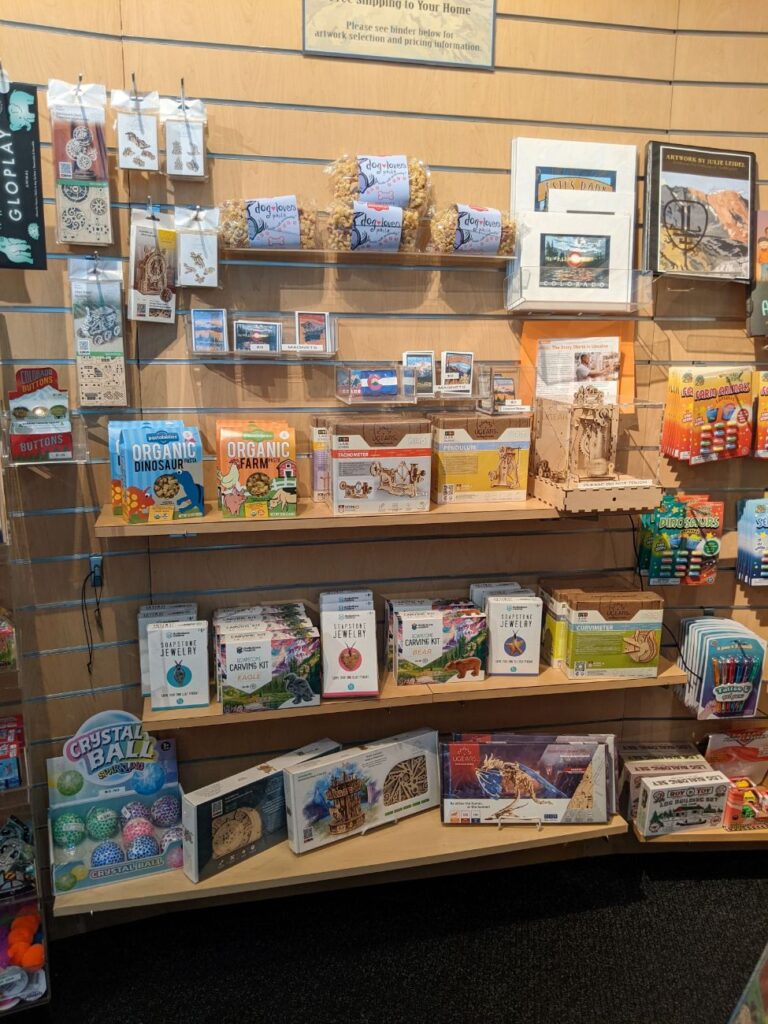
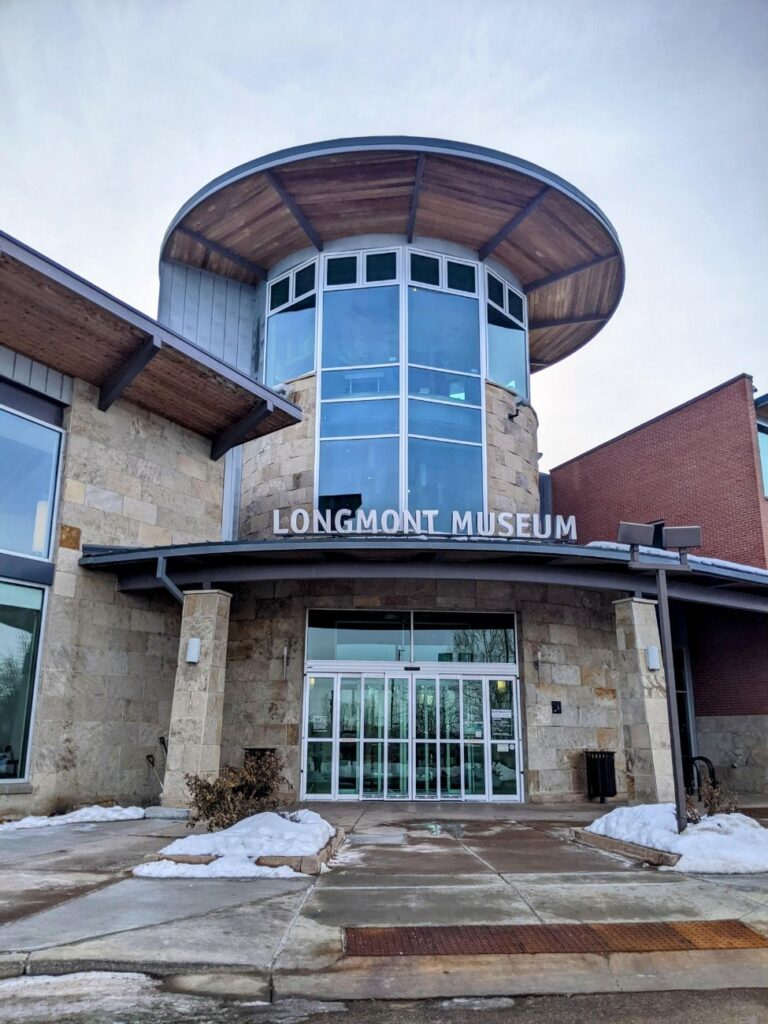
Hours & Admission
The Longmont Museum is open 9-5, Monday-Saturday, and 1-5 on Sunday. It took me about 45 minutes to tour.
Admission is $8 for adults, $5 for students & seniors, and free for kids 3 and under. Free admission is offered every second Saturday of the month, which I accidentally stumbled into.
Longmont Main Street
Longmont itself is nice to walk around (though it had a distinct “agriculture” smell), and they have a very nice Main Street area with plenty of parking and tons of shops and restaurants if you’re in the mood for dinner by this time. I ate a late lunch/early dinner at The Roost and had a pretty good meal.
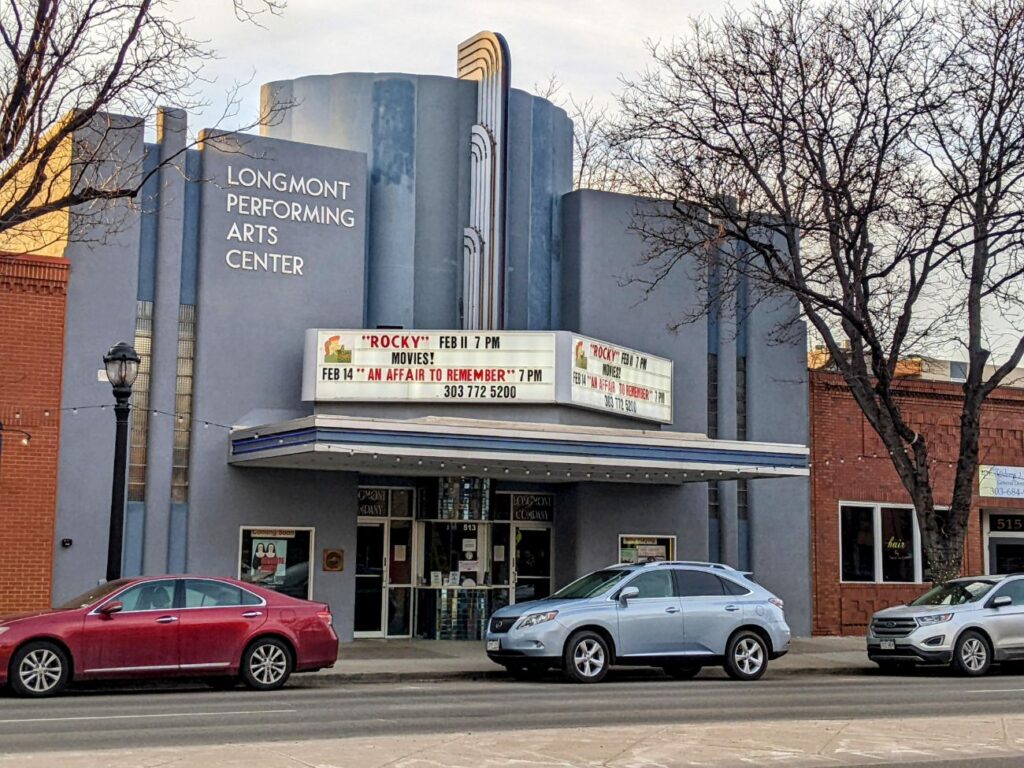
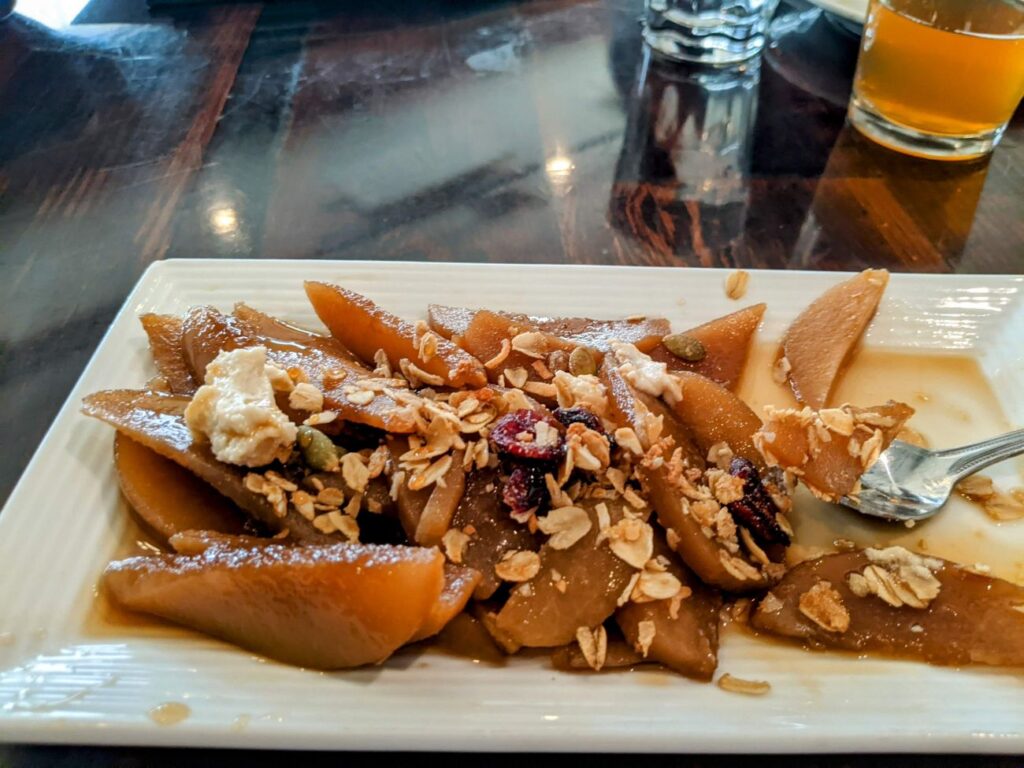
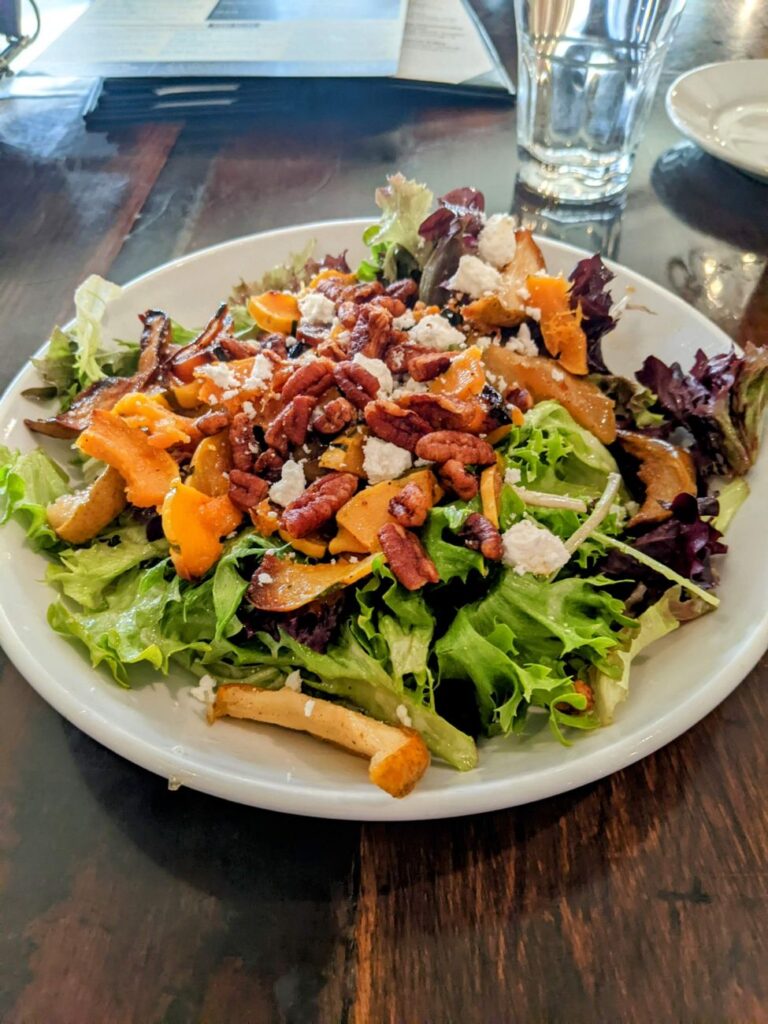
BONUS: A Walk Around Boulder
The weekend before this museum day, I took a walking tour around Boulder via Voice Map, a smartphone app. The app is free, and the tour itself costs $5. I plugged in my headphones and got a great overview of downtown Boulder, as recorded by a local!
The tour takes you down Pearl Street, past the art-deco courthouse, the Boulder Theater, the Dushanbe Tea House, the bike/walking paths on Boulder Creek, the fancy library (which has a cafe and a shop), and the old Highland City Club. The tour was super informative, and you can take as much time as you want to explore each spot. I took the opportunity to duck into the shops on Pearl and eat lunch at the tea house during my walkabout.
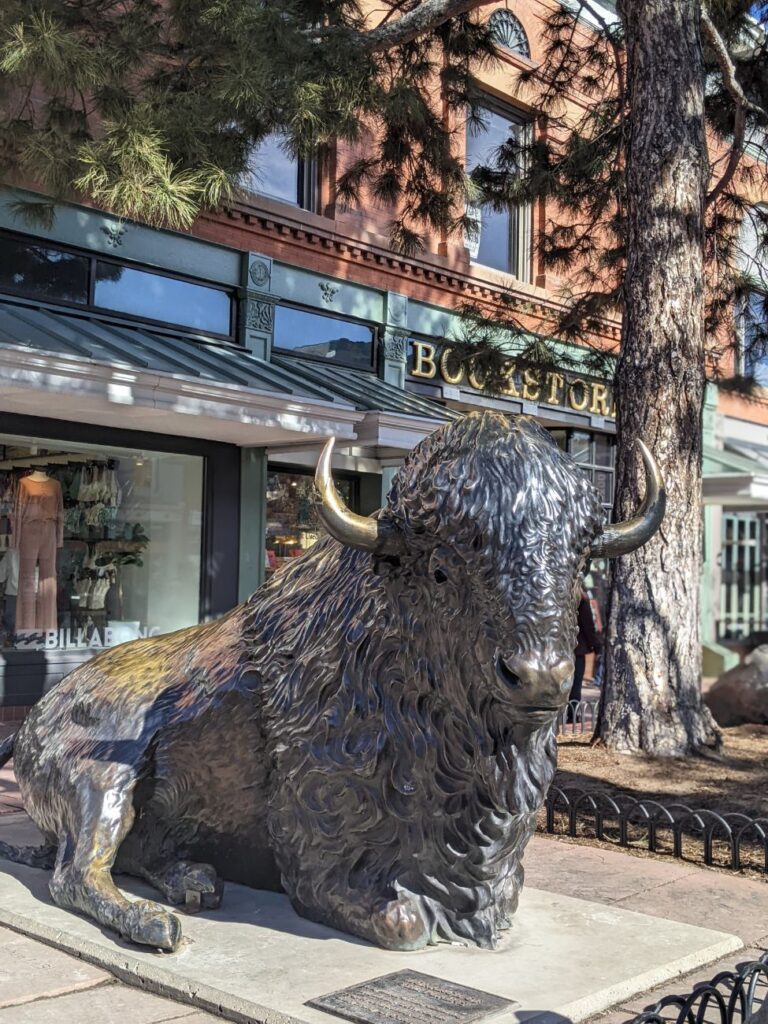
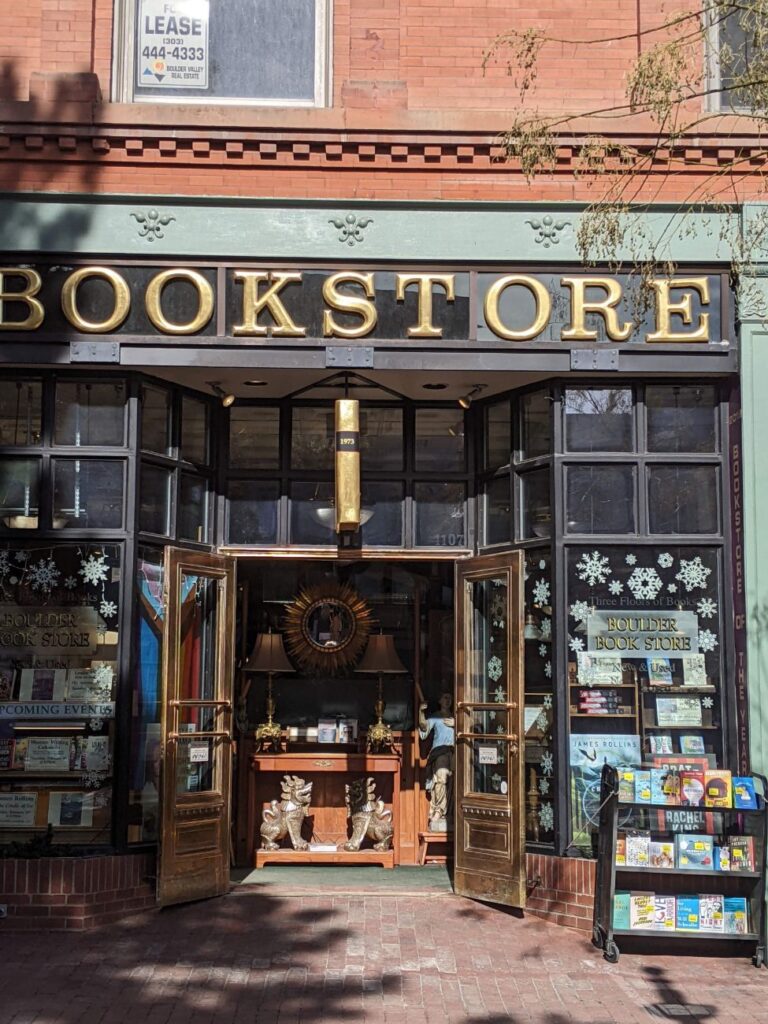
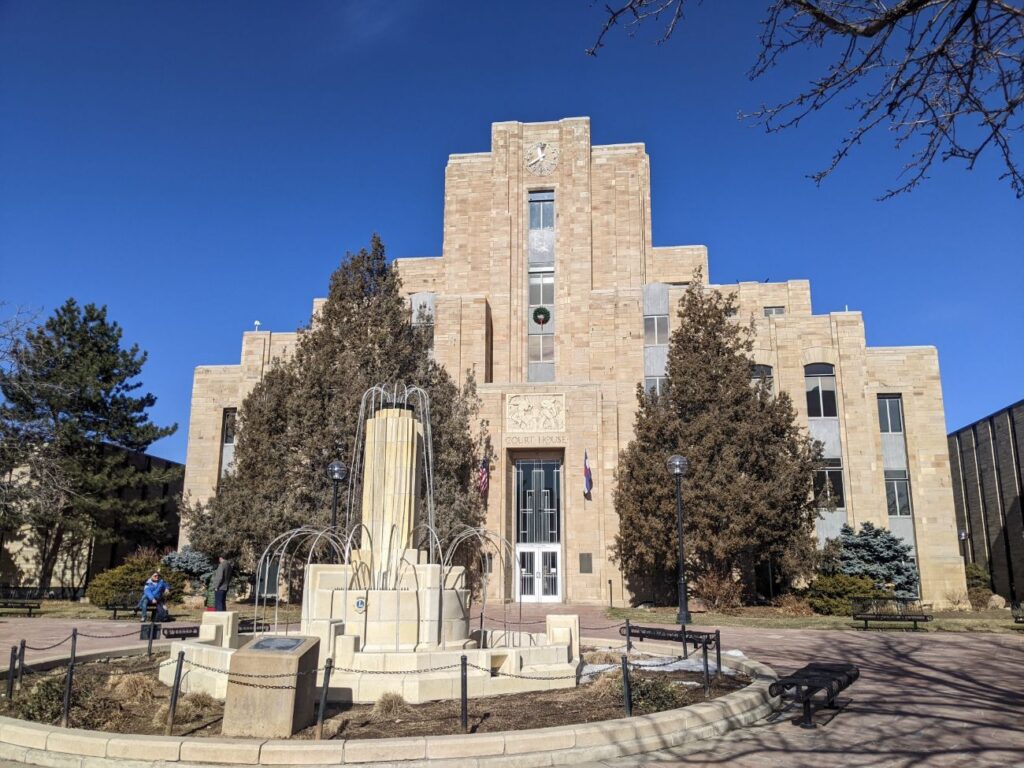
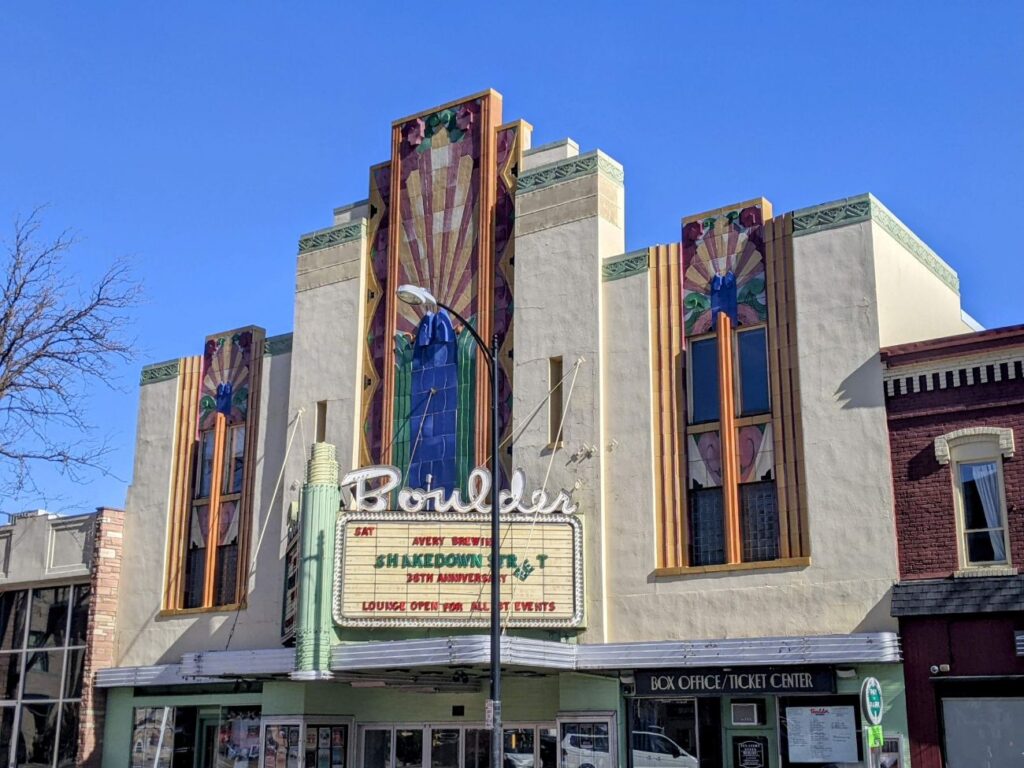
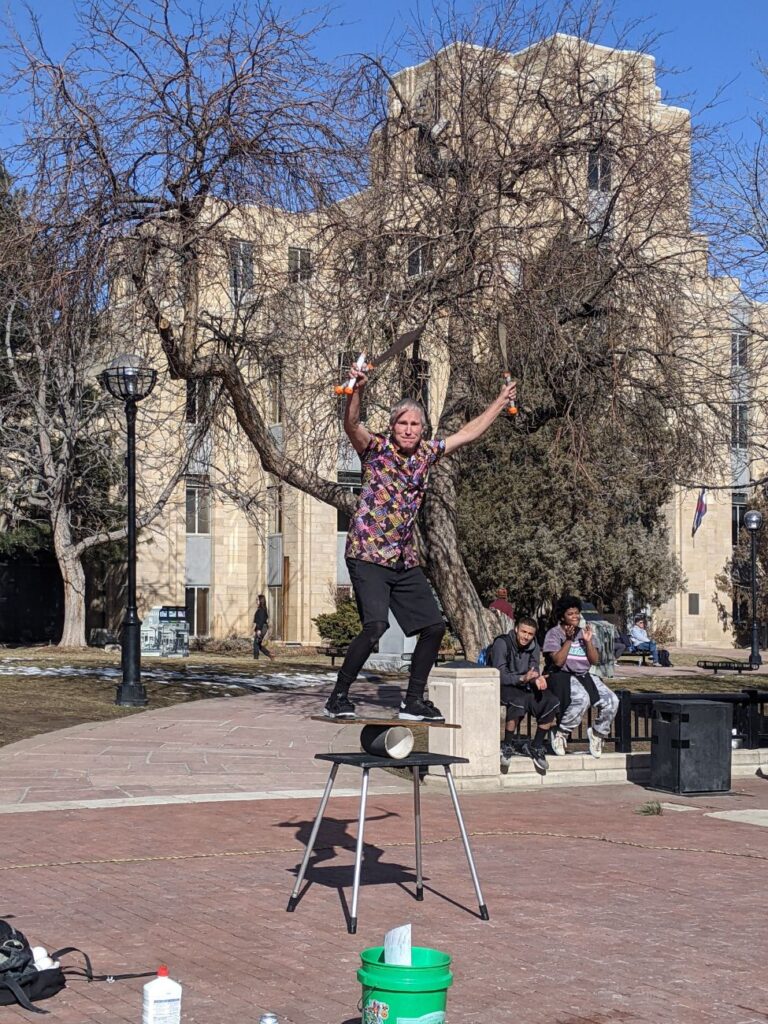
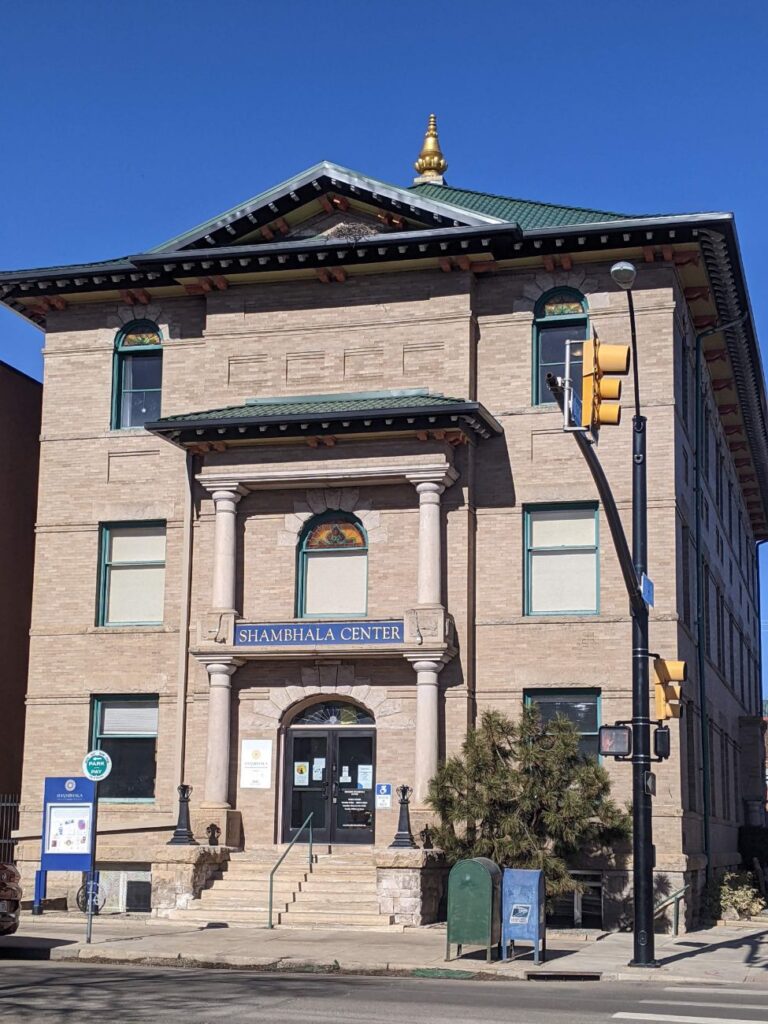
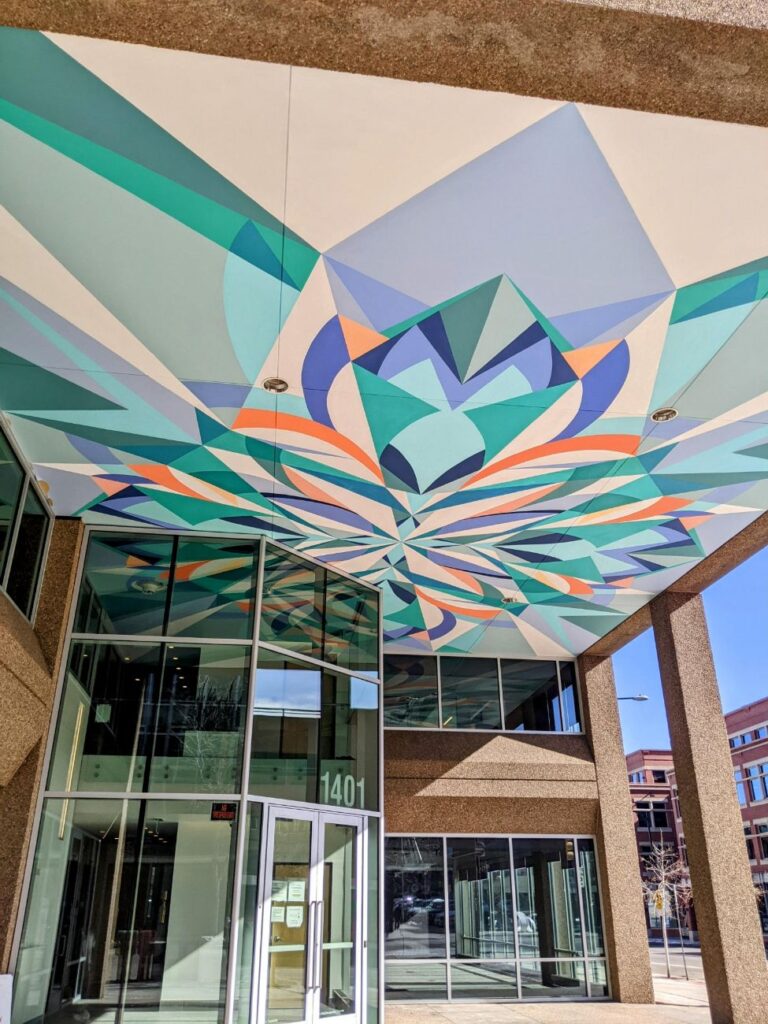
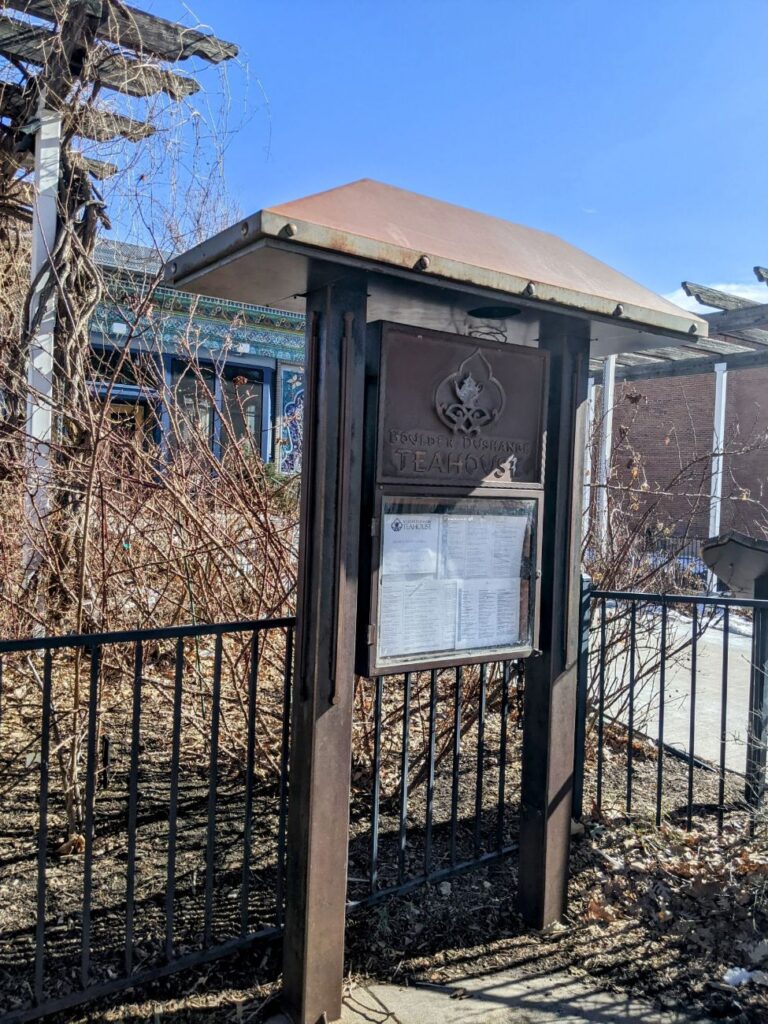
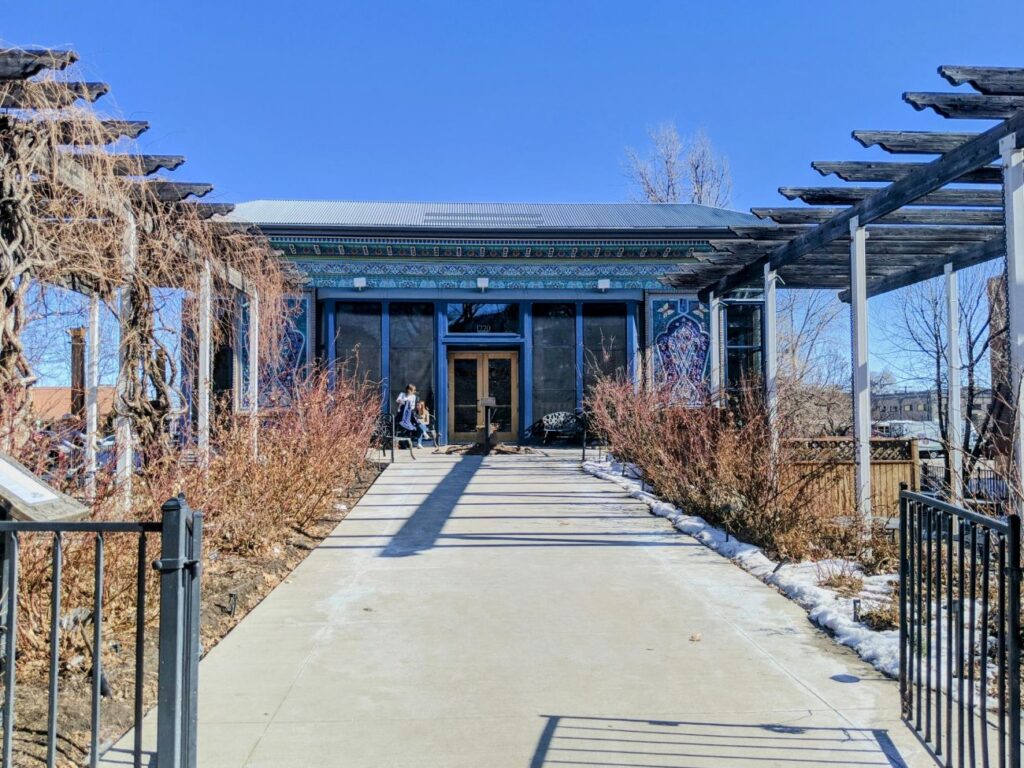
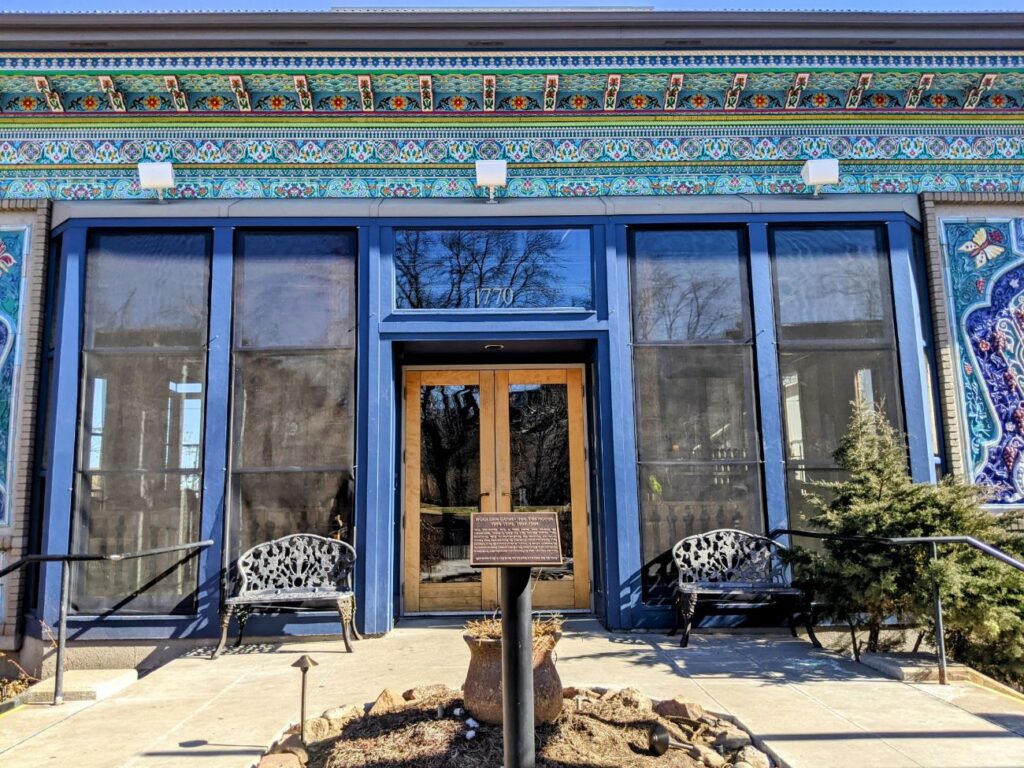
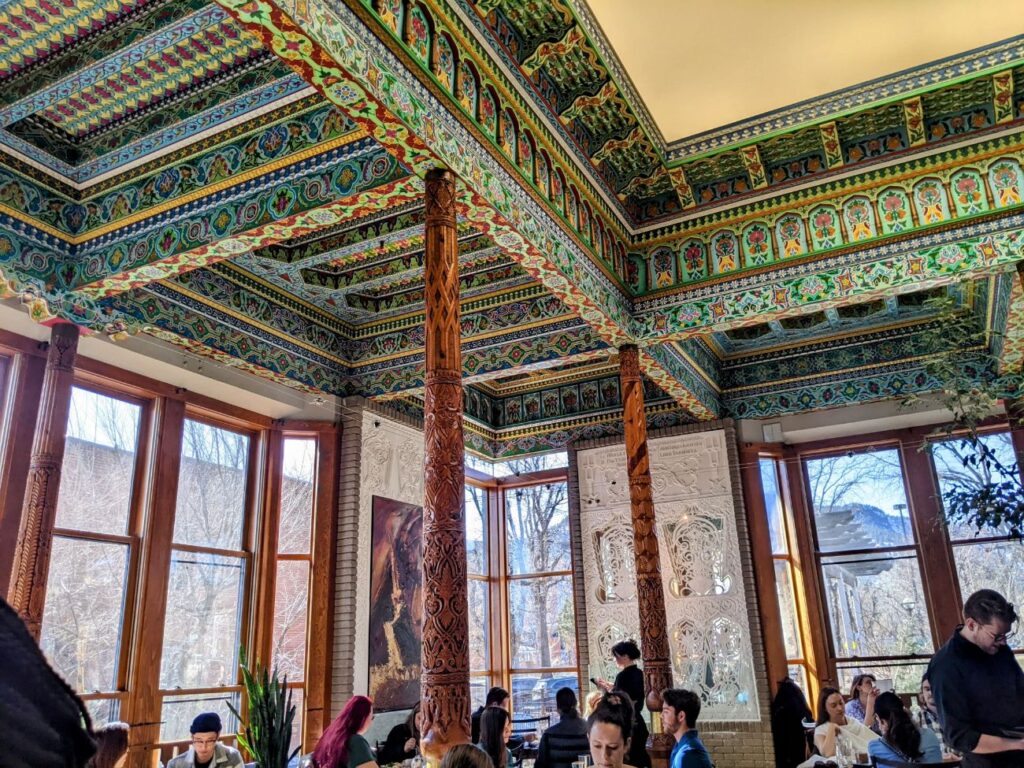
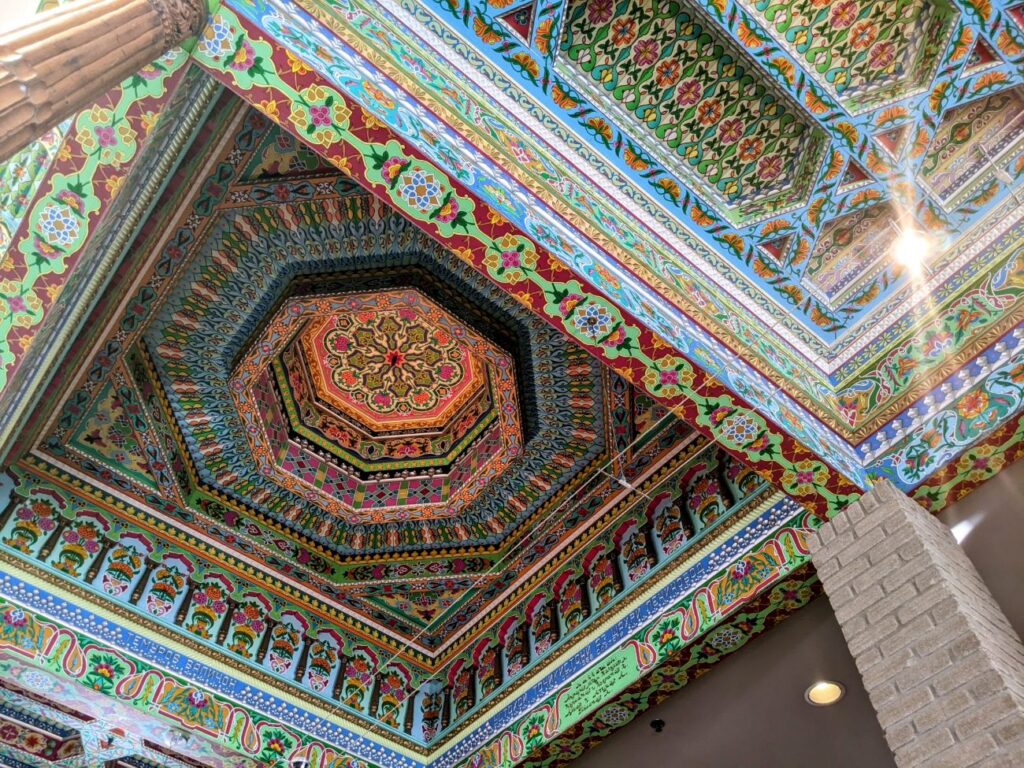
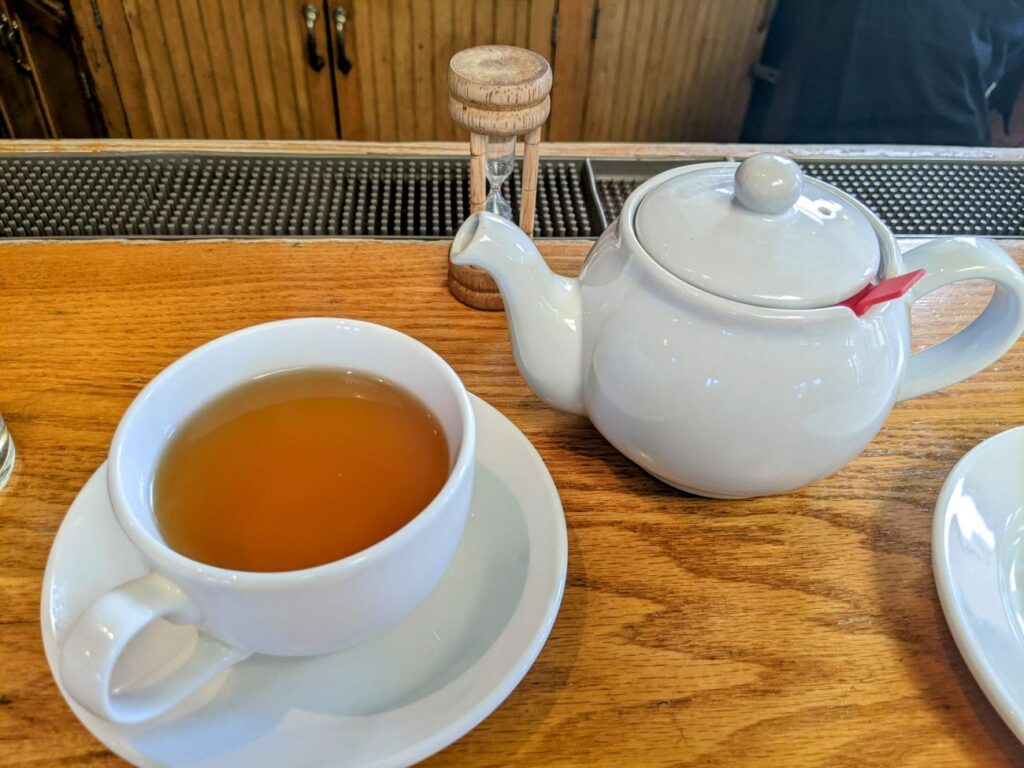
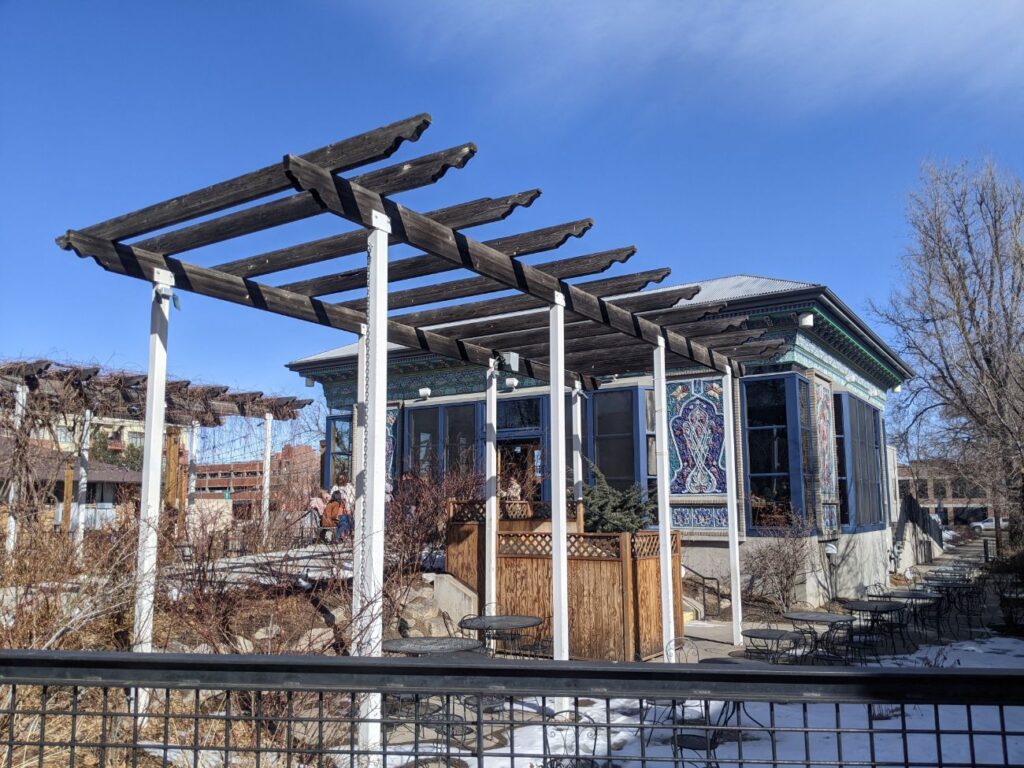
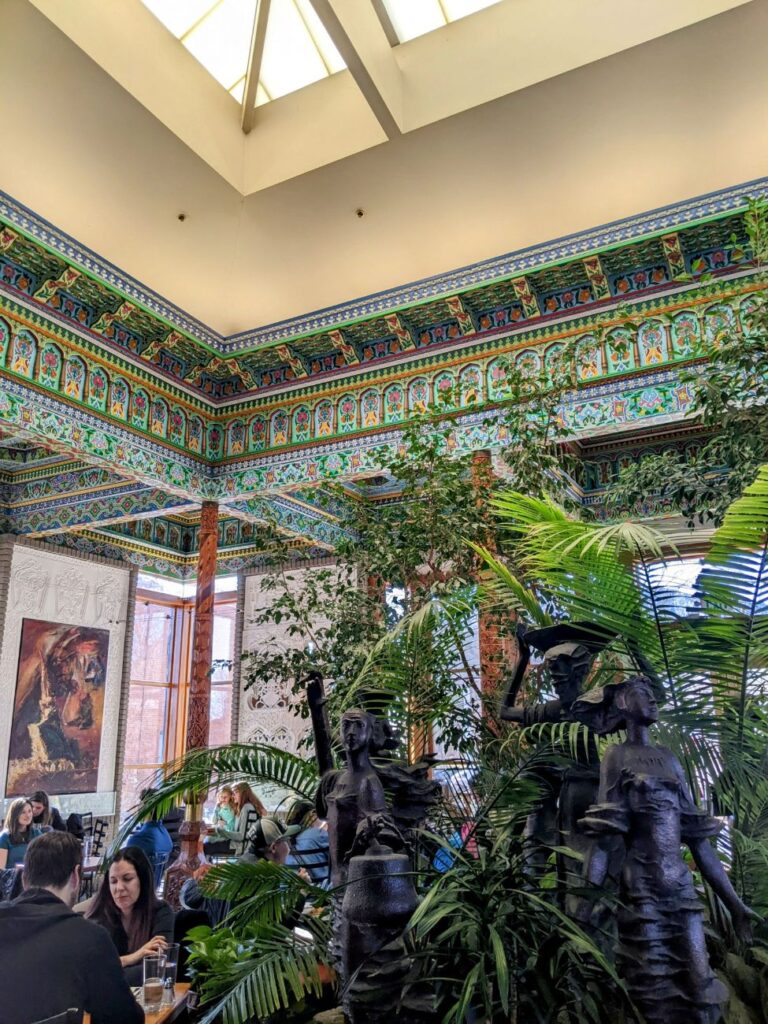
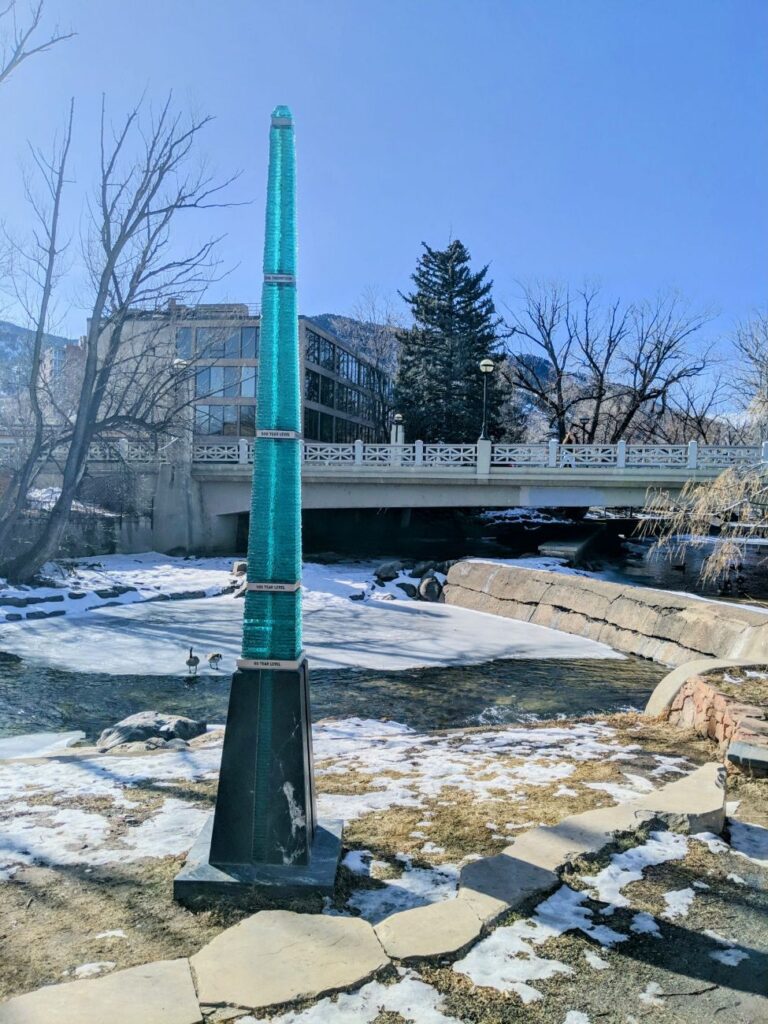
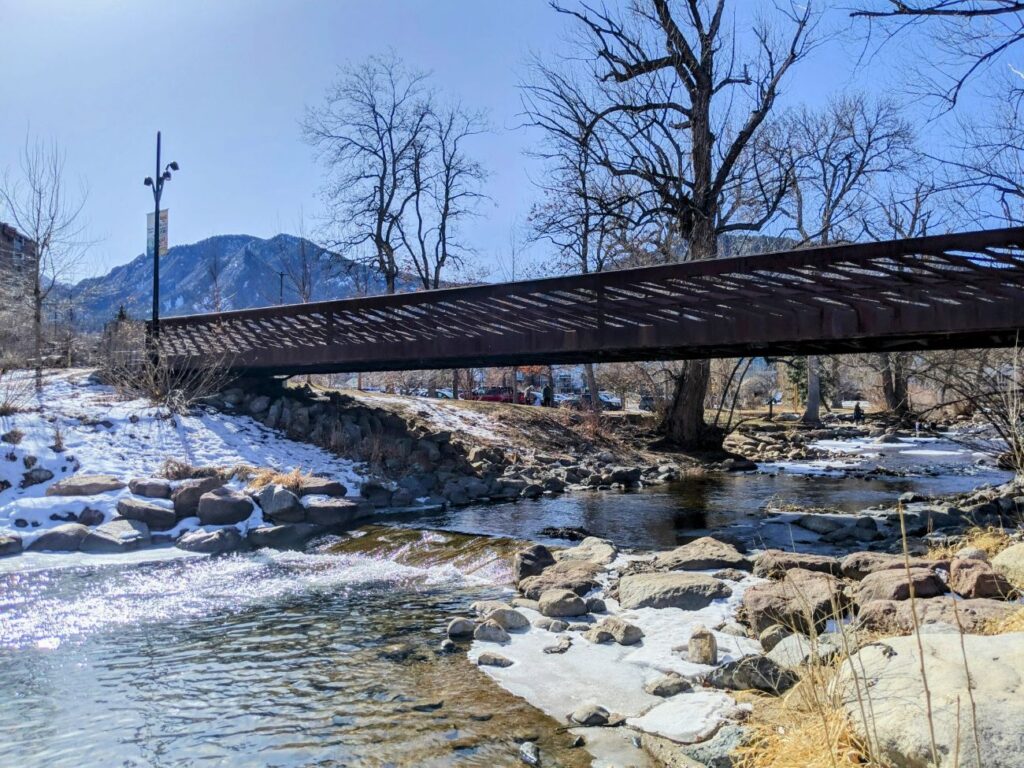
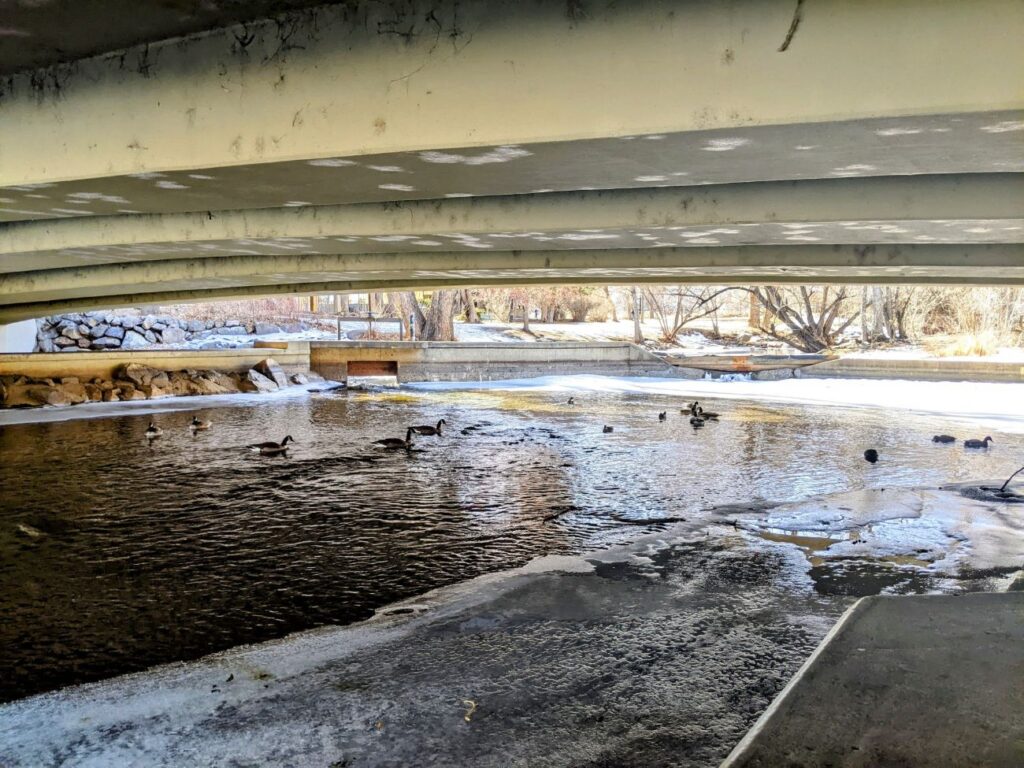
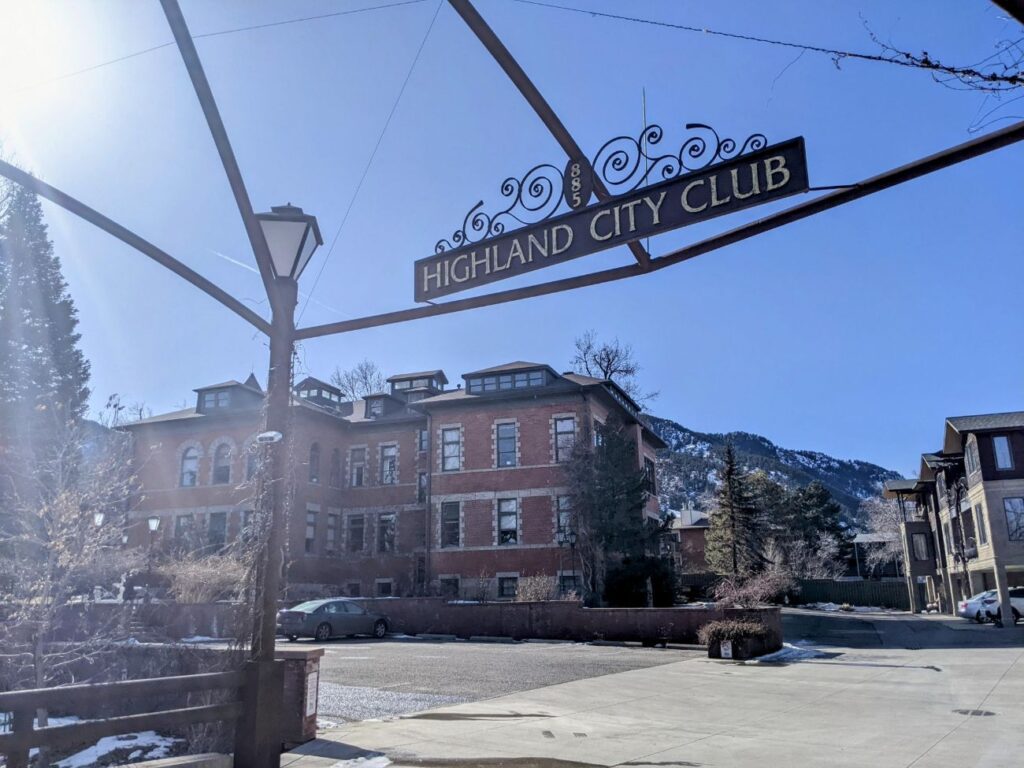
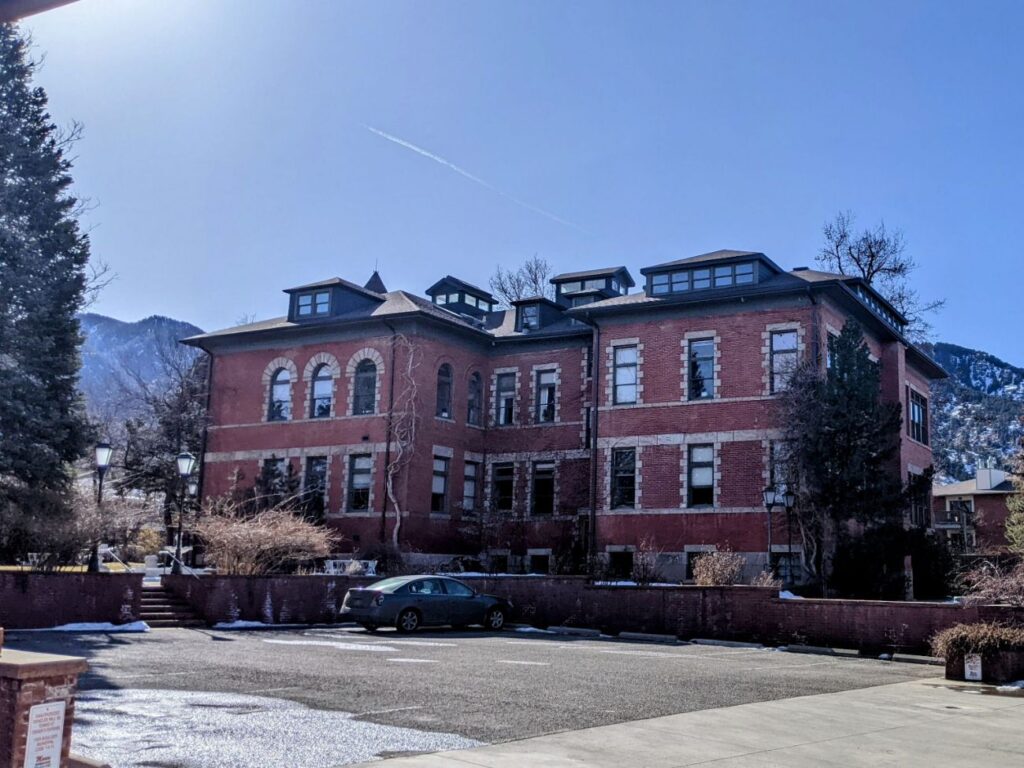
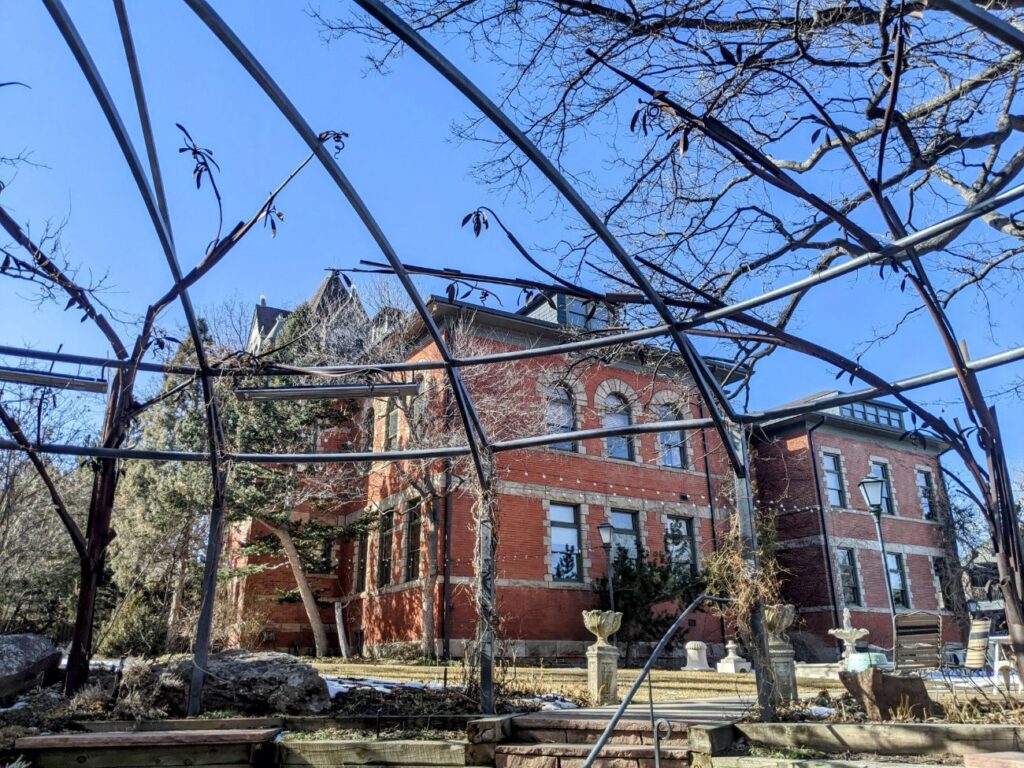
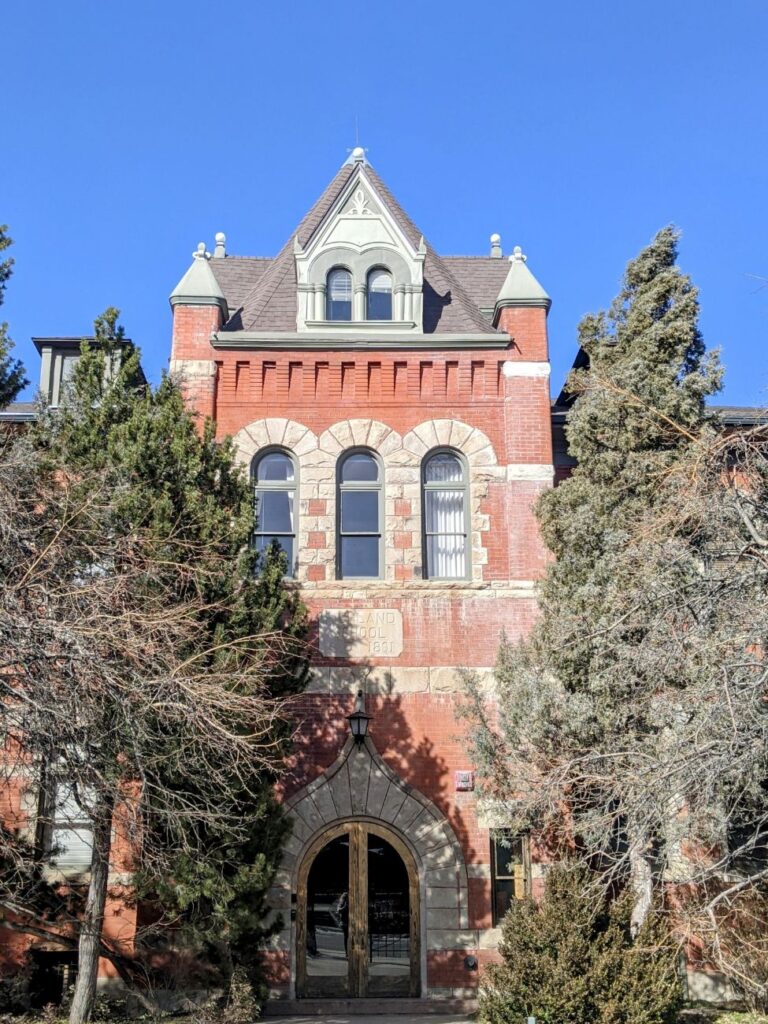
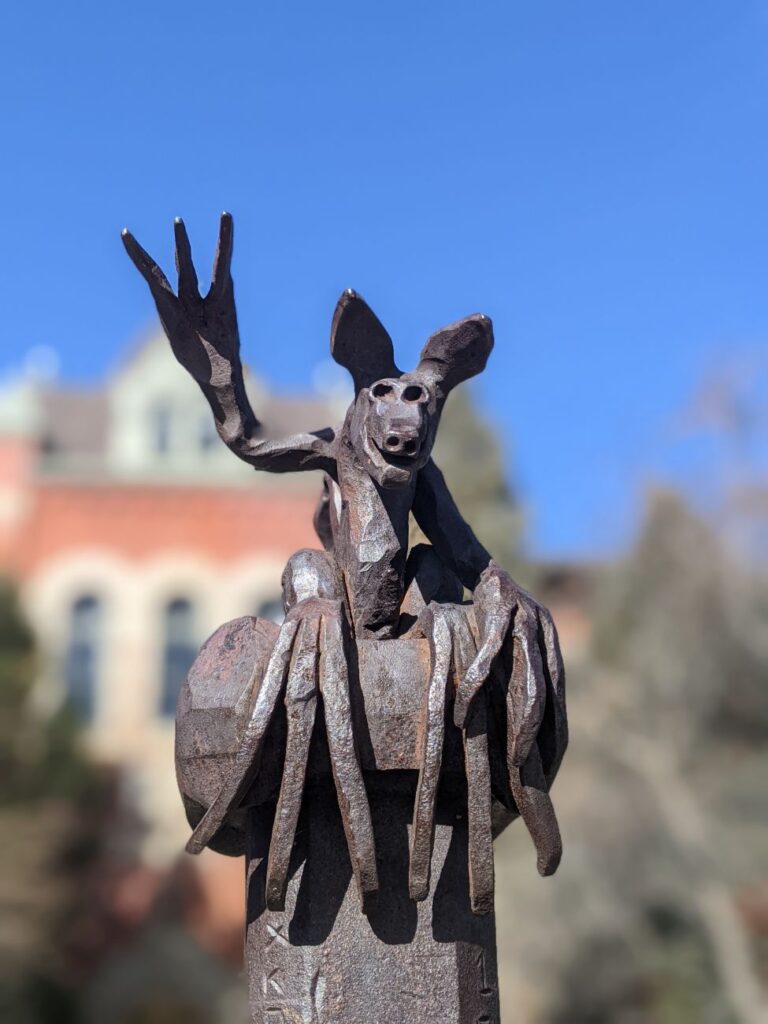
Be First to Comment